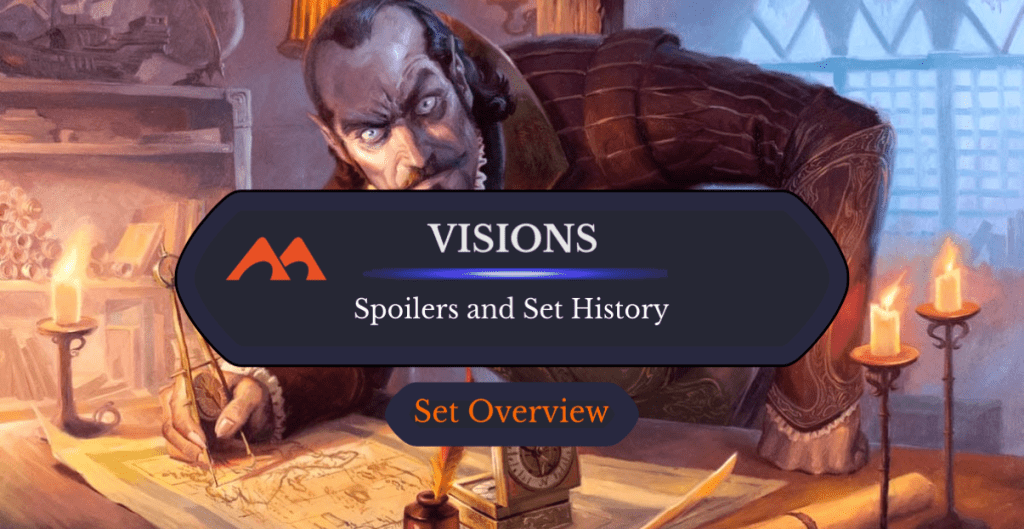
Vampiric Tutor | Illustration by Lucas Graciano
The first decade of Magic: The Gathering set design looks starkly different from what we know and love three decades later. Power differences between rarities were steep; Visions is often hailed as the first set to release playable commons. Indeed, the average power level of a card from Visions outweighs most others from 1997. During playtesting, designer Mark Rosewater advocated to increase power and decrease casting costs across many of the spells in the set, resulting in several format-defining cards that still see play over 20 years later.
Visions was the tenth ever Magic: The Gathering expansion set, and its original card pool was drawn from Mirage overflow, hence the codename “Mirage Jr.” Visions expanded on the mechanics in Mirage (phasing and flanking), introduced beneficial enters-the-battlefield effects on creatures, and reintroduced cumulative upkeep. Visions’ competitive play also saw the creation of MTG’s first true combo deck, the world-renowned Prosperous Bloom.
What exactly made this such a strong Magic set? What cards from 1997 are still played? Peer back in time with me as we examine Visions!
Visions Basic Info
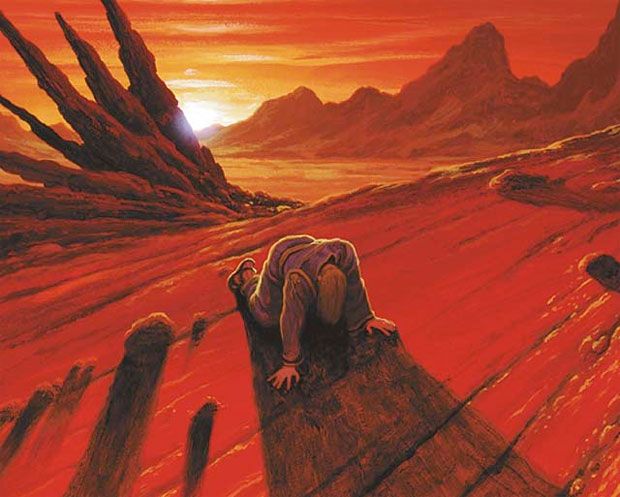
Squandered Resources | Illustration by Romas Kukalis
Set Details
| Set Symbol |  |
| Set Code | VIS |
| Number of Cards | 167 |
| Rarities | 62 commons, 55 uncommons, 50 rares |
| Mechanics | Cumulative Upkeep, Phasing, Flanking |
Important Dates
| Event | Date |
|---|---|
| Release Date | February 3, 1997 |
| Pre-Release Dates | January 11, 1997 |
| Available on Draftsim's Draft Simulator | No |
| Available on Arena Tutor | No |
About the Set: The Story
Visions continues the story of the nations of Jamuraa’s struggle against the evil shaman Kaervek. The state of Femeref has been destroyed, leaving only Suq’ata and Zhalfir to stand in his way. Teferi uses his guile to convince Jolrael, Kaervek’s former ally, to set a trap for Kaervek’s forces and mount an assault on his fortress. Sensing this, Kaervek leaves his fortress to confront Teferi directly.
The Weatherlight is summoned for the ensuing battle. During the fight, Mangara ends the conflict by trapping Kaervek within the Amber Prison.
Visions Mechanics
Visions marked the return of cumulative upkeep and expanded on phasing and flanking. It also marked the first time “enters the battlefield” effects were used on creatures.
Phasing
Phasing is one of the wonkier mechanics from Magic’s early years. Permanents “phase out” for a number of reasons, and then phase back in before their controller's next untap step. While phased out, permanents are treated as though they don’t exist; they can’t be targeted, and their abilities and effects cannot be triggered or activated. Phasing was both a protective mechanic for your creatures and temporary removal for opponents’ permanents.
Phasing is actually two mechanics: the “phasing” keyword ability, which appears on creatures like Breezekeeper, and the direction to “phase in” or “phase out” permanents like on Shimmering Efreet. Creatures with the phasing keyword phase out and back in before each untap step during your upkeep; each phasing permanent currently phased in phases out, and vice versa.
Phasing works differently from flickering or blinking a creature. A phased-out creature doesn’t lose any counters it had, and it takes any auras or equipment attached with it. The card is still the same version of itself before it phased out, it just couldn’t be affected by anything for the duration. Because it never leaves and reenters the battlefield, ETB abilities aren’t triggered by a creature phasing in.
While general phasing has gone by the wayside, phase out made a return in Commander 2017 with Teferi's Protection. It’s returned several times since then as a more modest form of protection and removal.
Flanking
Flanking was a semi-common ability for knight creatures in Magic’s infancy. Creatures with flanking gave -1/-1 to any non-flanking creature blocking them. Every creature with flanking, with the exception of Old Fogey and Sidewinder Sliver, is a knight mounted on horseback or a centaur of some kind. The ability represented a creature’s speed or height advantage in combat.
Flanking ranks at a 7 on the Storm Scale, Mark Rosewater’s scale for determining the likelihood of a mechanic returning. The way a flanking creature interacts with another flanking creature seems to confuse players.
Six cards with flanking were printed in Visions. They appear in every color but green, with a focus in white.
Cumulative Upkeep
Cumulative upkeep was introduced in Ice Age and re-used throughout Mirage block. Cumulative upkeep works about how you’d expect: Permanents with a cumulative upkeep cost required you pay the cost on each of your upkeeps or get sacrificed. At each upkeep, you add an age counter to the permanent, and pay the upkeep cost a number of times equal to the age counters, proportionally increasing the price to keep the effect on the field as the game progresses.
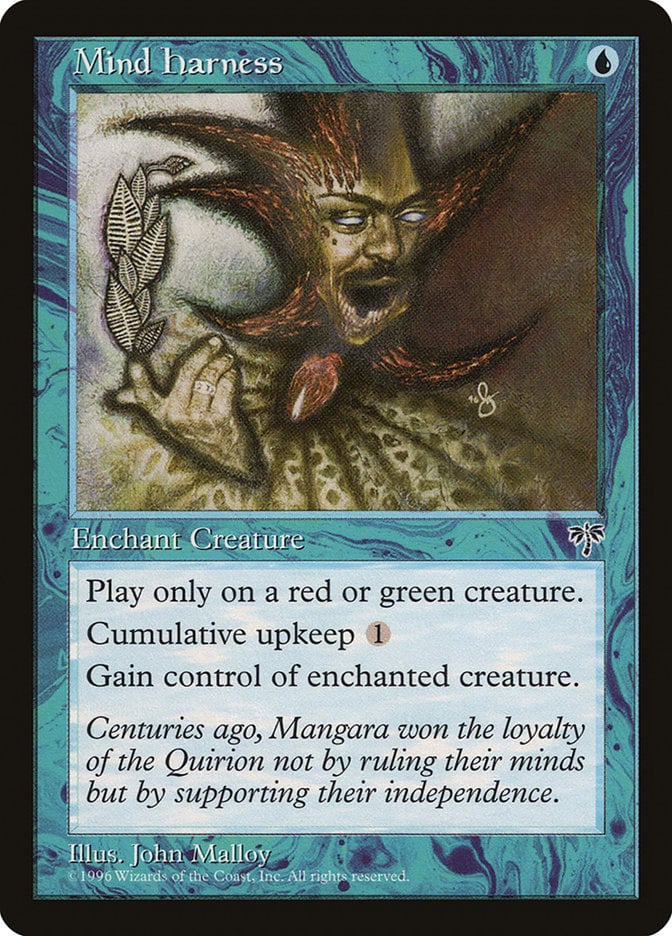
Mind Harness is an example of a powerful card with a cumulative upkeep. For 1 blue mana, Mind Harness gains control of any red or green creature, making it a conditionally better Mind Control effect with diminishing returns as you struggle to maintain control of that creature’s brain.
Enters the Battlefield (Comes into play)
Perhaps most notably, Visions introduced beneficial “enters the battlefield” (at the time notated as “comes into play”) effects onto creatures. This would be later shortened to just “enters” in Bloomburrow. Previously, most decks viewed creatures as a crutch. You needed to stick them to the field and untap before they’d do anything, and most were easily removed by the Terrors of the day.
Suddenly, Visions let players get an immediate effect after playing their creature, keeping them in time with the tempo of the match. Cards like Man-o'-War could Unsummon an opponent’s creature, and the classic Uktabi Orangutan was a 2/2 body with artifact removal.
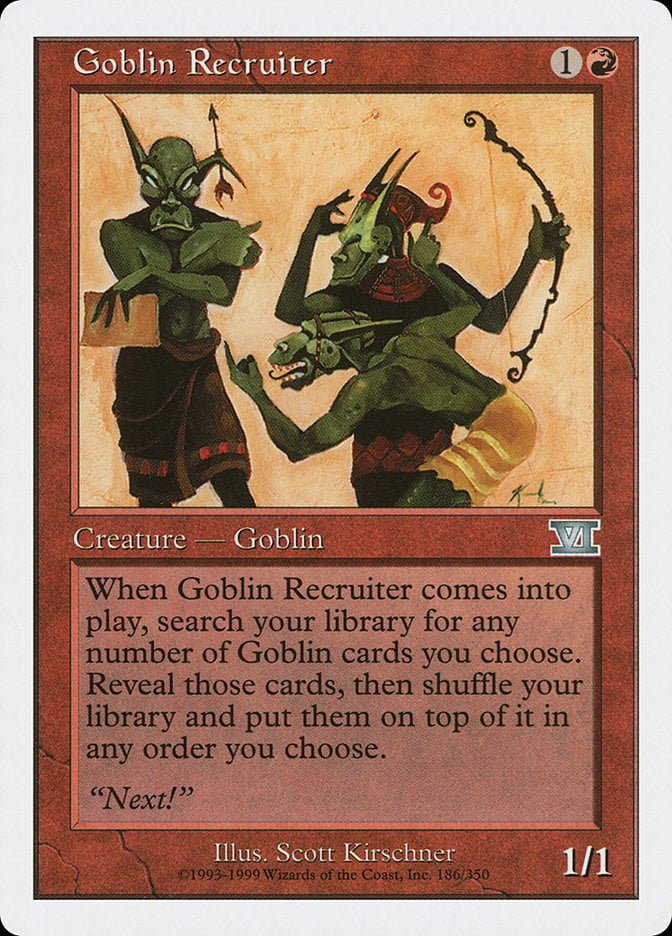
The strongest and most popular of these original ETB creatures was and is Goblin Recruiter. This lean, green (red), goblin machine tutors up any number of goblin cards to the top of your library for just 2 mana. These days, Goblin Recruiter commonly tutors up the four goblins necessary to perform the Conspicuous Snoop combo, which uses the Snoop’s ability to copy the goblins on top of your library alongside Kiki-Jiki, Mirror Breaker, Torch Courier, and Mogg Fanatic for infinite hasted Snoops that sac themselves immediately for an arbitrarily large amount of burn damage.
Visions Card Gallery
White
Blue
Black
Red
Green
Multicolor
Colorless
Land
Notable Cards
Visions’s commons were widely hailed as some of the strongest ever printed at that rarity, and we can see that general power creep applied across the entire set.
Vampiric Tutor
Probably the most famous Visions card, Vampiric Tutor is the quickest way to tutor up any card from your deck. Its single-mana, instant-speed casting cost means it's almost impossible to counter and stay on-tempo, leading to the card’s banning in Legacy.
Tithe
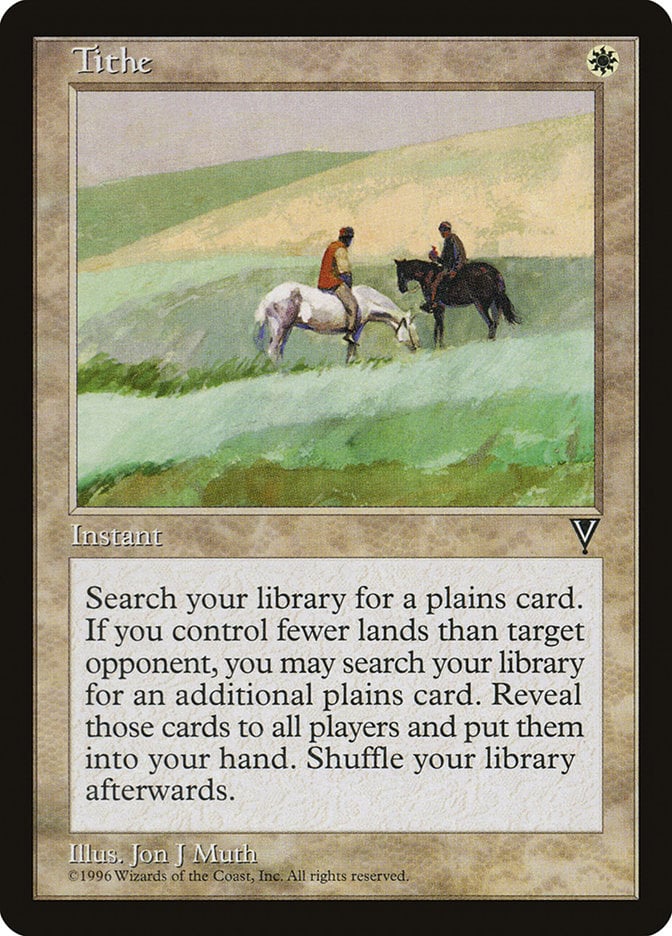
Tithe is one of the first Plains-centric draw spells in white. It heralded a design space for white that we wouldn’t see expanded on for many years to come until Weathered Wayfarer and Knight of the White Orchid effects.
Natural Order
Continuing the theme of strong tutors, Natural Order gave players a great way to sneak green creatures into play from their library. As a sort of proto-Birthing Pod effect, Natural Order let you tap out on turn 3 and sac that mana dork to fetch something scary, like, uhh, Panther Warriors? Was that a threat in 1997?
Squandered Resources
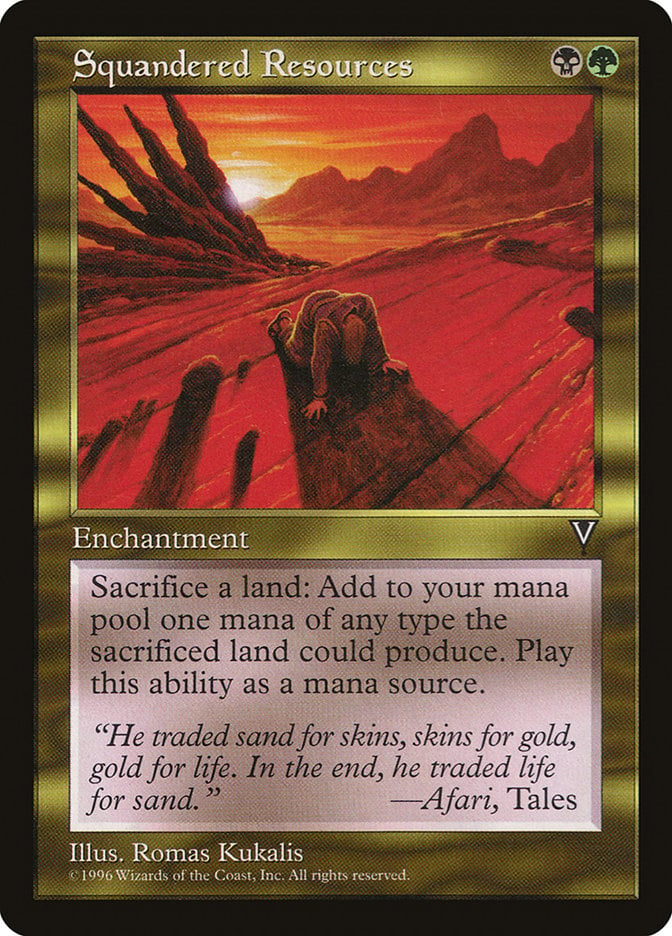
Squandered Resources was the linchpin card in the first ever true combo deck to hit the competitive Magic scene: Prosperous Bloom. Prosperous Bloom ran zero creatures and used a combination of new Visions and Mirage cards to ramp and filter through the deck to find a copy of Prosperity. Squandered Resources and Natural Balance provided early ramping before casting Prosperity to draw a huge number of cards from the library. Cadaverous Bloom then converted the player’s hand into black mana, letting one big Drain Life end the game.
90s Pro Tour star Mike Long piloted the deck to victory in Pro Tour: Paris 1997, where he beat Mark Justice’s black/red aggro deck in the finals.
Uktabi Orangutan

Visions was lauded as the first set to include playable commons, and there’s a huge list of them. From the essential Pauper Elves card Quirion Ranger to the red-deck-defining Fireblast to the extremely valuable Goblin Recruiter, commons were suddenly good. But, the most important of all Visions commons is the amorous Uktabi Orangutan.
What possessed artist Una Fricker to add those two passionate apes in the background of Uktabi Orangutan? What does that have to do with destroying an artifact on ETB? Whatever the reasons, this weirdly horny monkey card has become a favorite in-joke for Magic players for decades now, even spawning (sorry) several references in Un-set card (Uktabi Kong) and black-bordered sets (Kibo, Uktabi Prince and the new art for Uktabi Orangutan.
The Love Song of Night and Day
No, not the Dominaria United saga card, though that is a reference to the flavor text from 17 cards across the Mirage and Visions sets with lines from a poem by The Duelist editor and contributor, Jenny Scott. The poem was crafted as part of the setting development for Jamuraa. The cards with references to the poem from Visions are:
Available Products
Draft Boosters/Booster Boxes
Visions draft boosters were sold for $2.45 (!!!) in 1997. Each contained 15 random cards from the set. Booster boxes were available as well, containing 36 booster packs.
These days, sealed Visions products are hard to come by. Sealed booster boxes usually range upwards of $1500, and sealed booster packs average about $45.
Theme Decks
Visions theme decks are an interesting oddity. There were no actual paper theme decks designed or released. Instead, Visions received a run of four theme decks released retroactively on MTGO along with the Mirage block in 2005, nearly a decade after the set’s paper release.
The four Visions theme decks were:
- Legion of Glory, a mono white weenies deck featuring Retribution of the Meek and Zhalfirin Crusader.
- Savage Stompdown, a red/green deck featuring Natural Order and Viashivan Dragon.
- Unnatural Forces, a reactive control deck featuring Flooded Shoreline and Necrosavant (Ouch, what a downgrade on the ‘savant!).
- Wild-Eyed Frenzy, a mono red deck with Kookus and Ogre Enforcer as its rares.
Wrap Up

Natural Order | Illustration by Terese Nielsen
Visions was a defining moment in Magic, not just because of its noticeable power creep, but also because it heralded a new era of design in Magic. Creatures were “fixed” by appending ETB effects to them, the first combo deck ever suddenly placed in and even won Pro Tours, and wonky mechanics like phasing were finally laid to rest.
What are your favorite cards from Visions? Do you dream about playing some Old School Magic in the Visions meta? Let me know in the comments, or over on Draftsim’s Twitter/X.
Thanks for reading, and don’t forget those cumulative upkeep triggers.
Note: this post contains affiliate links. If you use these links to make a purchase, you’ll help Draftsim continue to provide awesome free articles and apps.
Follow Draftsim for awesome articles and set updates: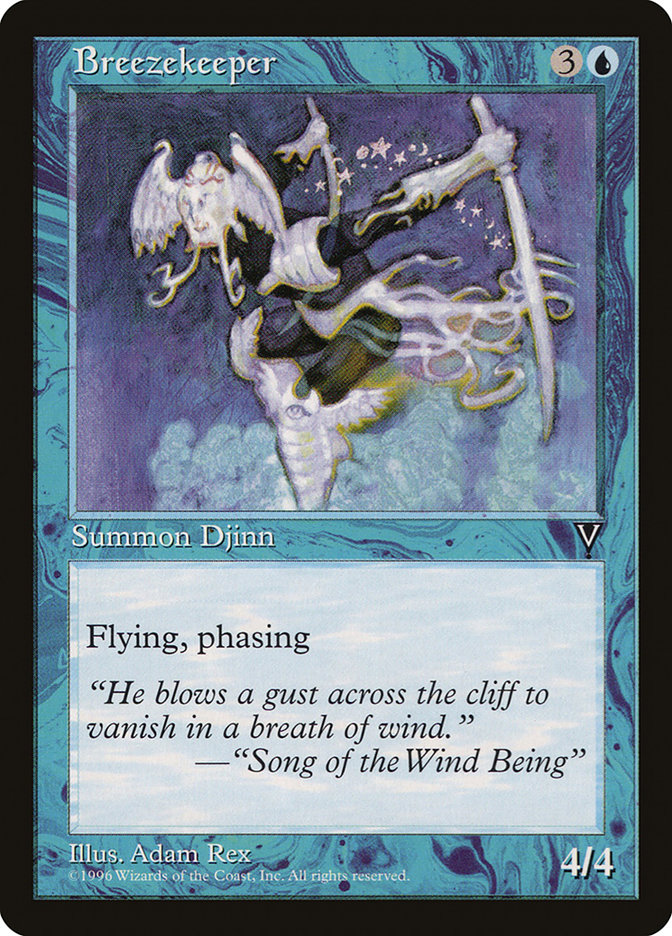
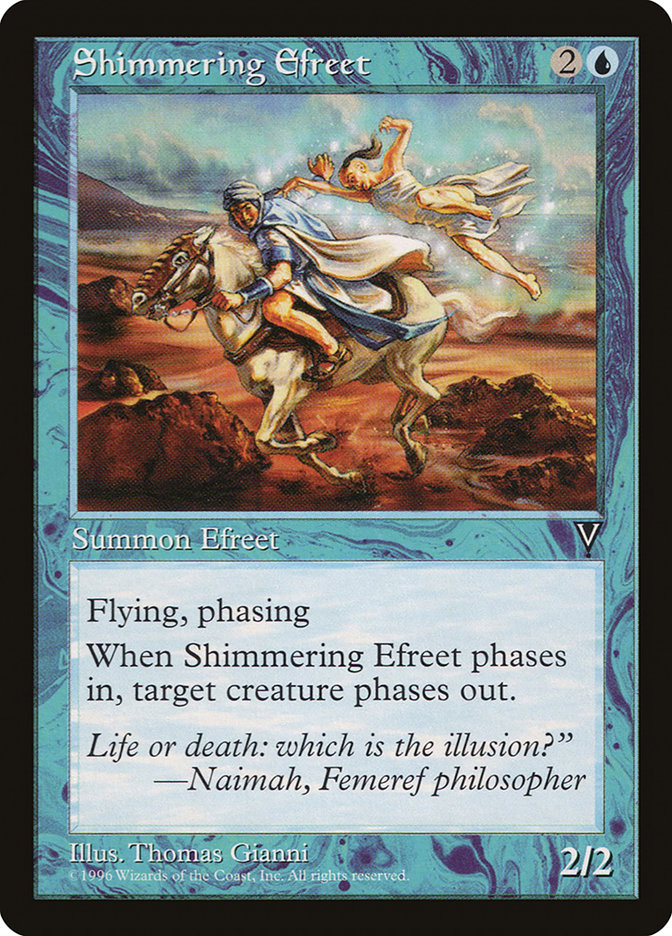
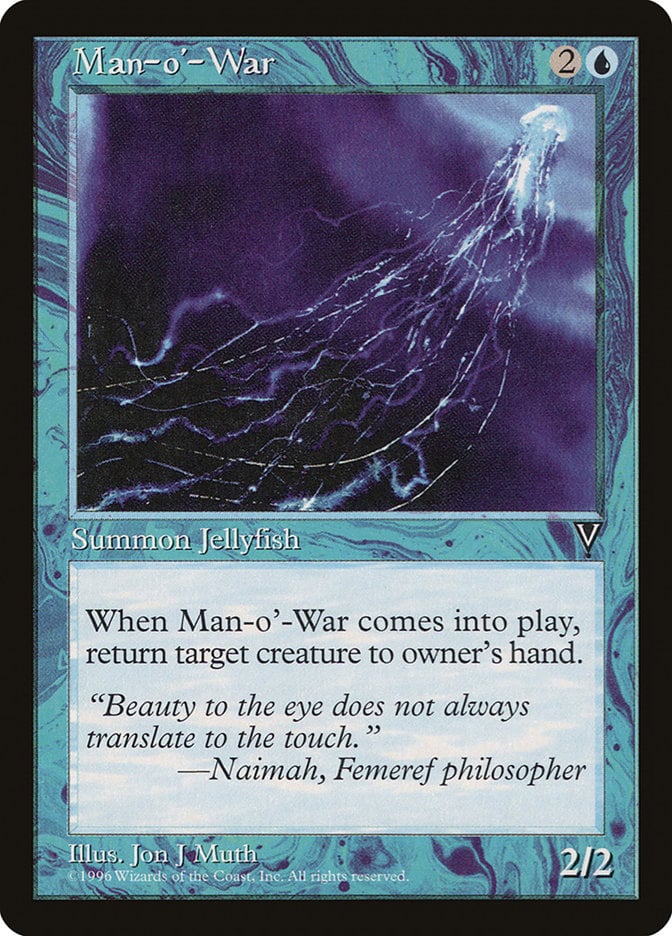
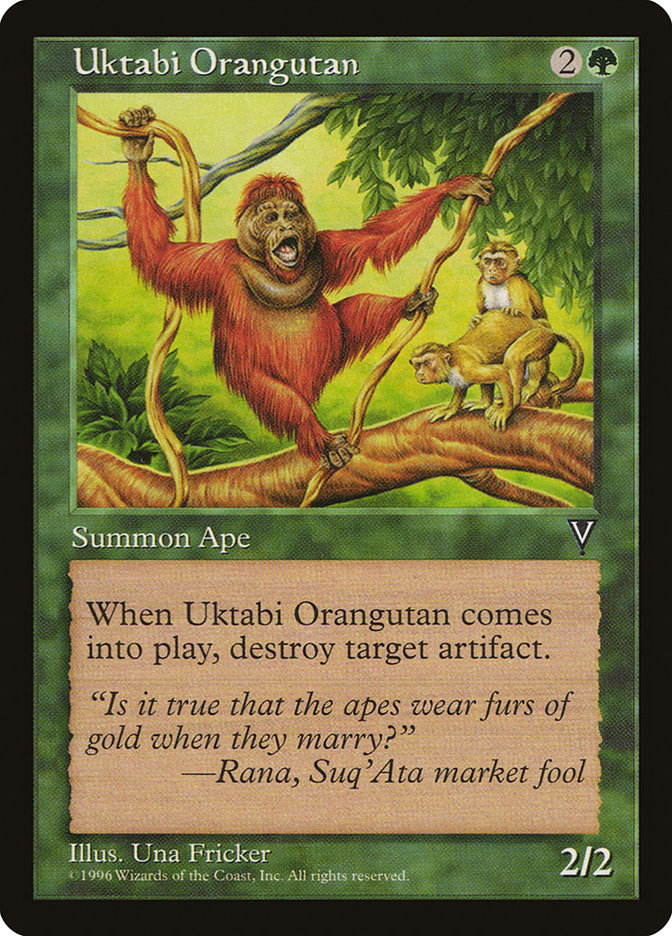
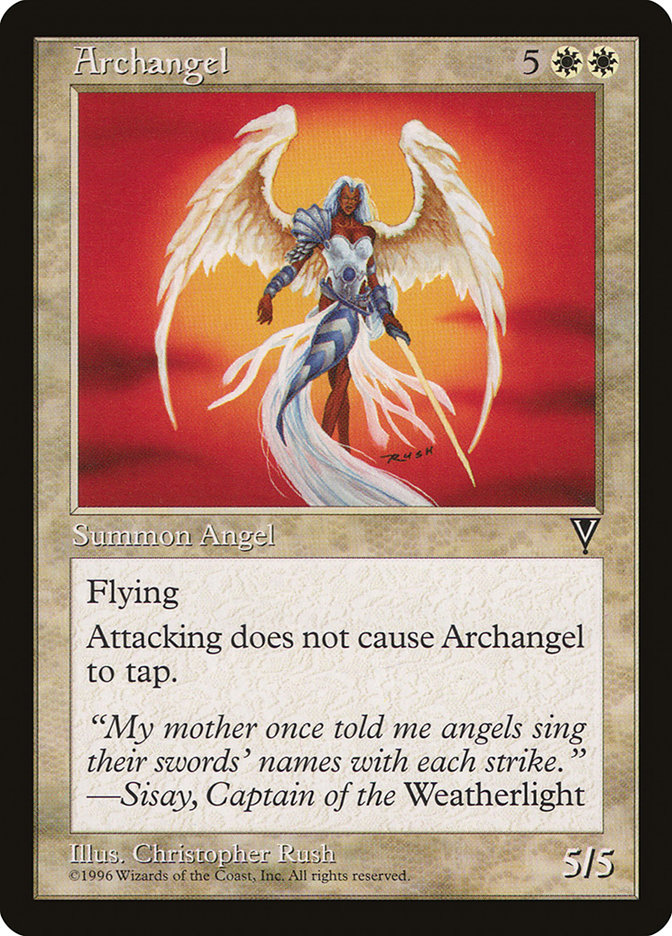

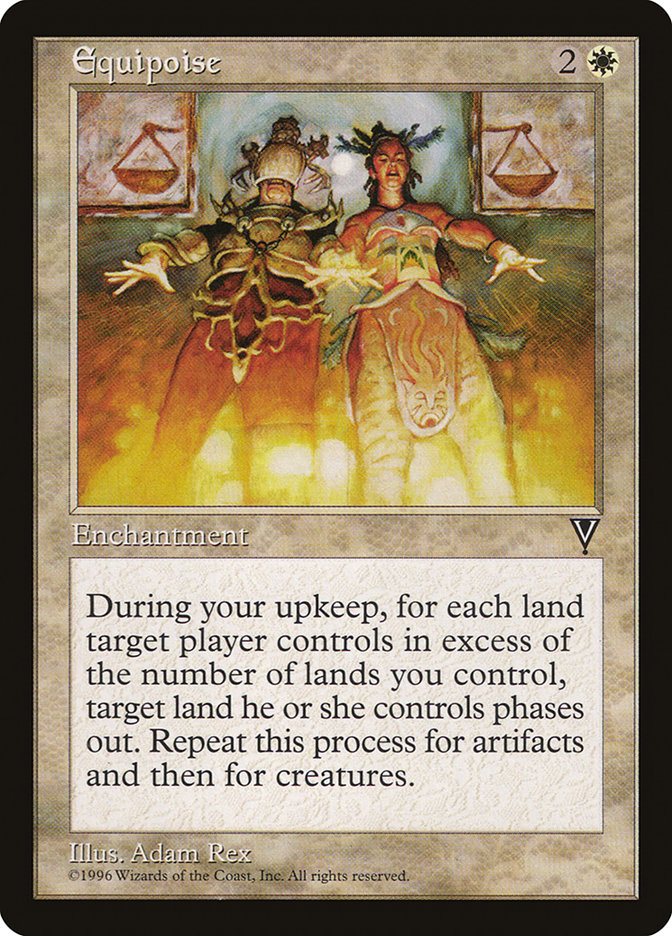
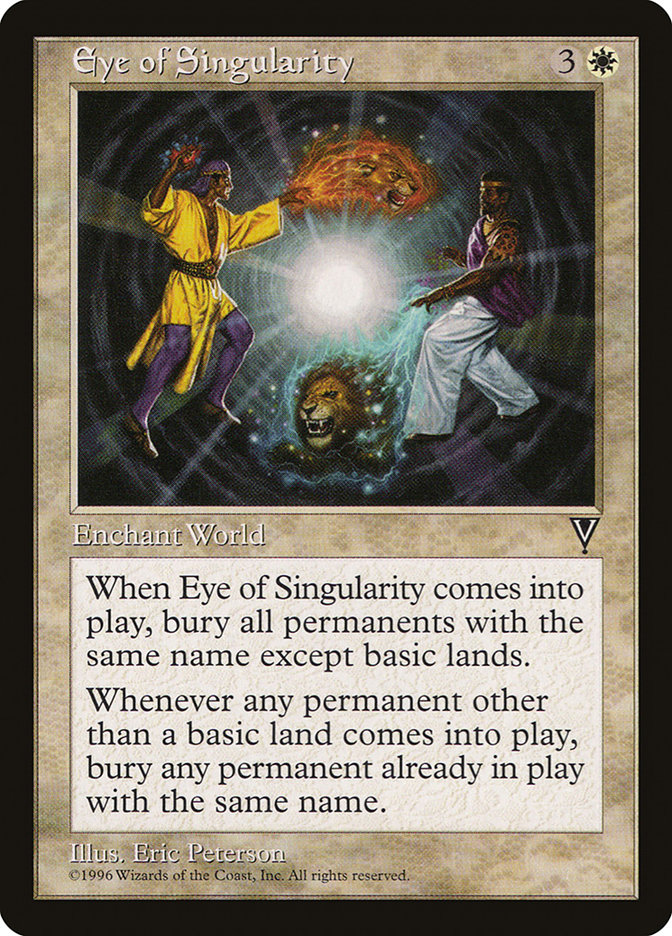

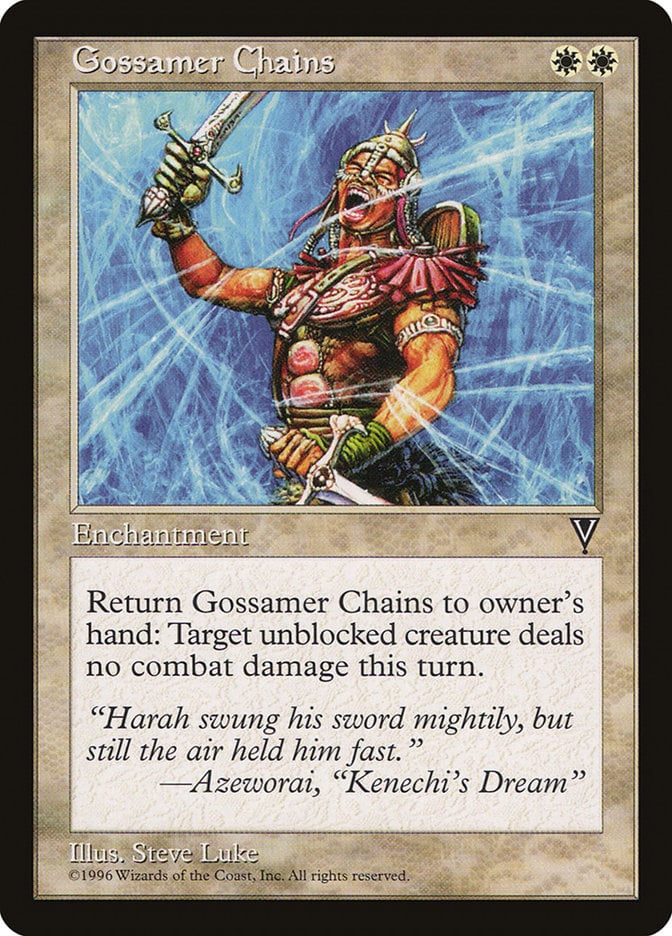
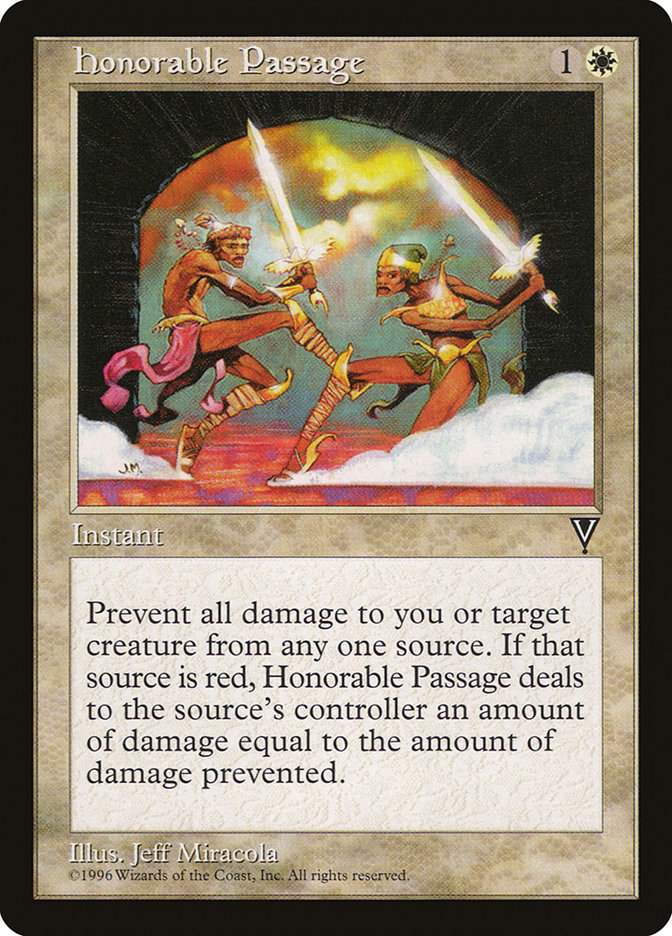

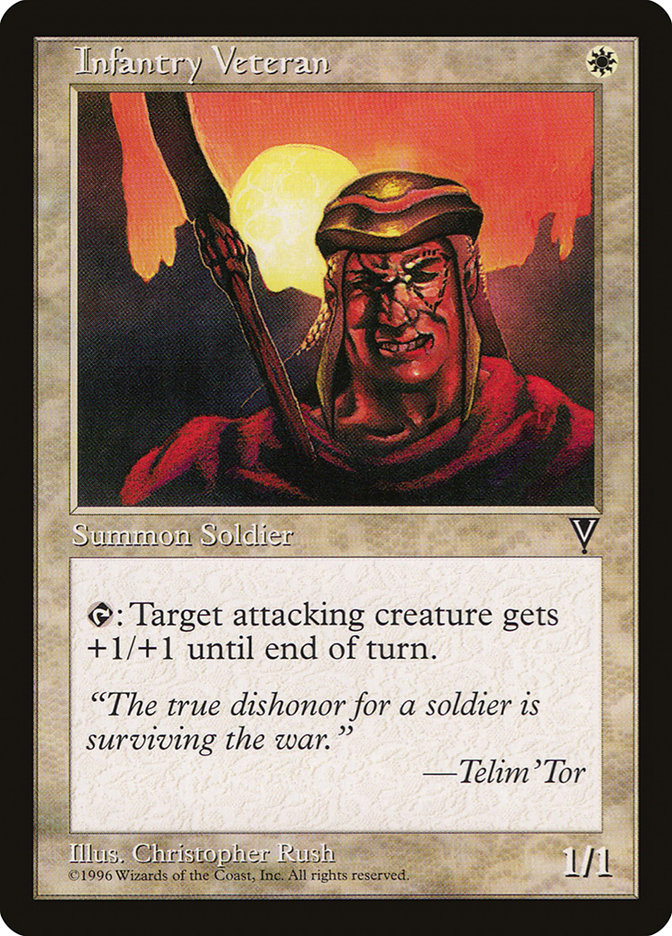




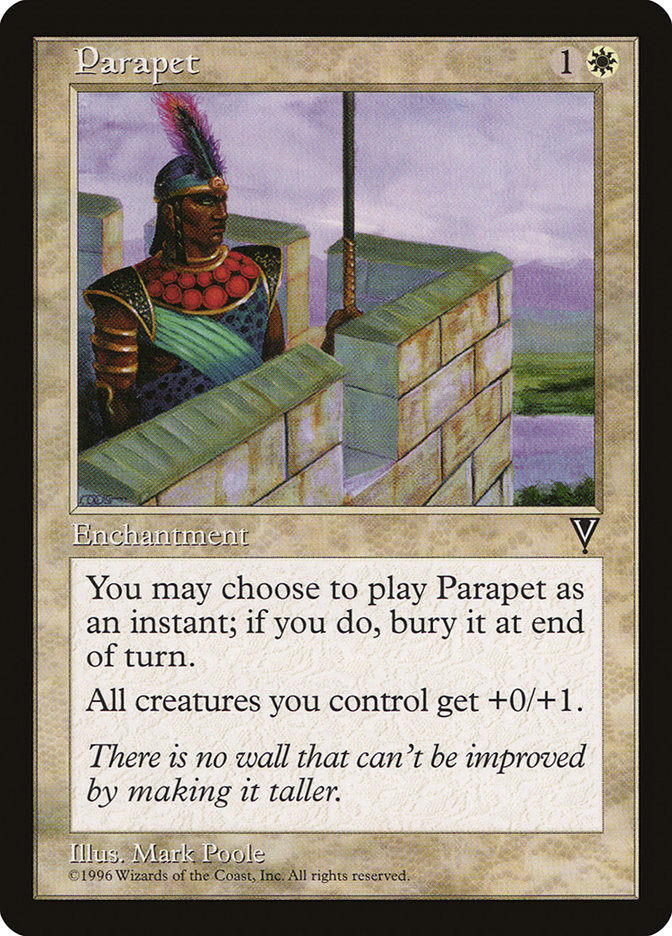
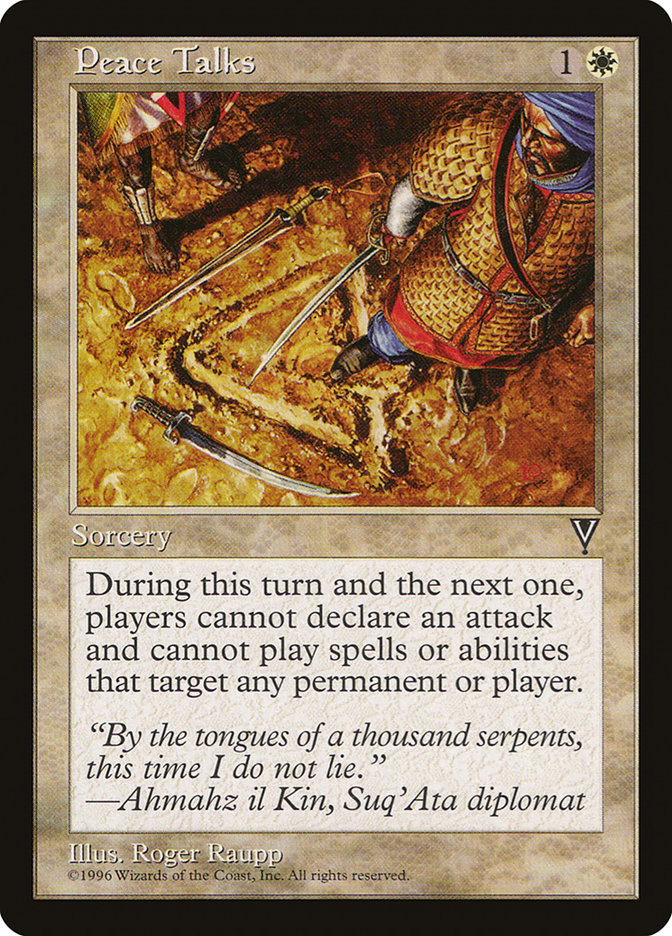

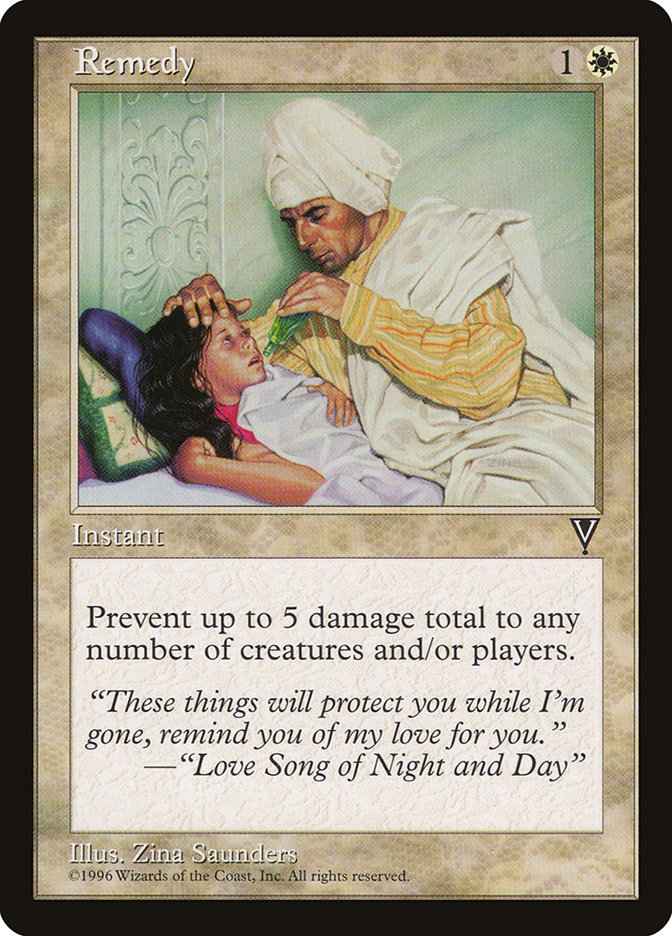


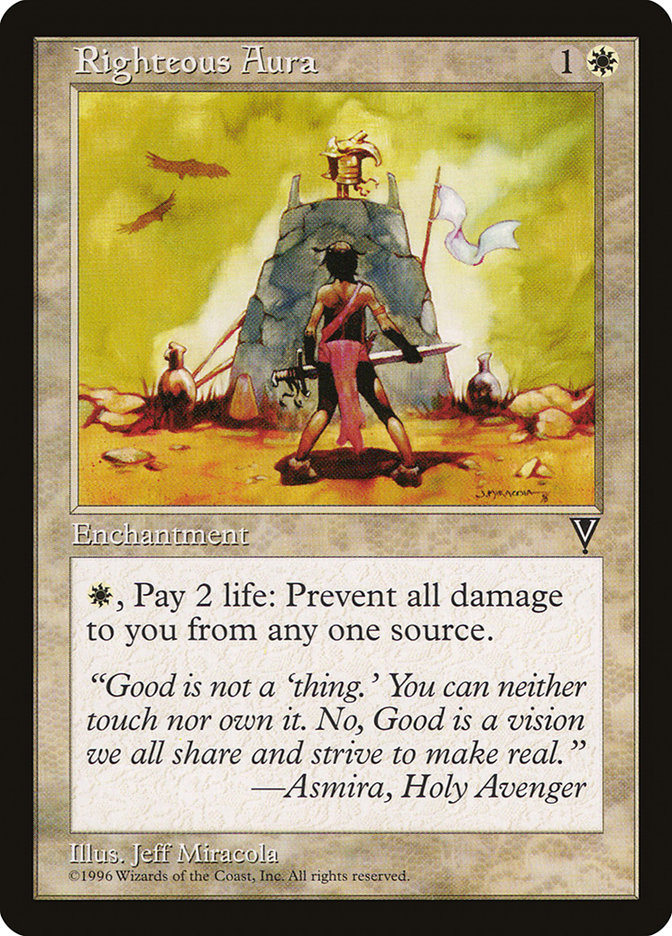

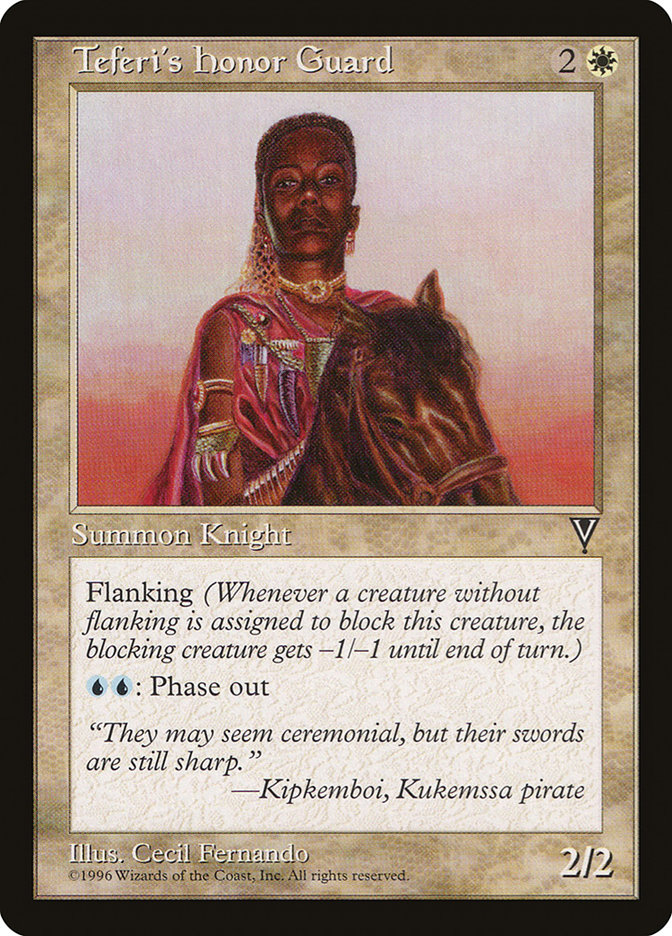
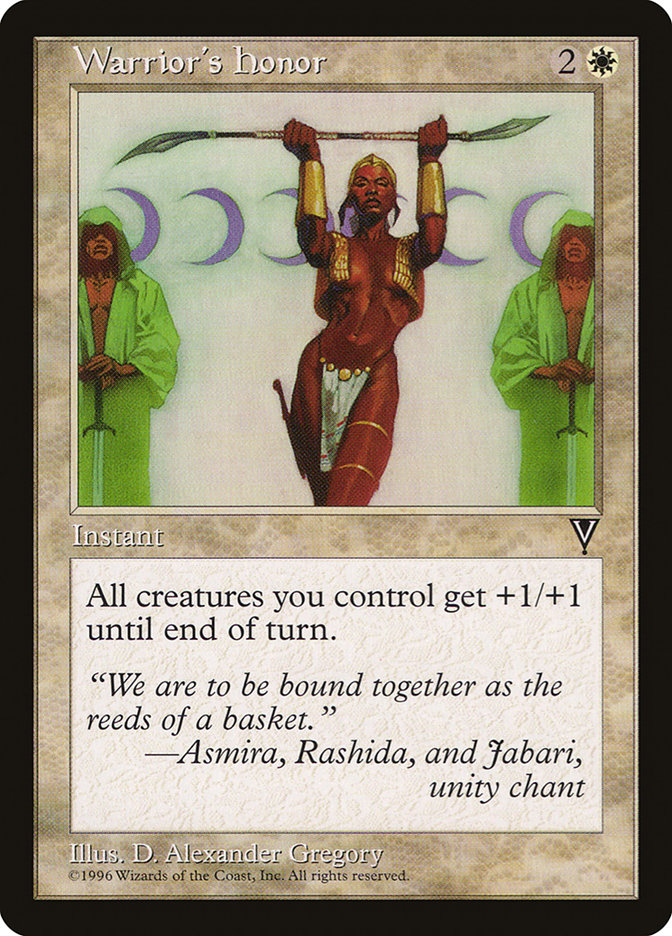
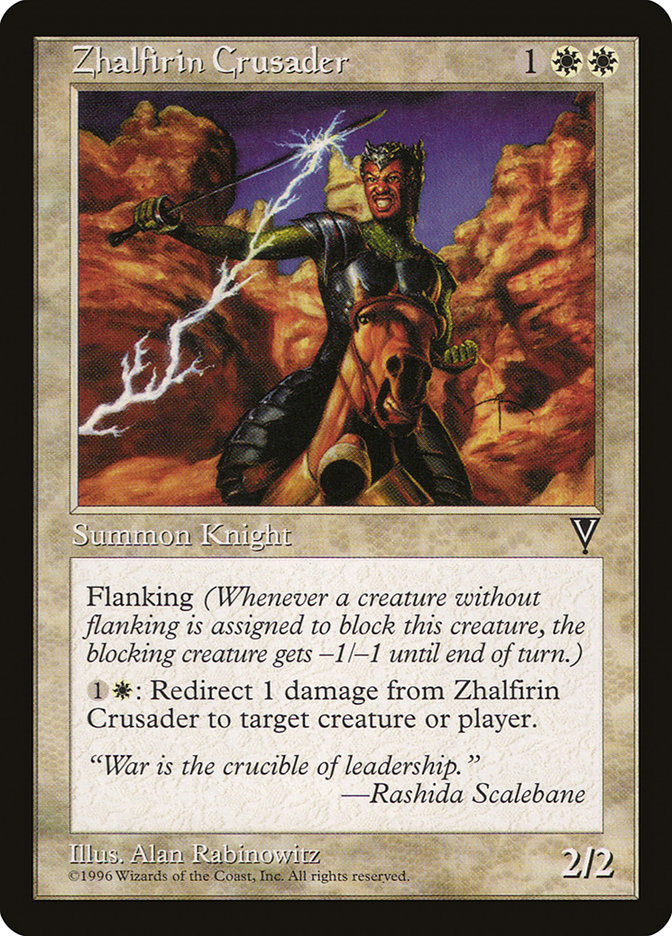
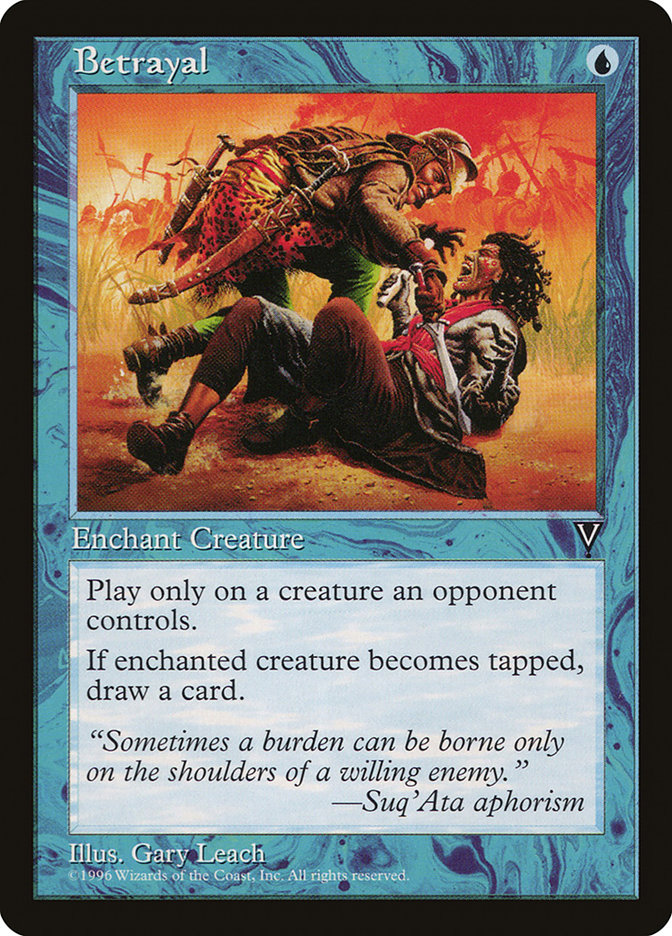
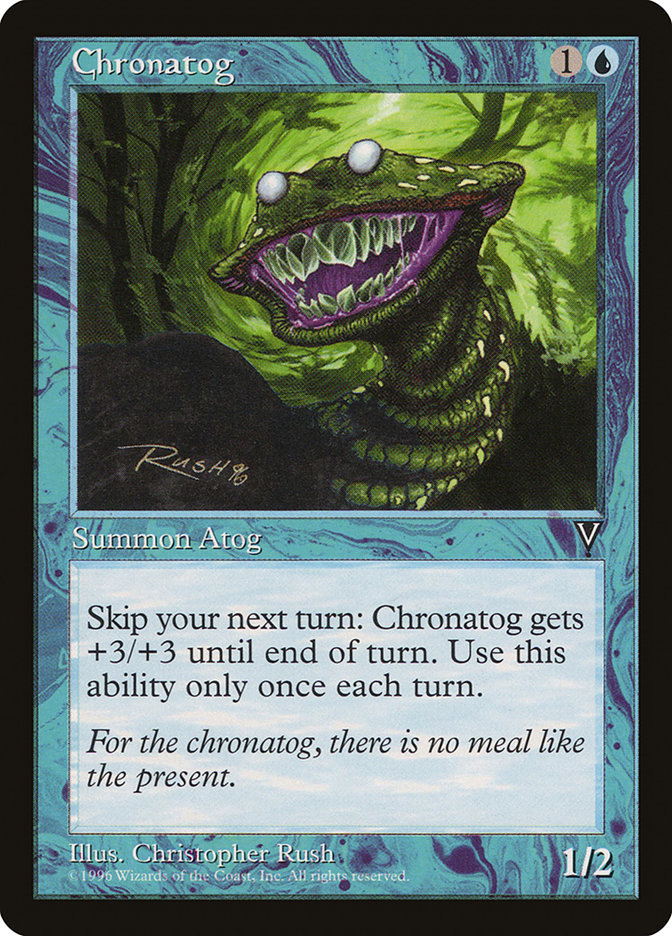


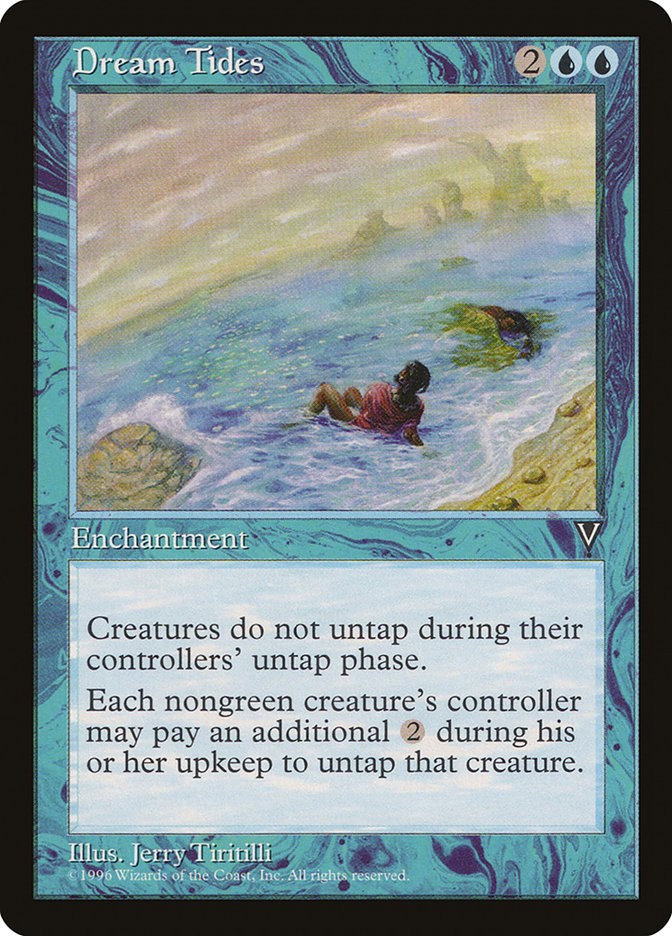
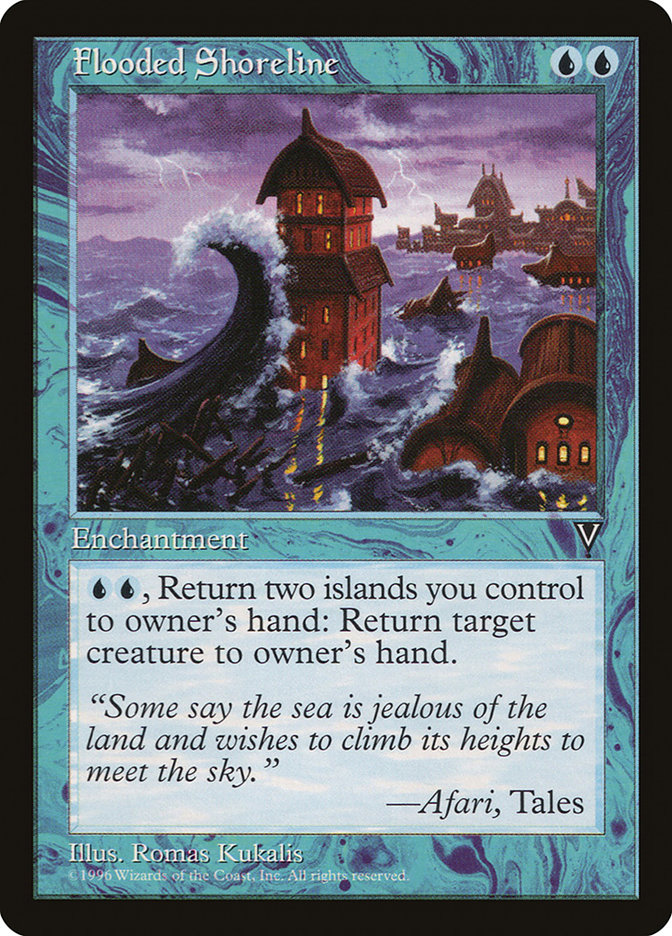
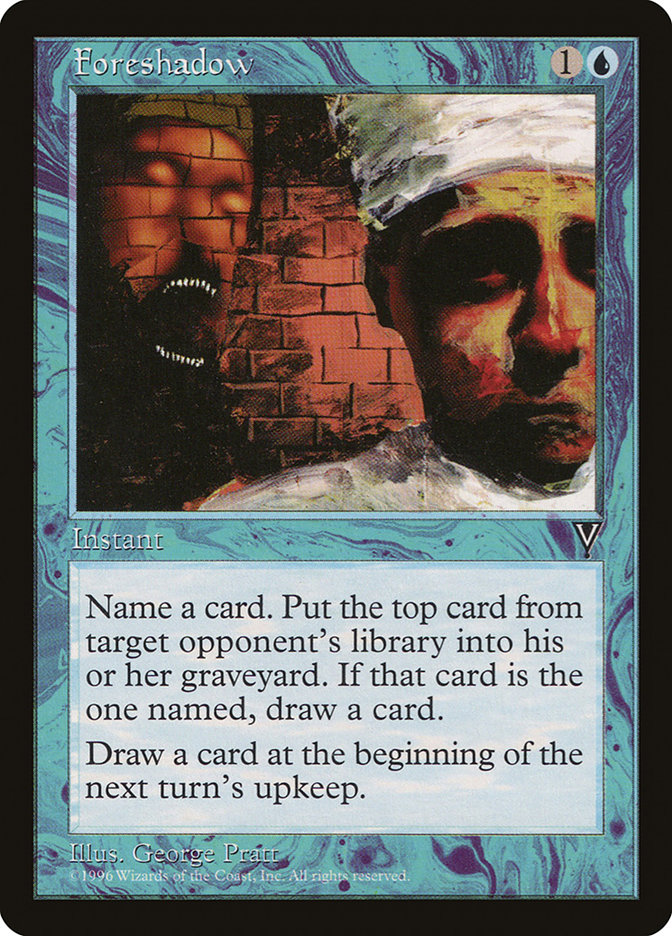
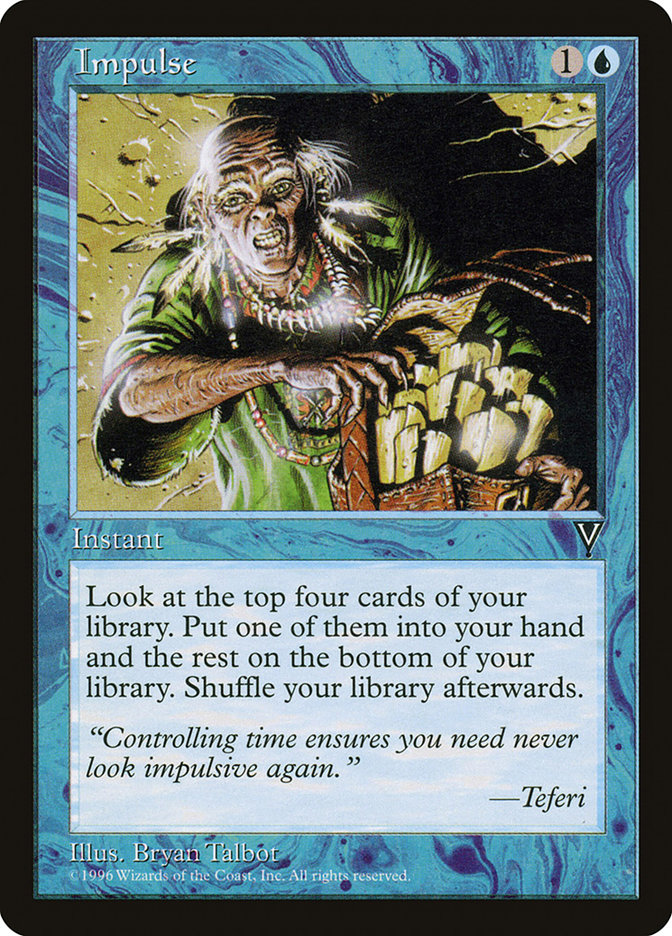
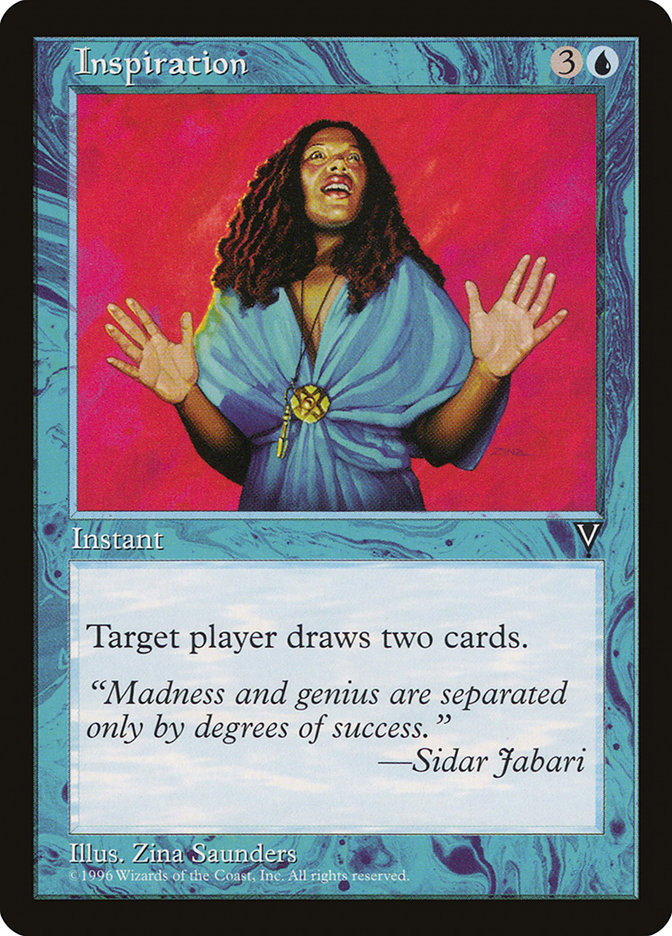

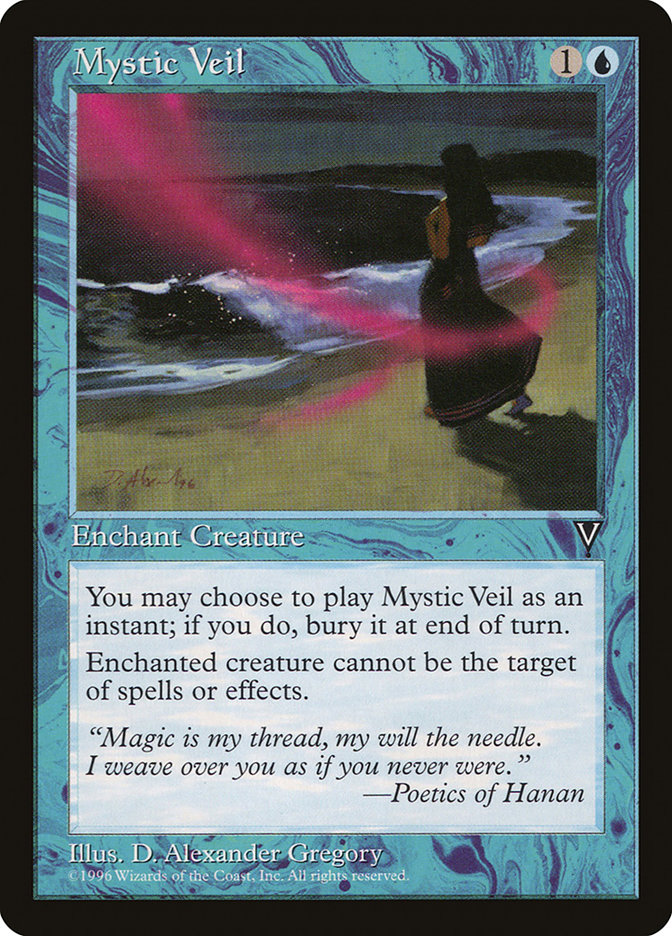
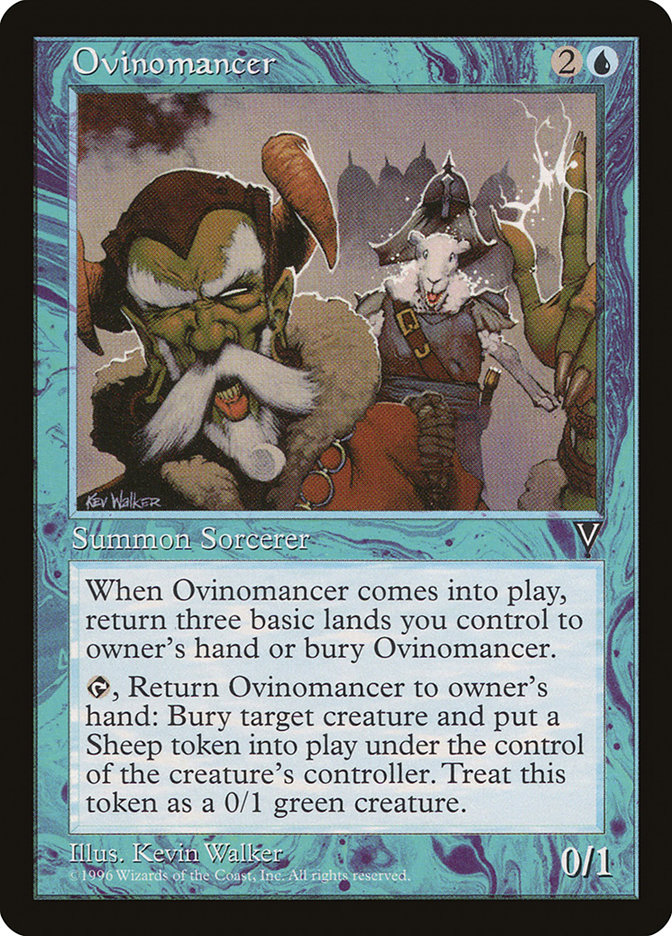
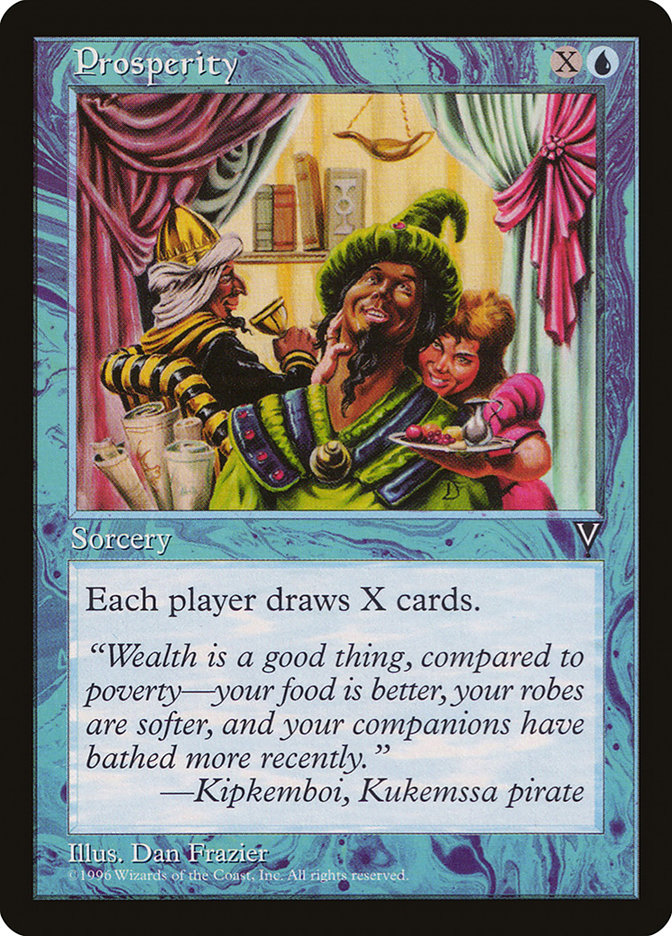

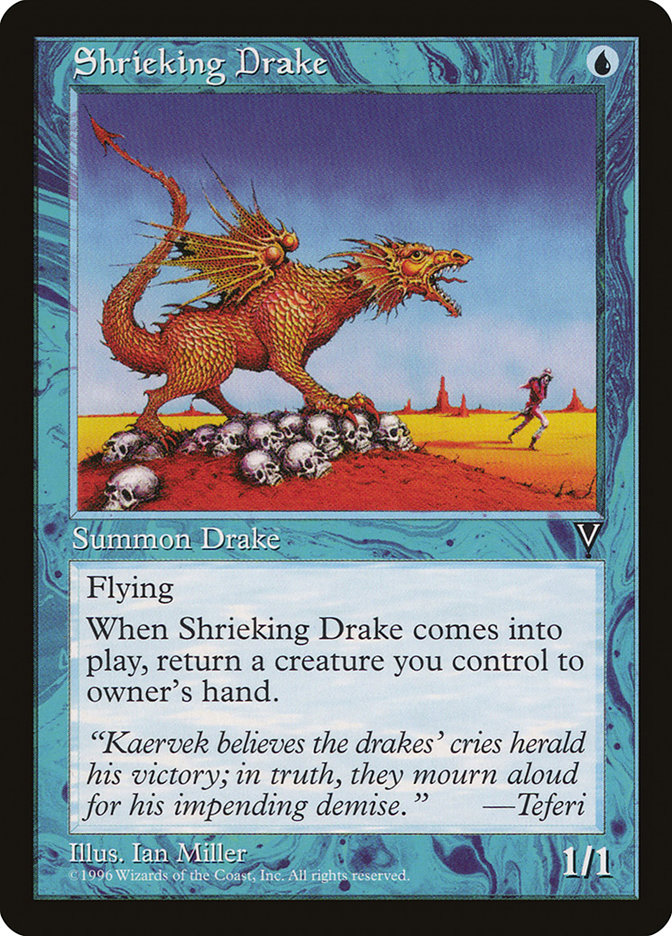



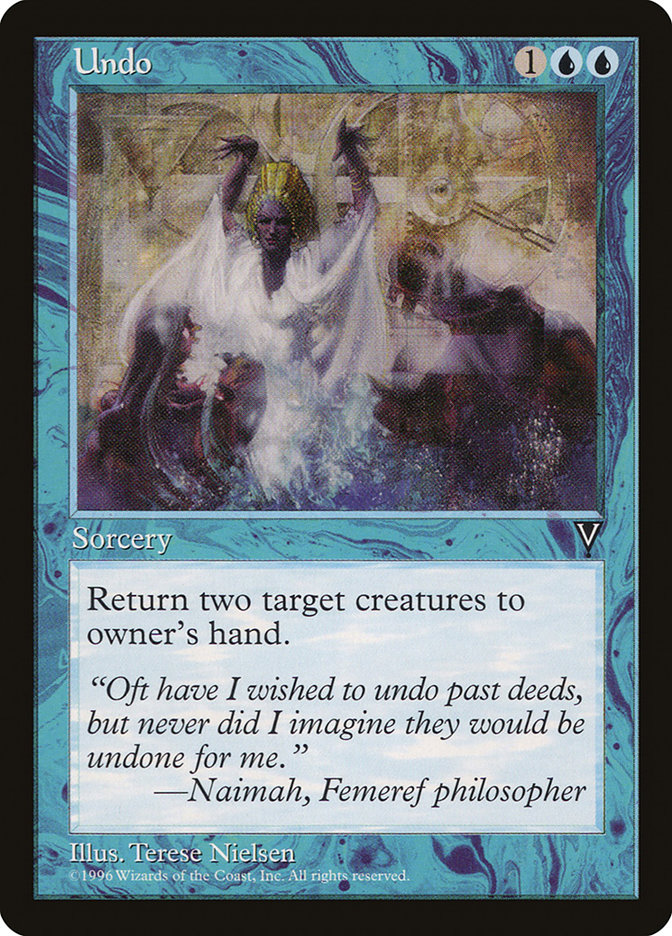
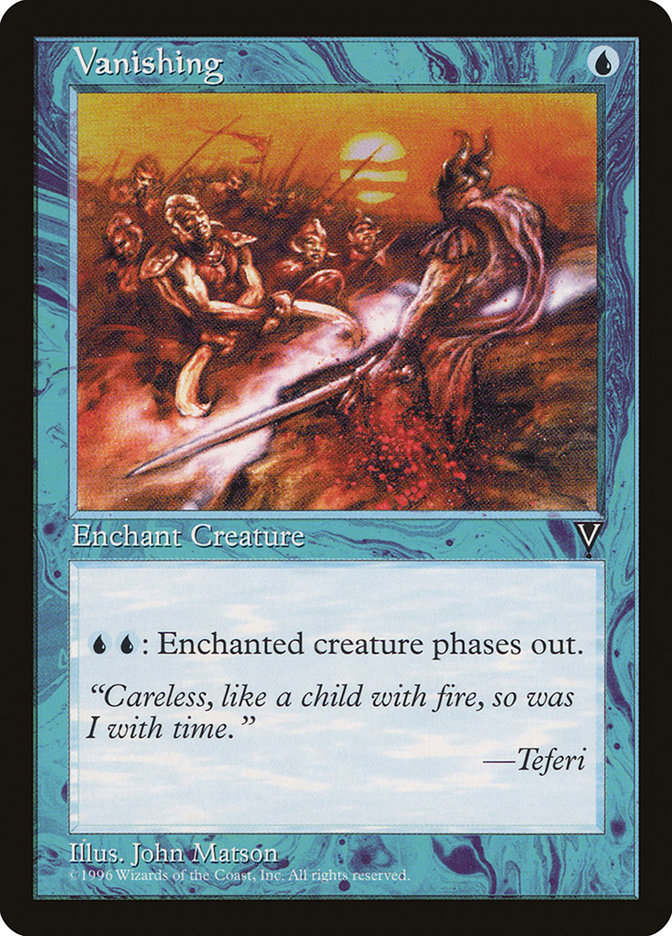
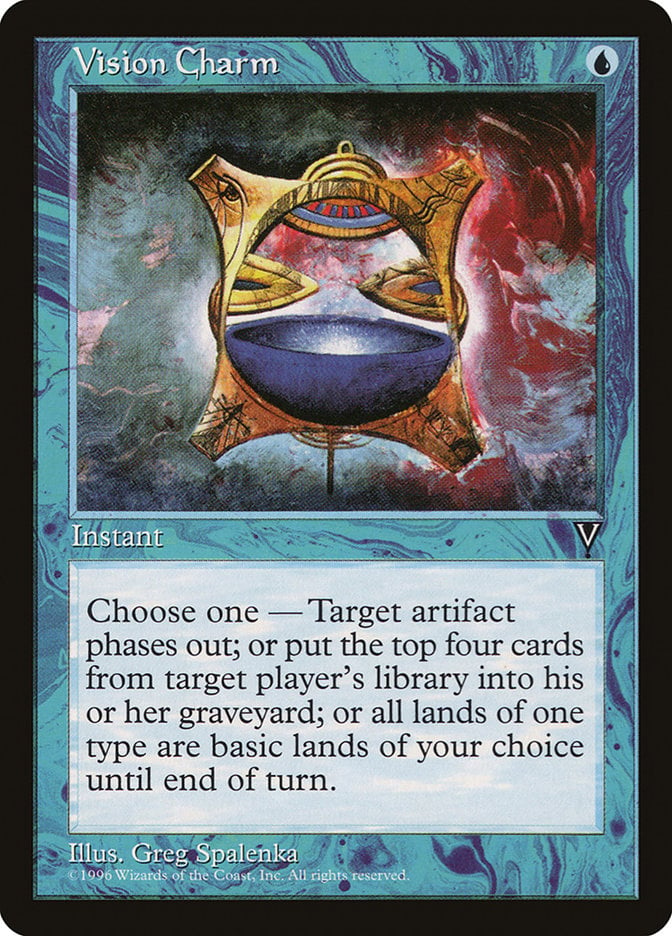
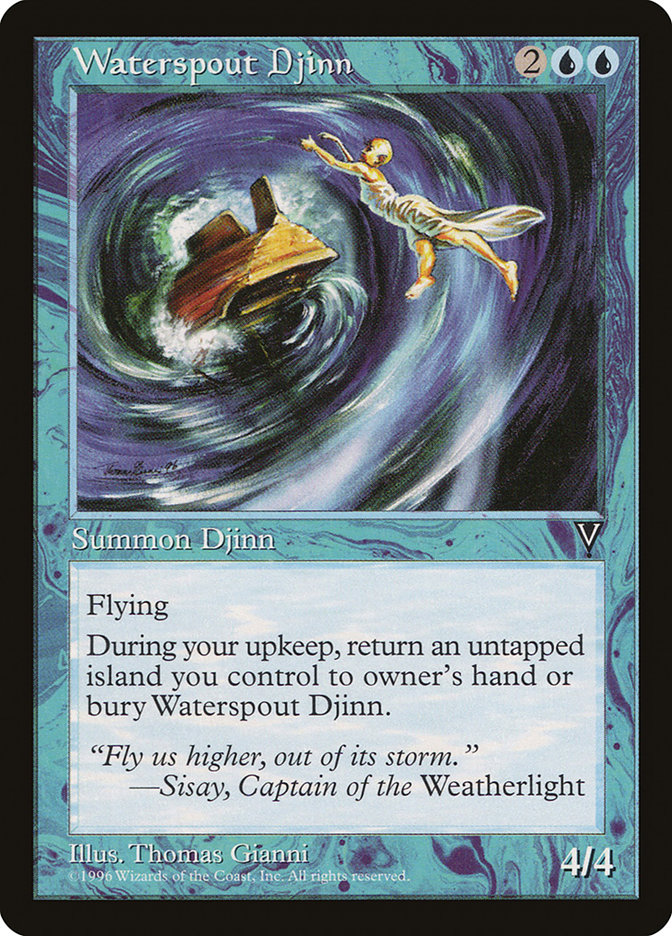

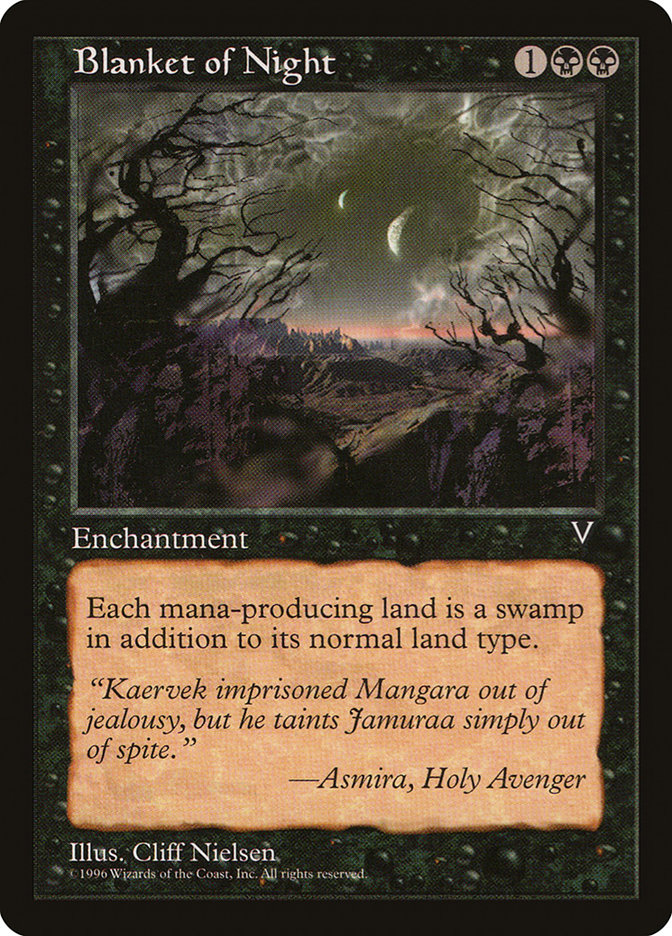
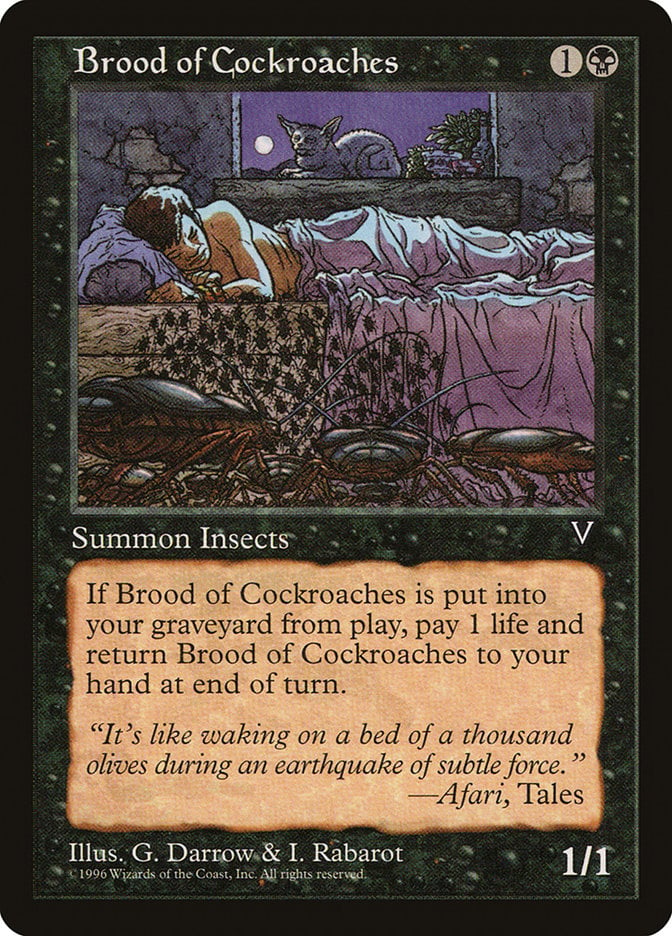
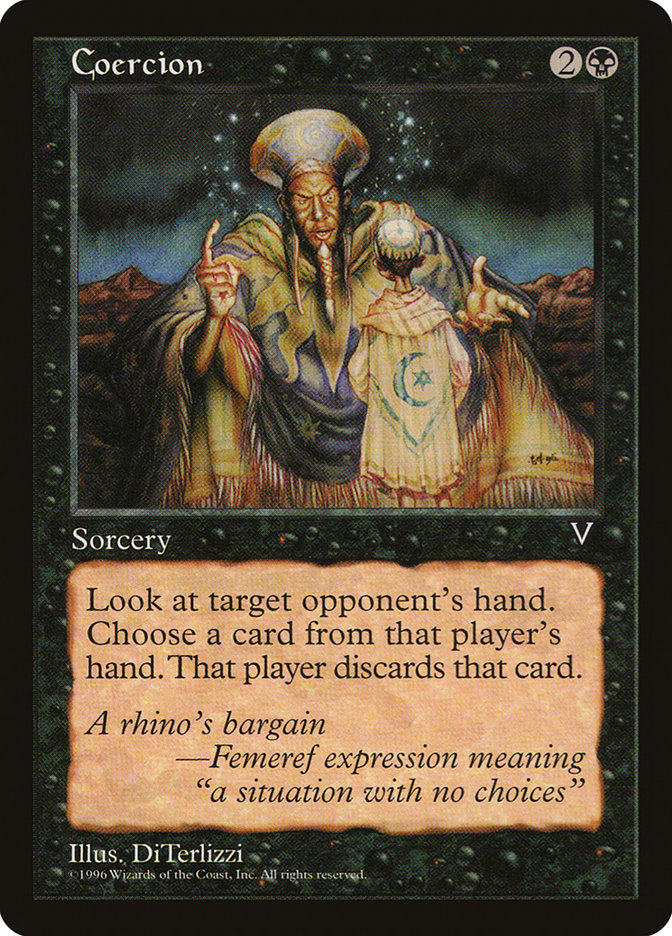

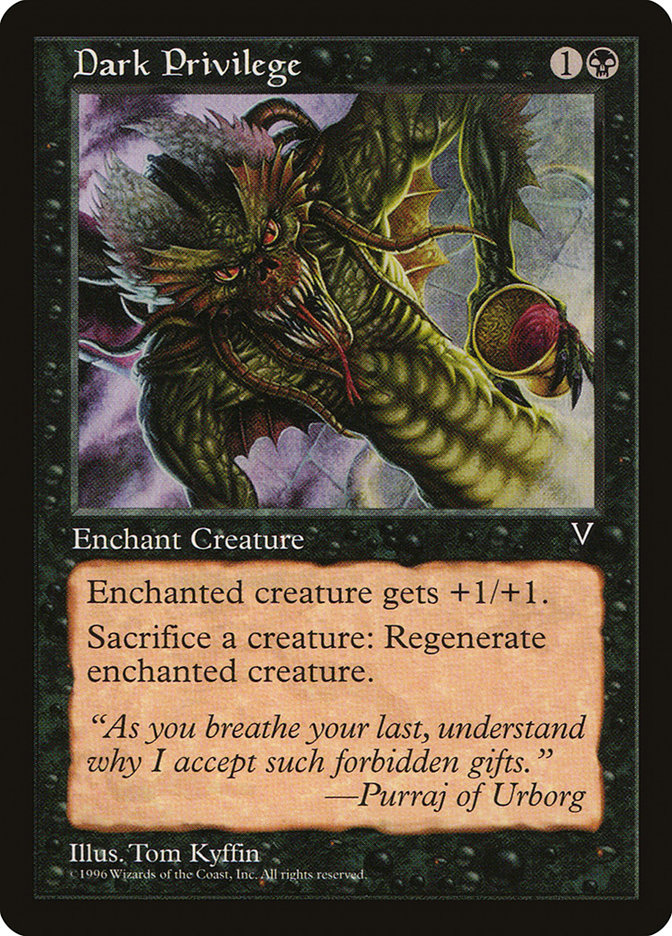
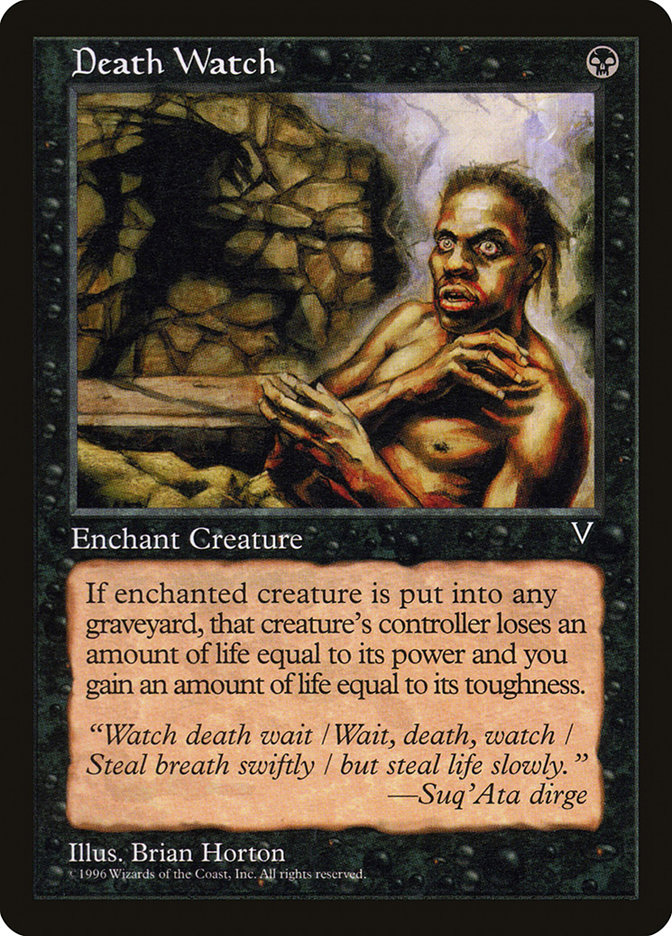
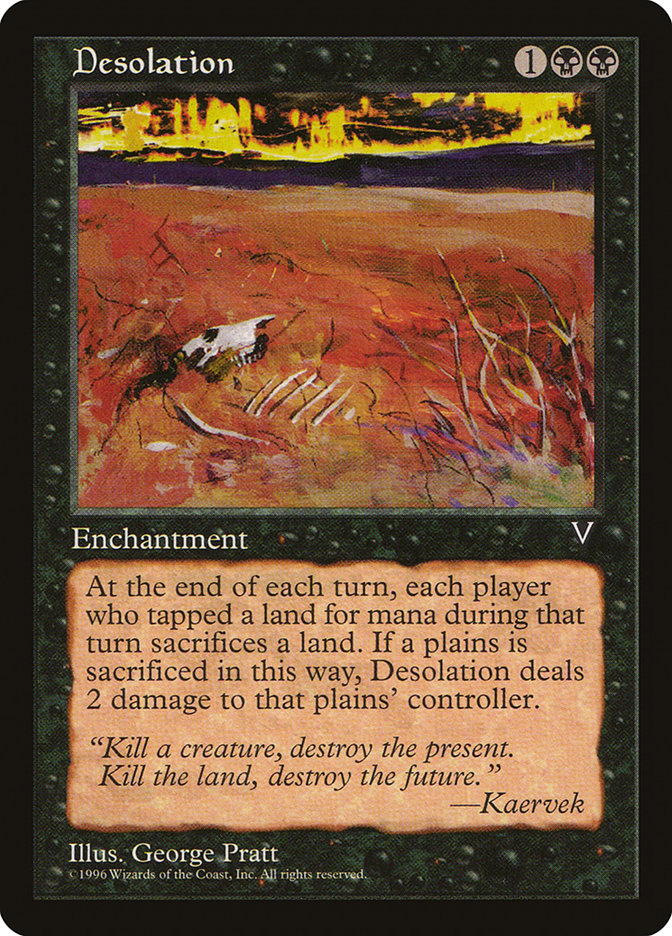
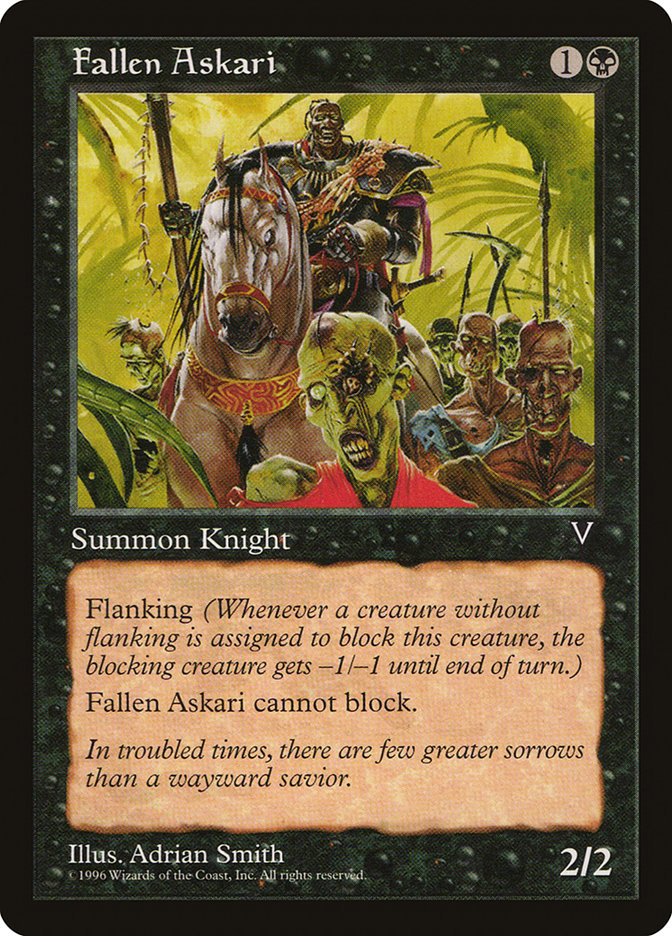
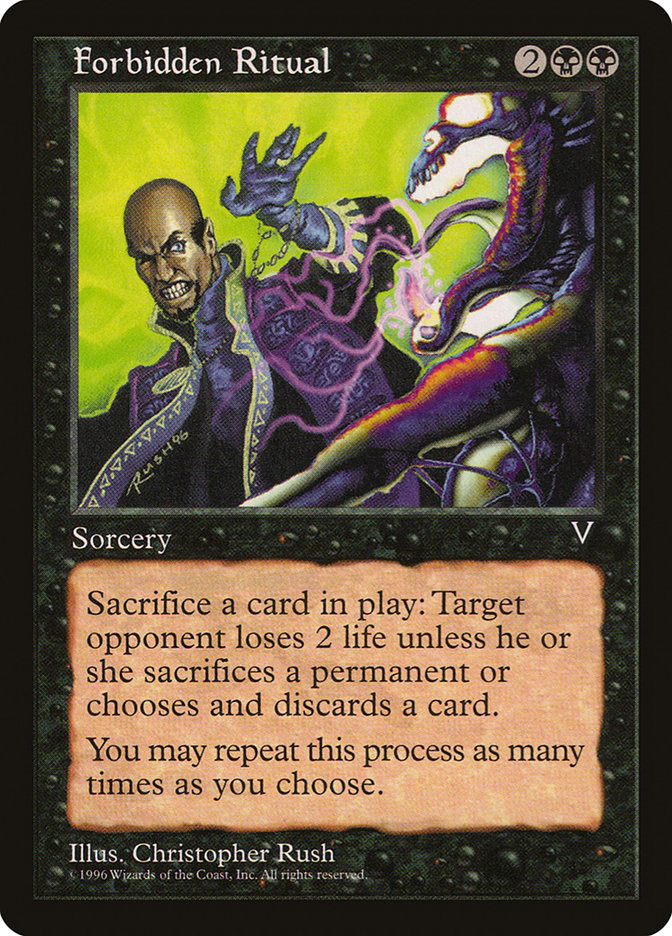

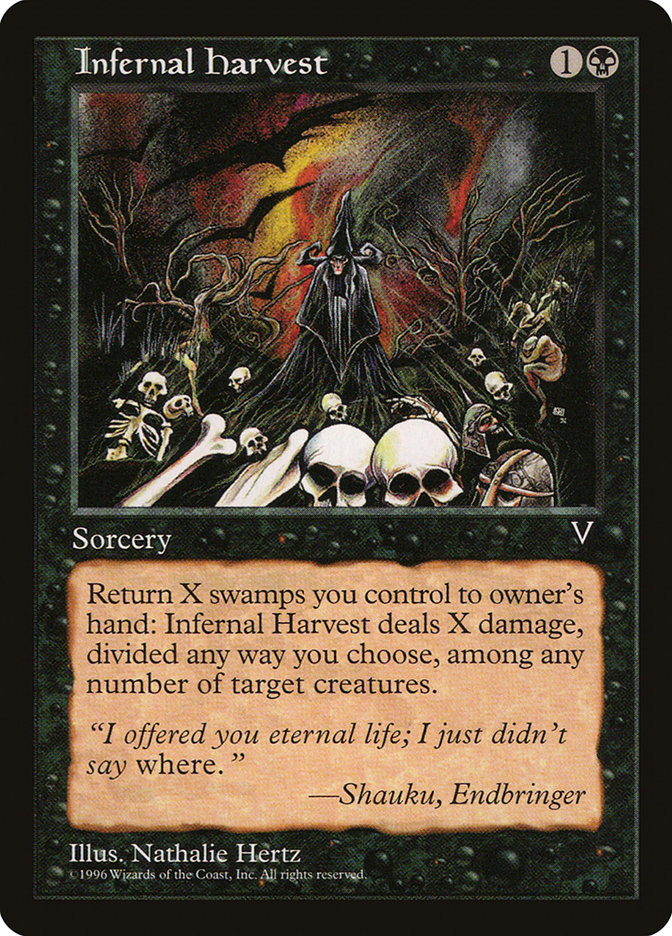
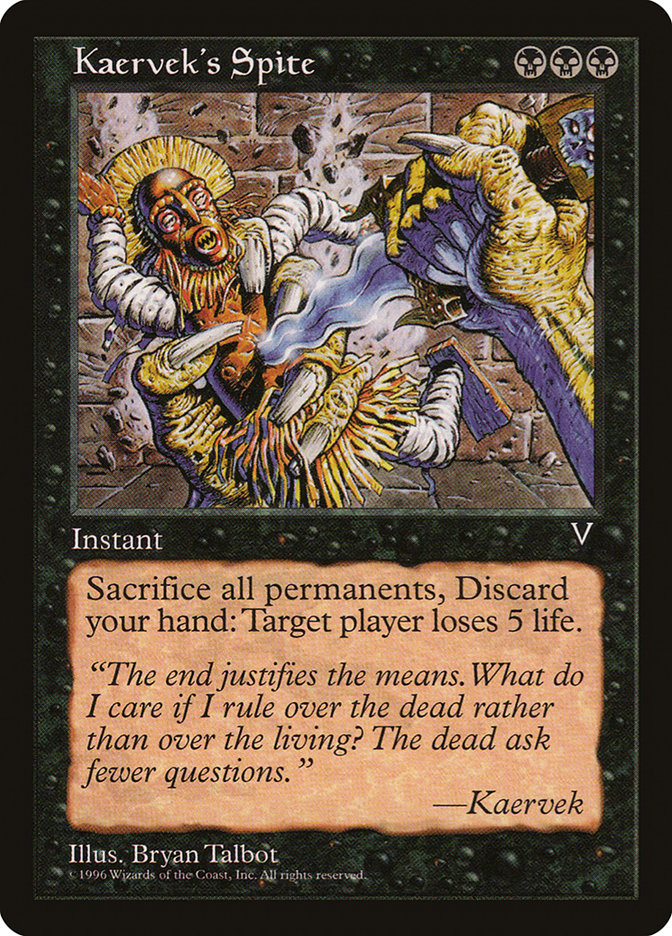
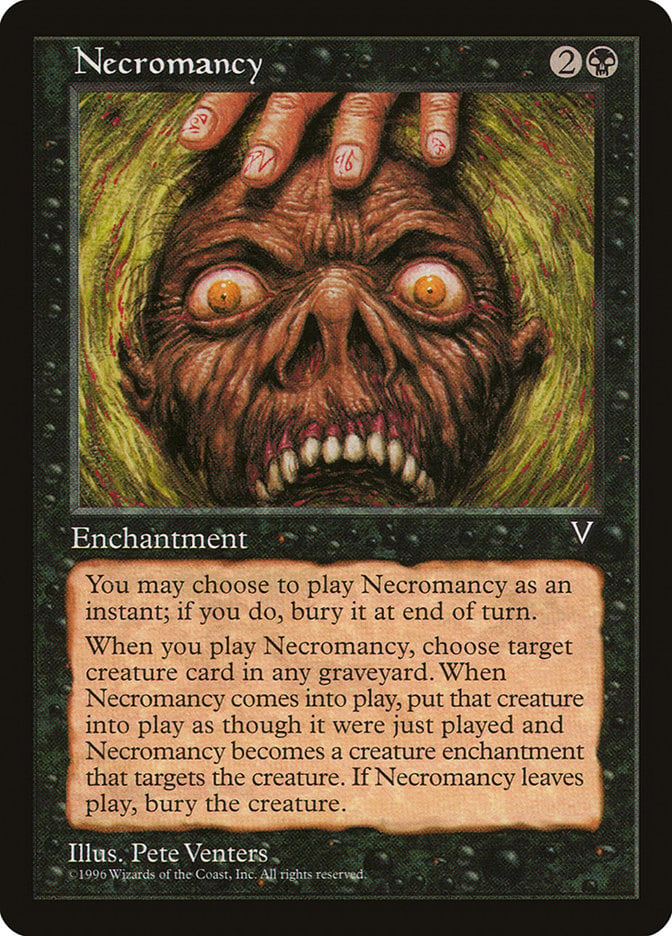
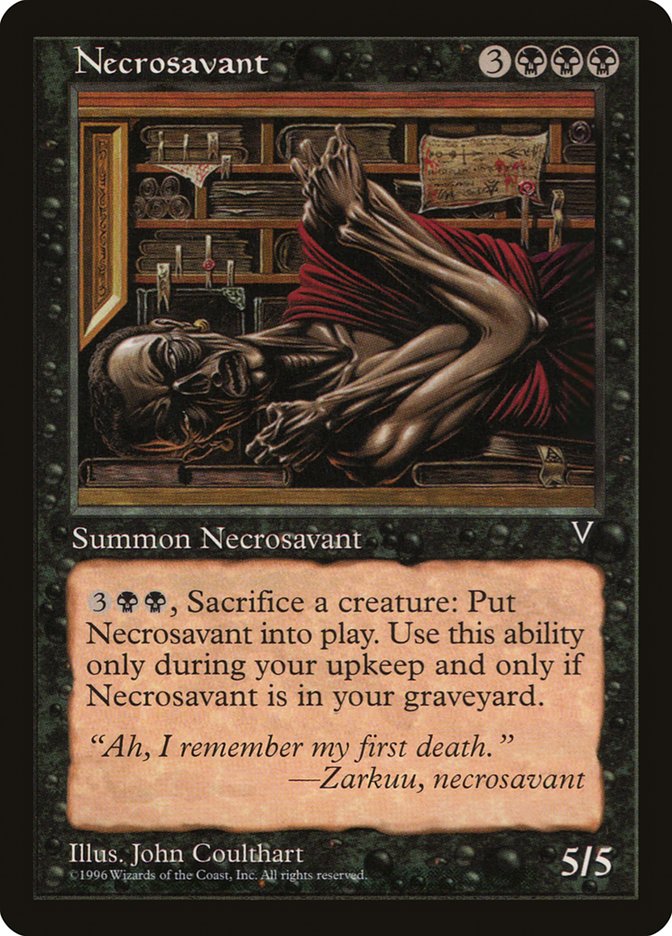
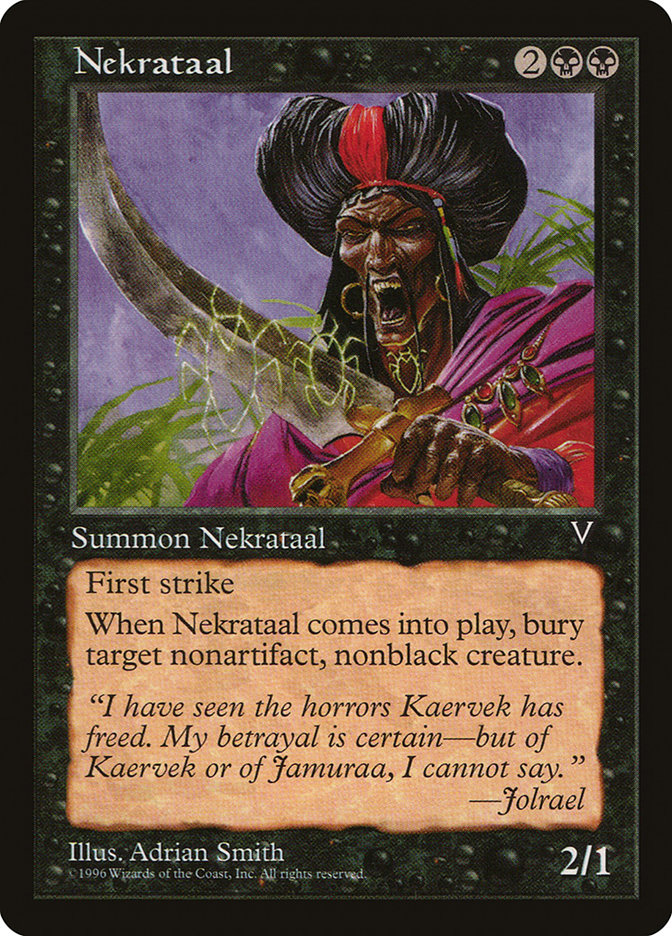
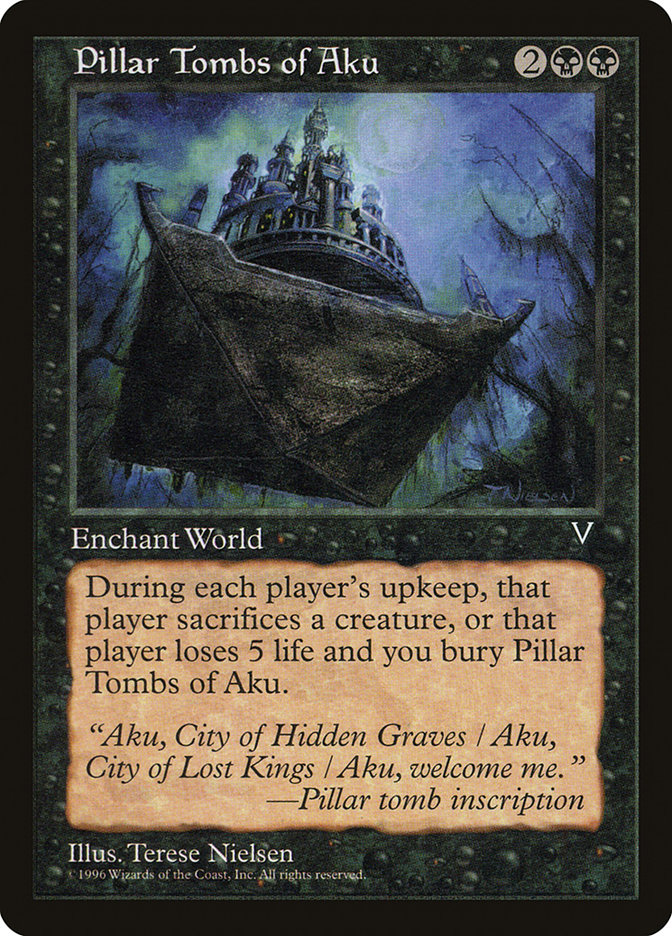
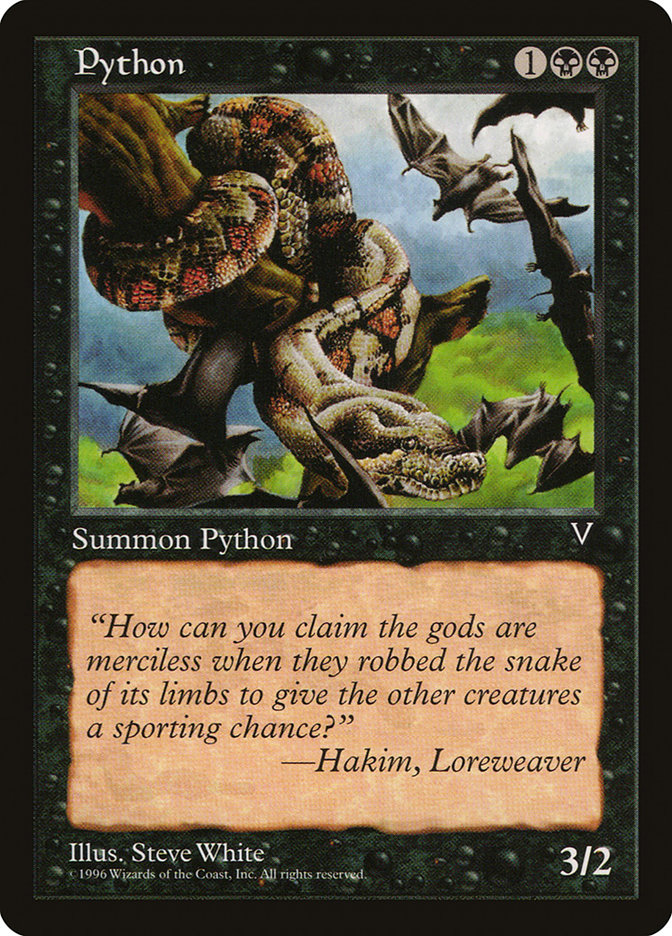

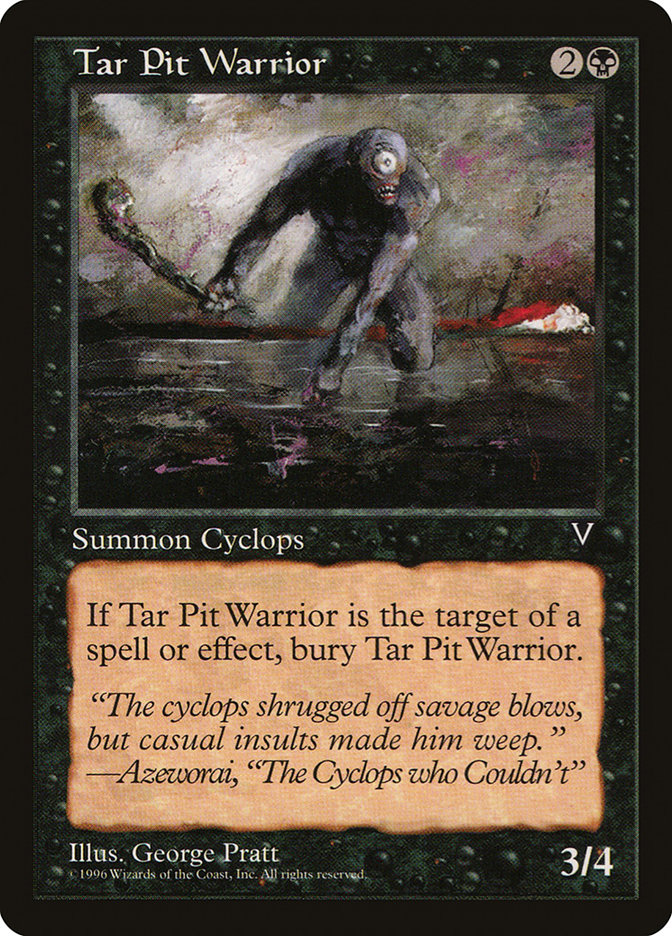
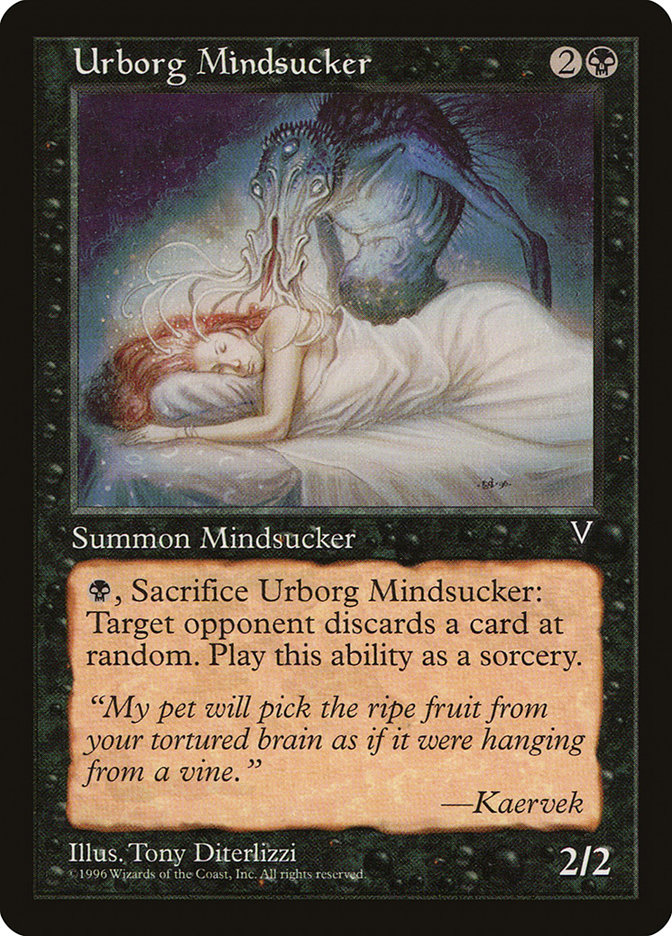
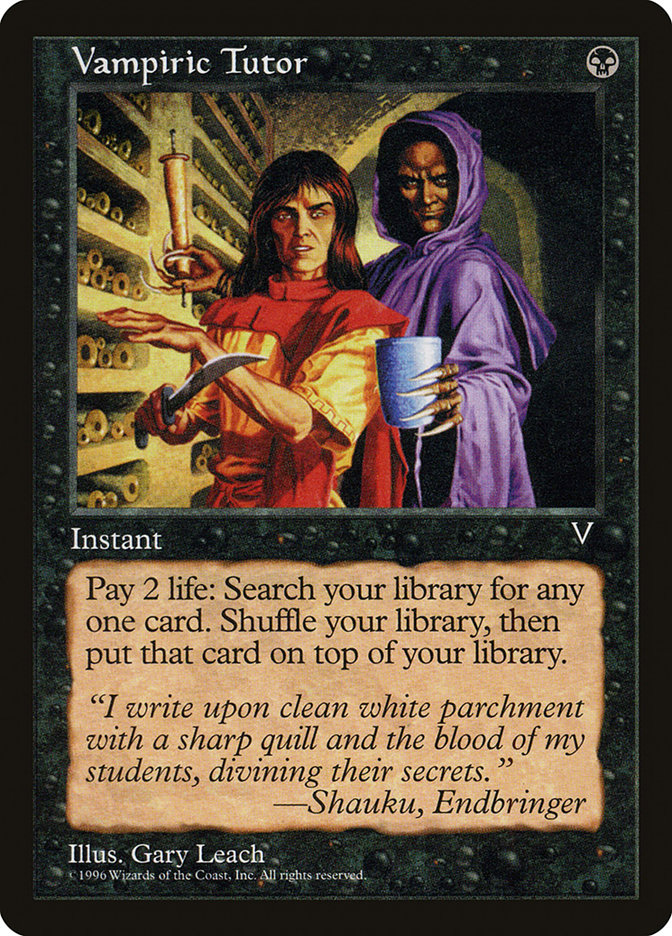
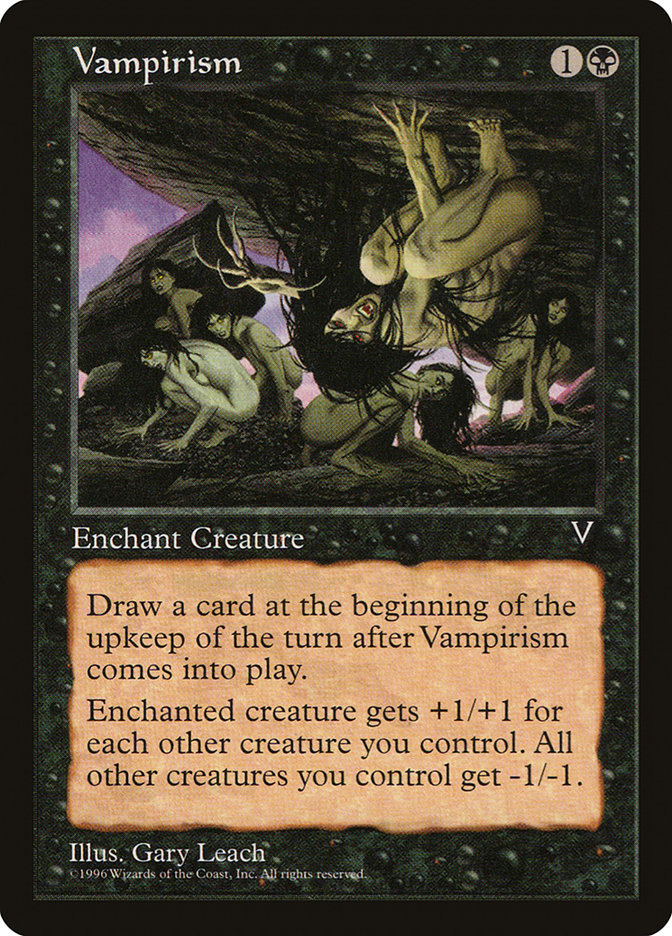




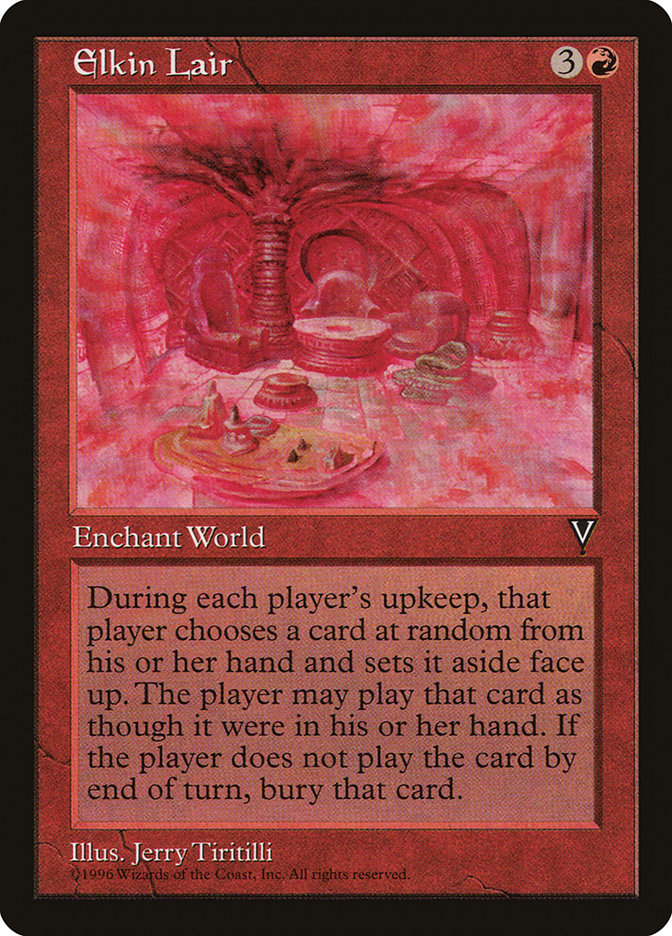
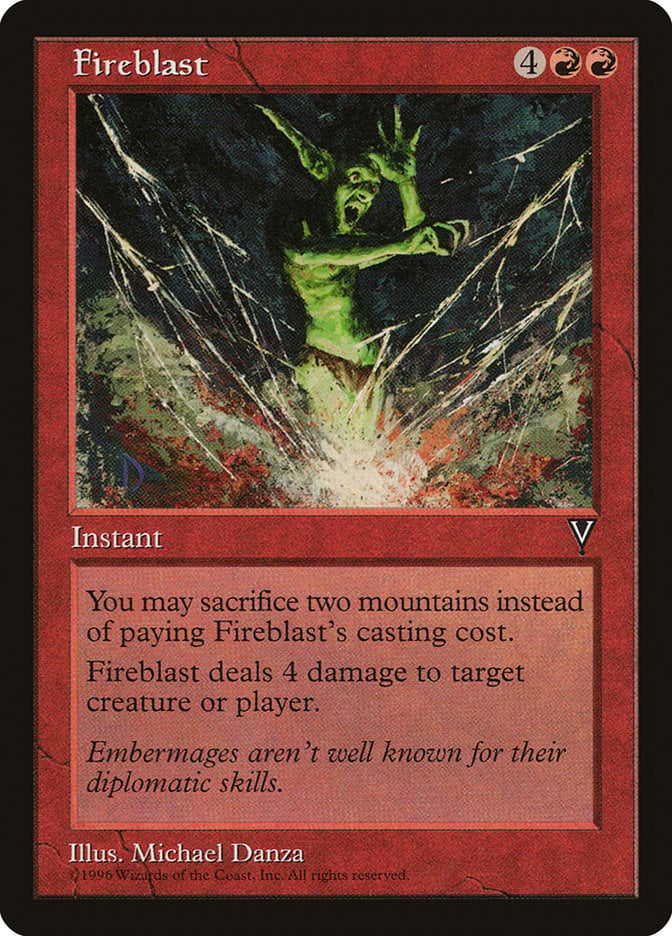
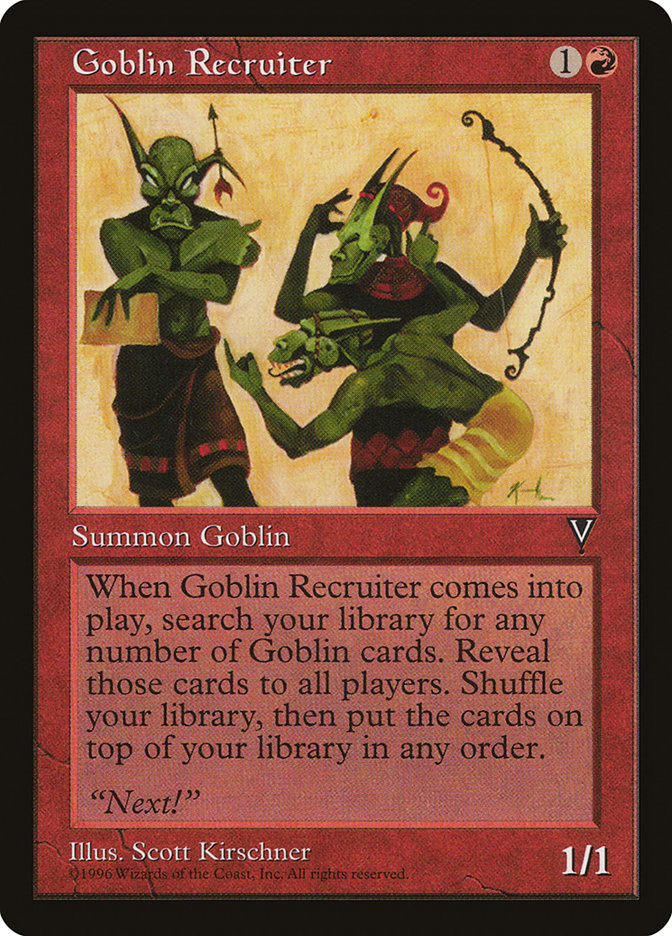
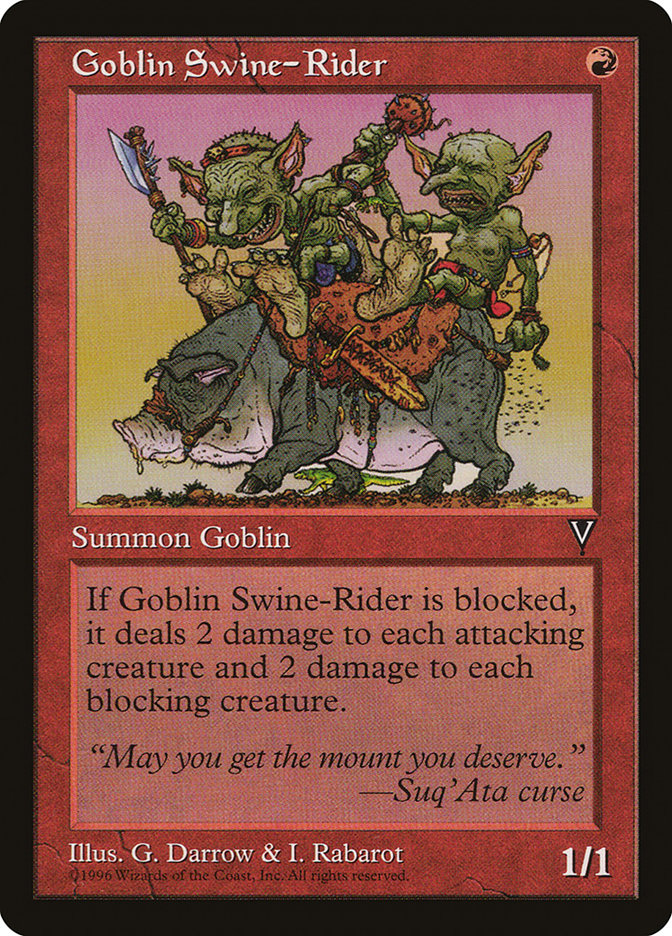
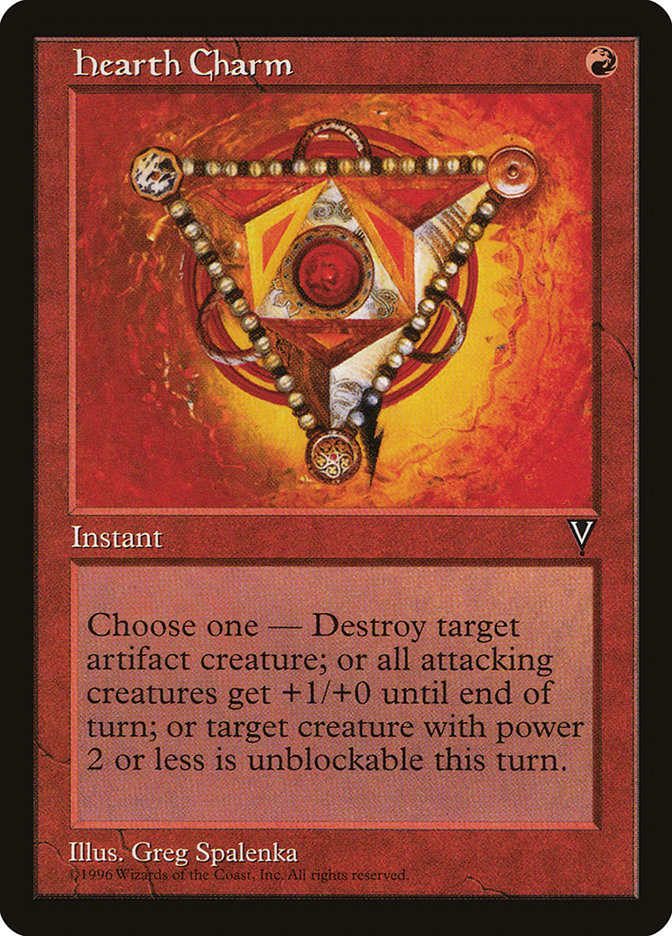
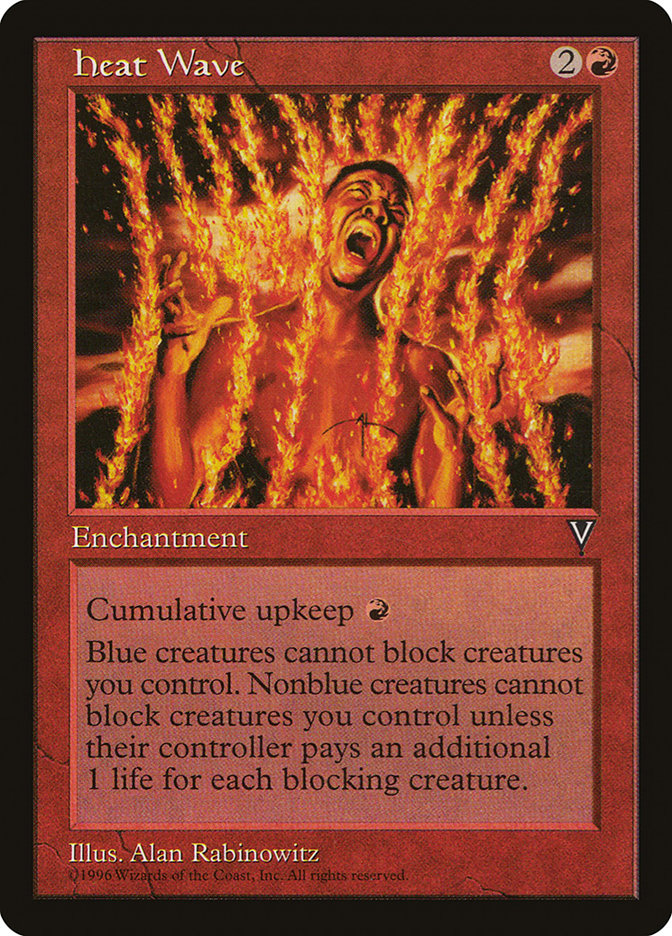

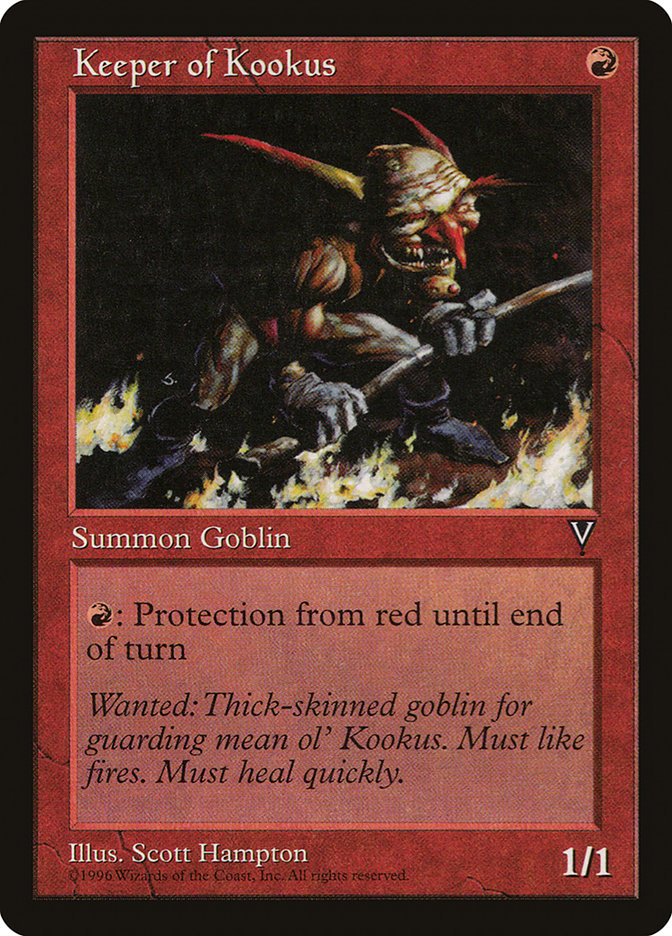
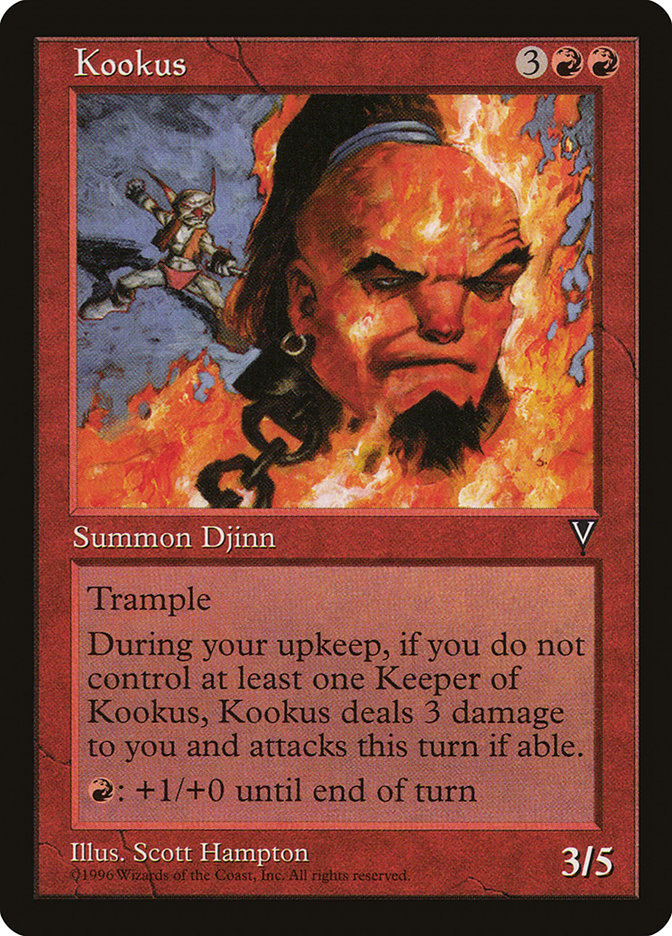
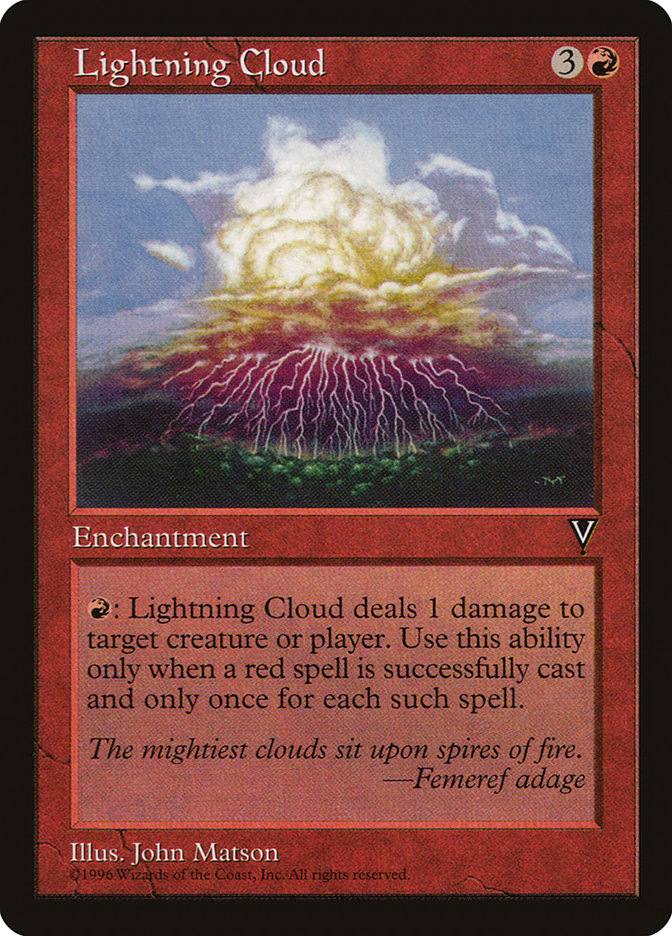
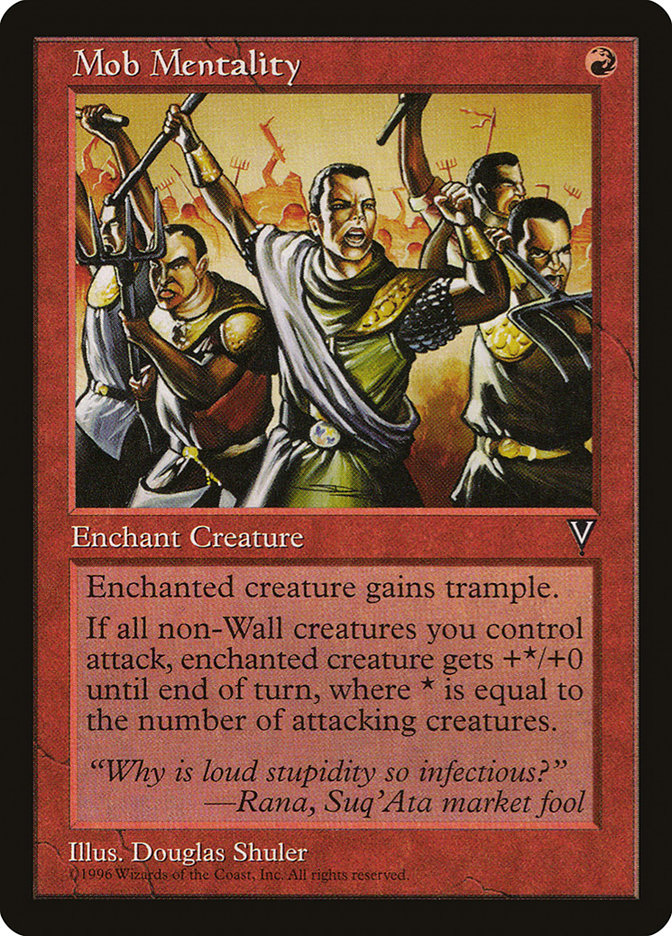
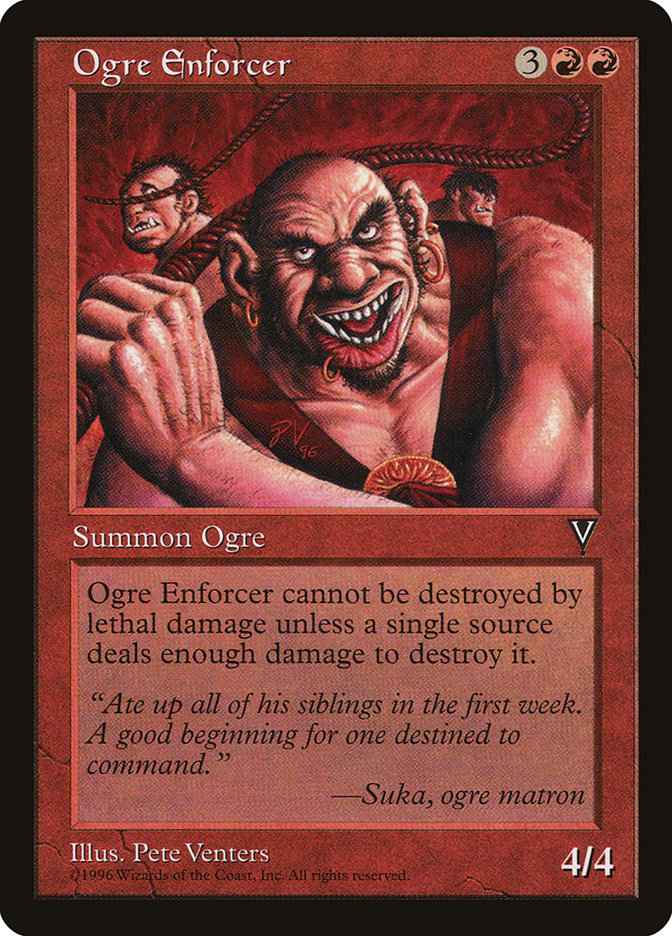
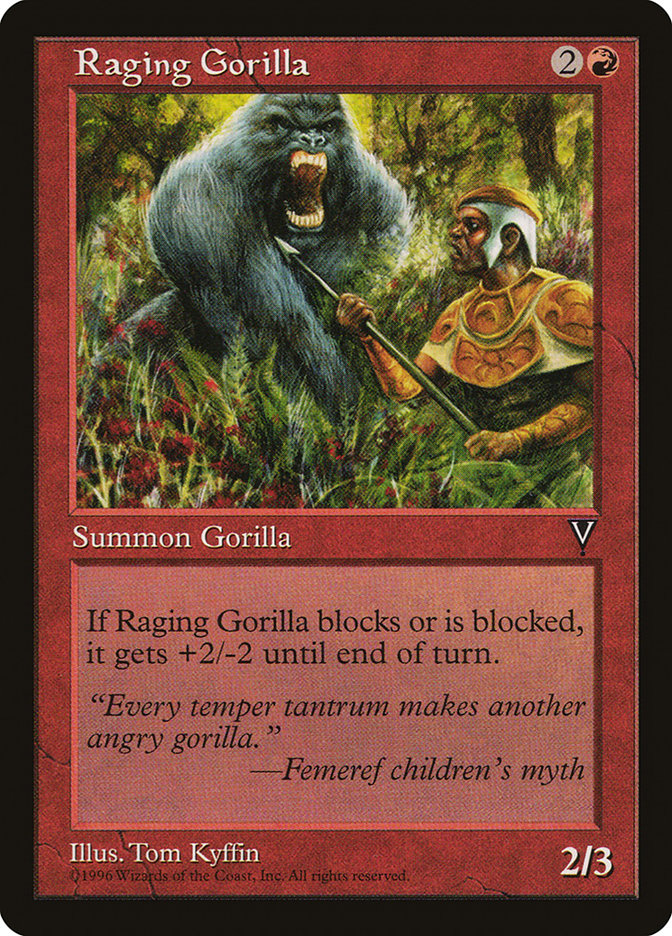
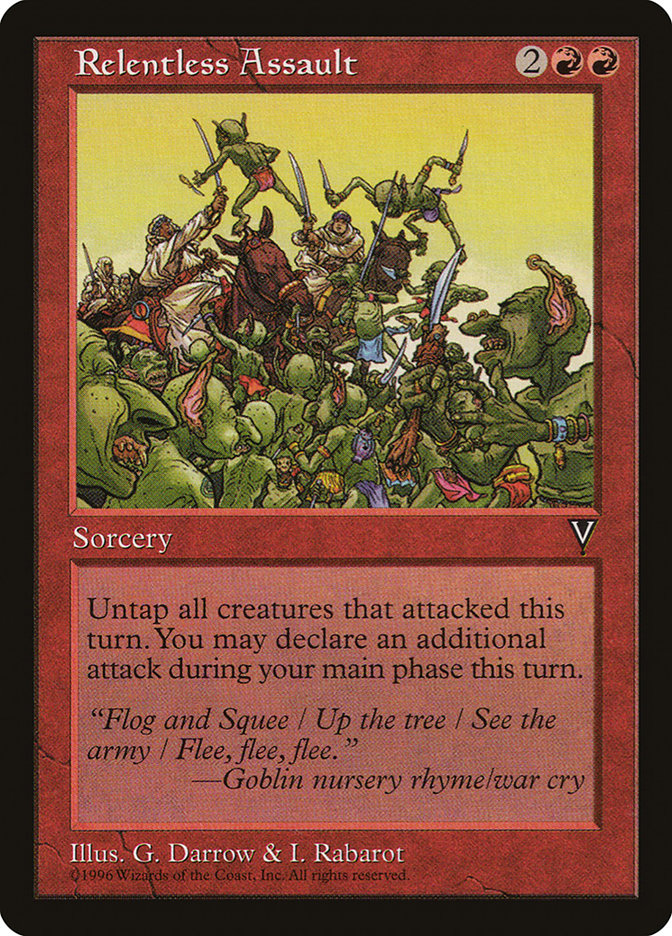
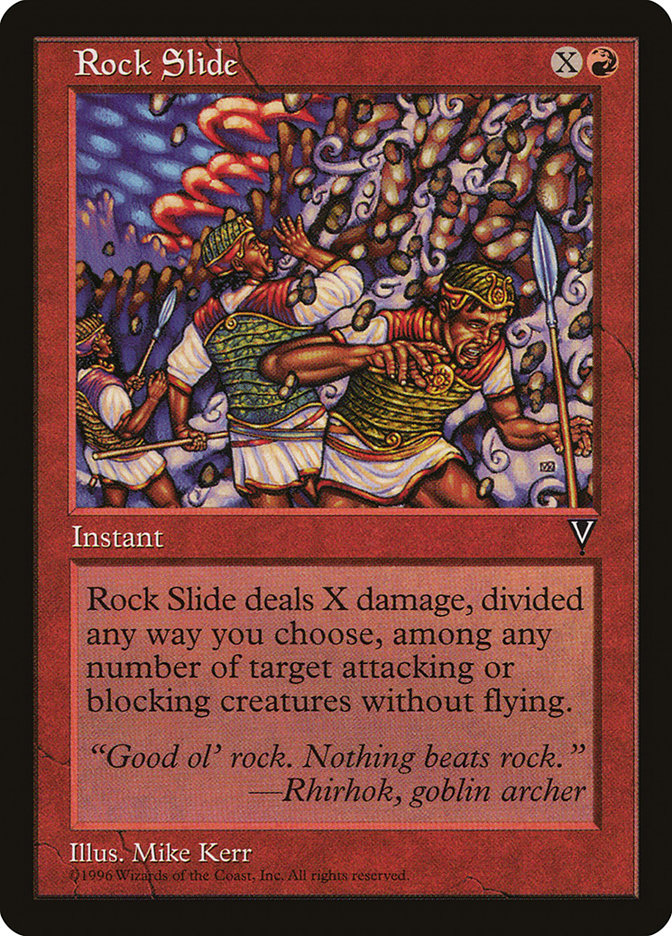



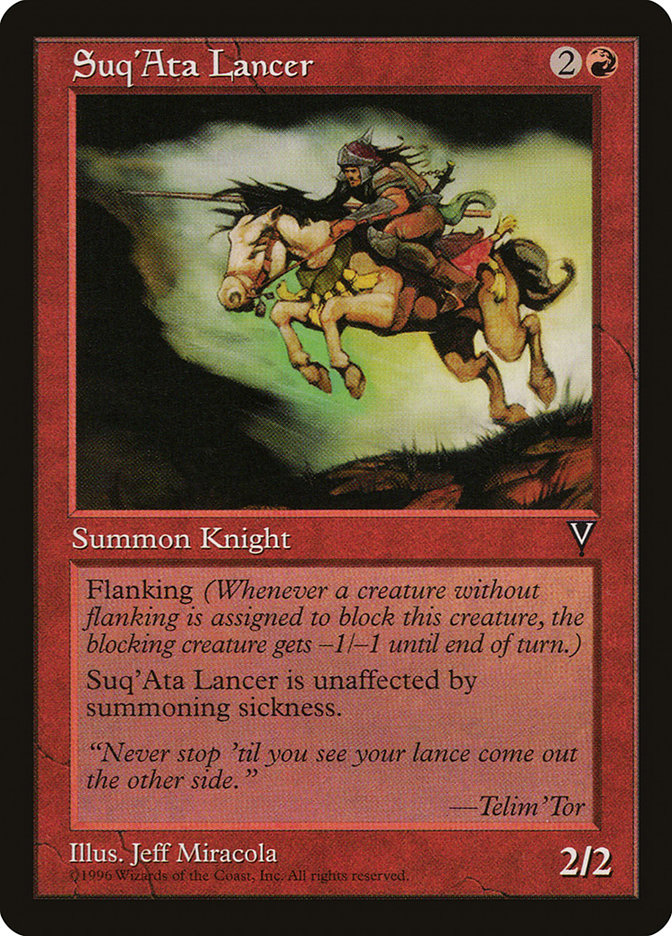
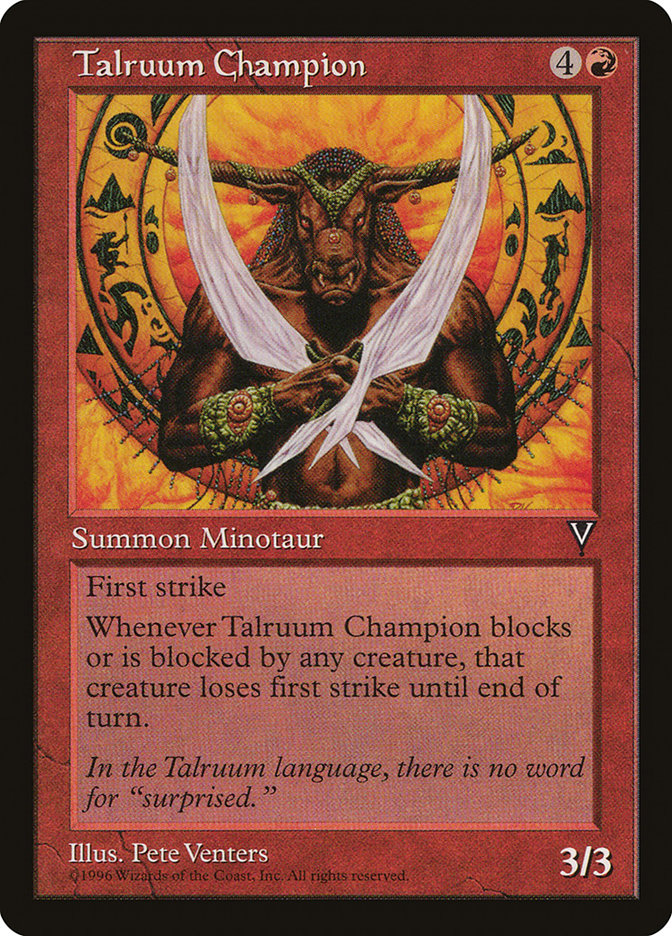
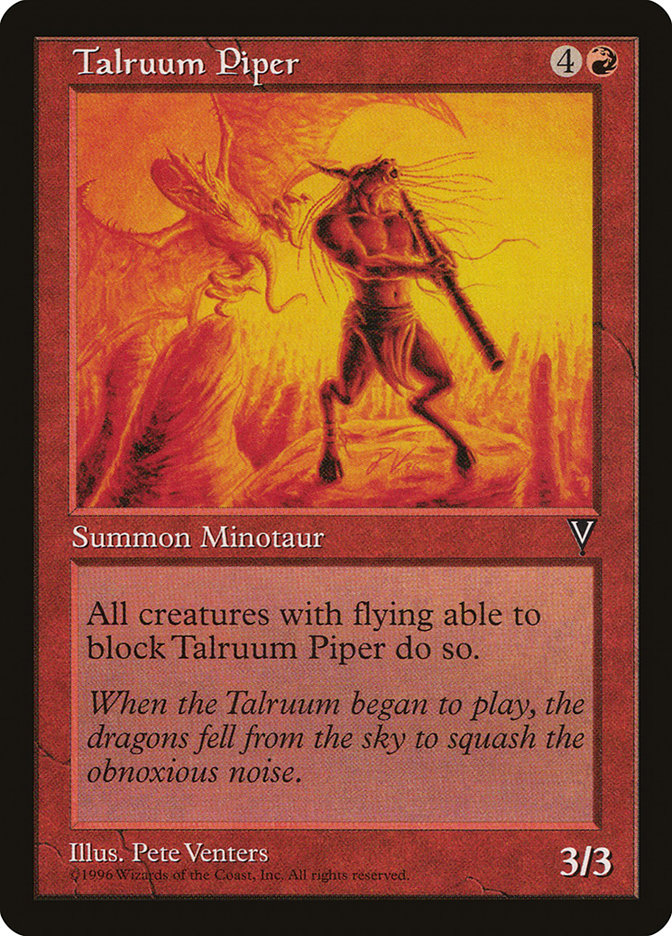
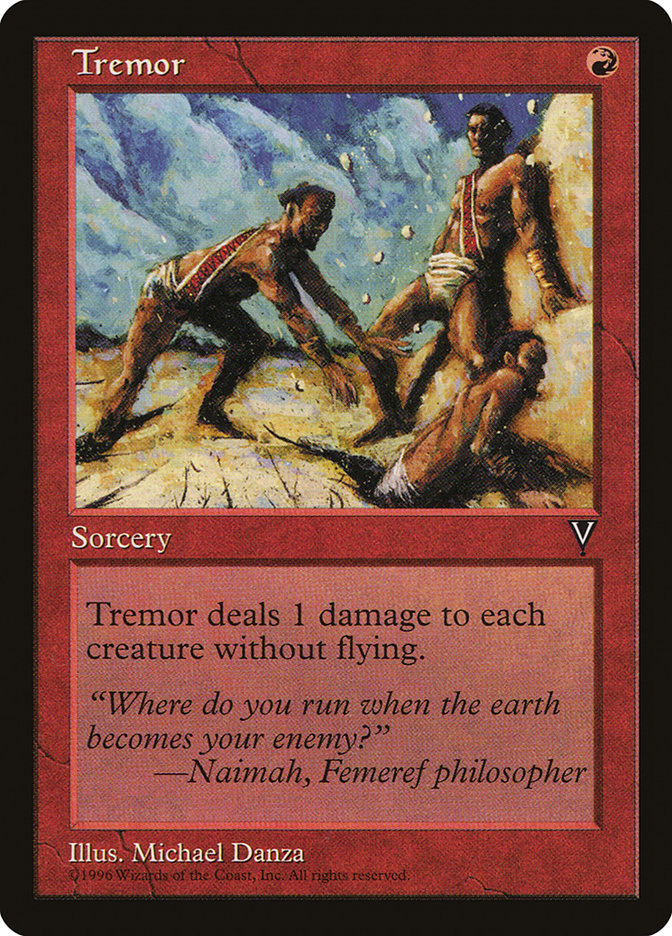
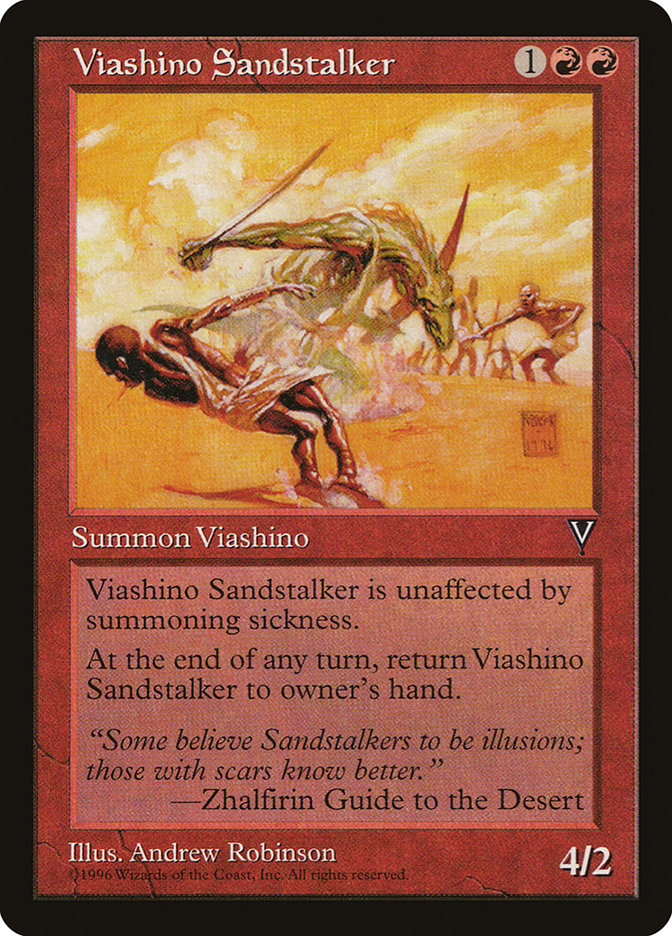


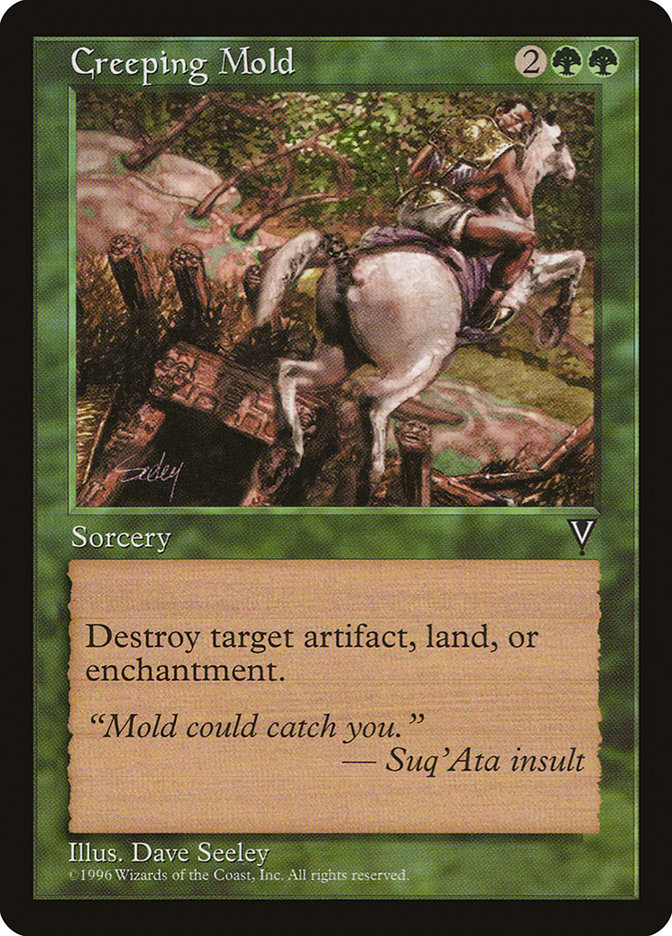
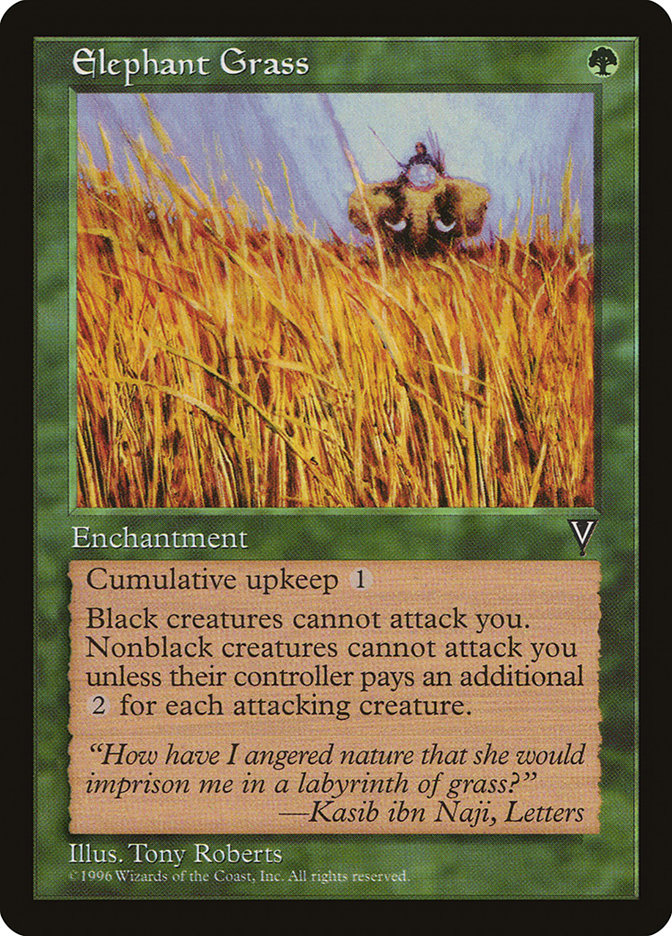
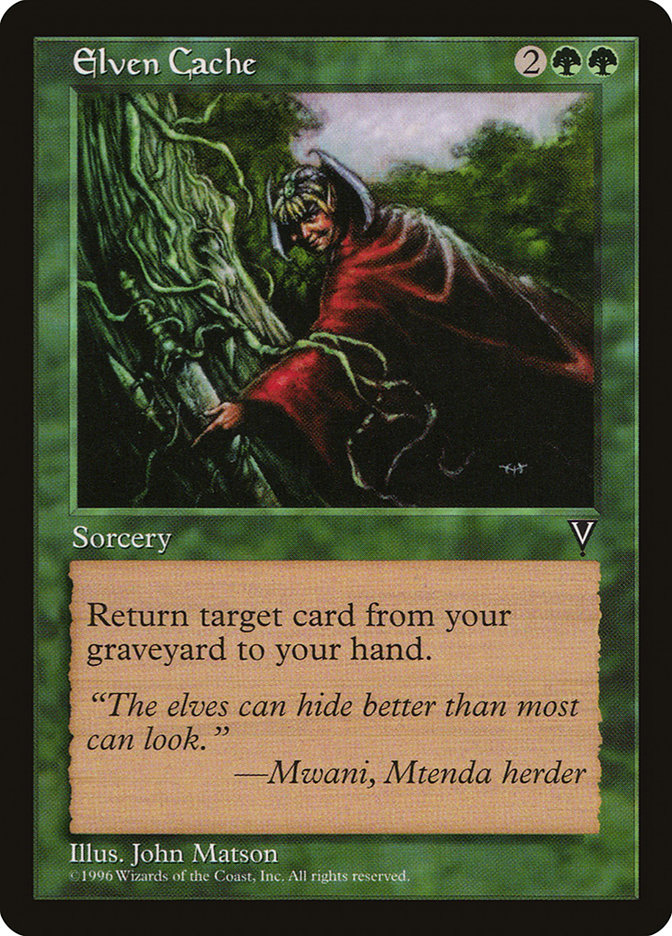
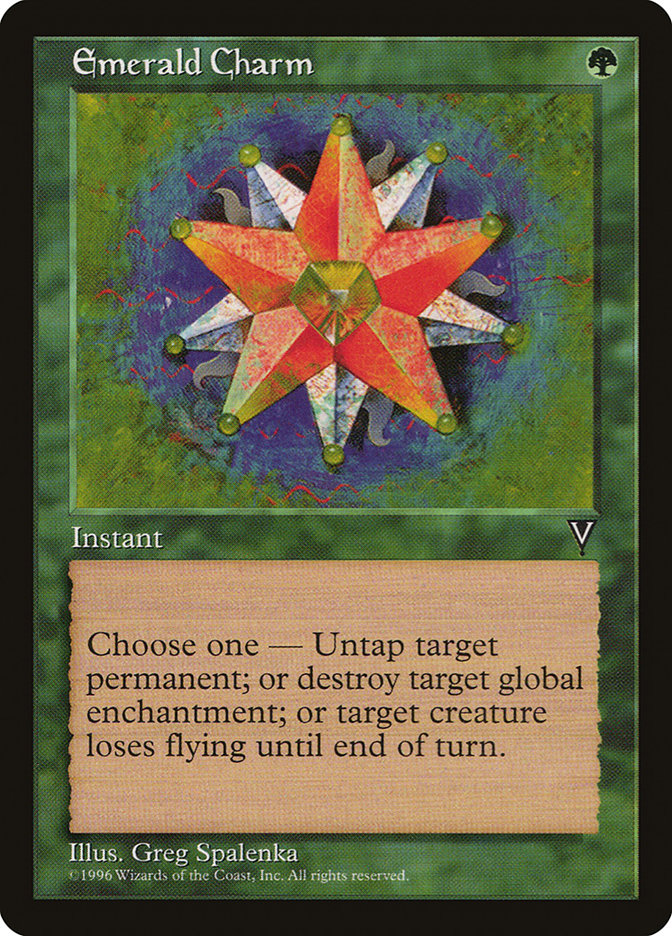

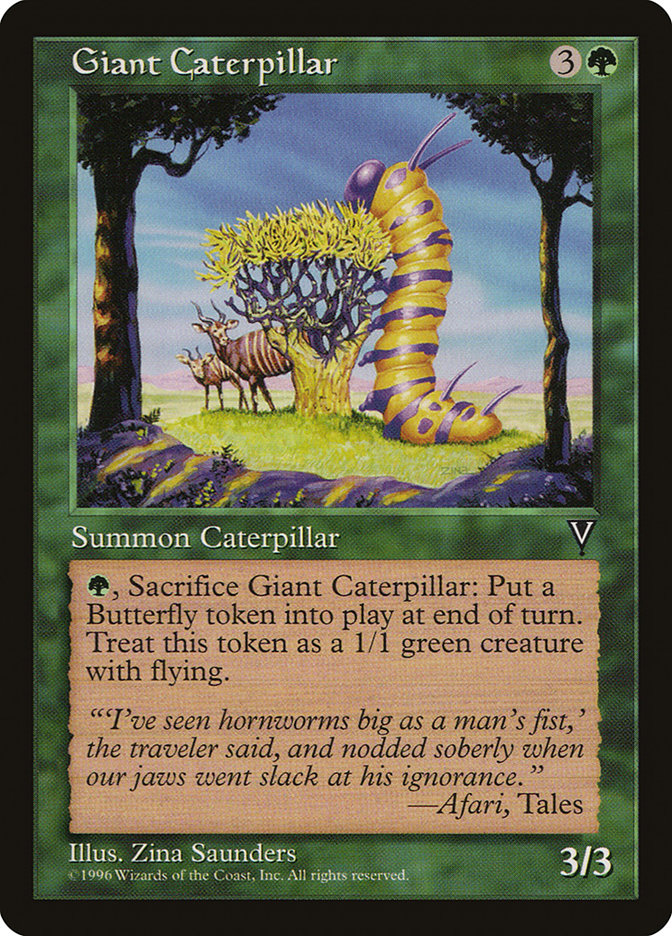
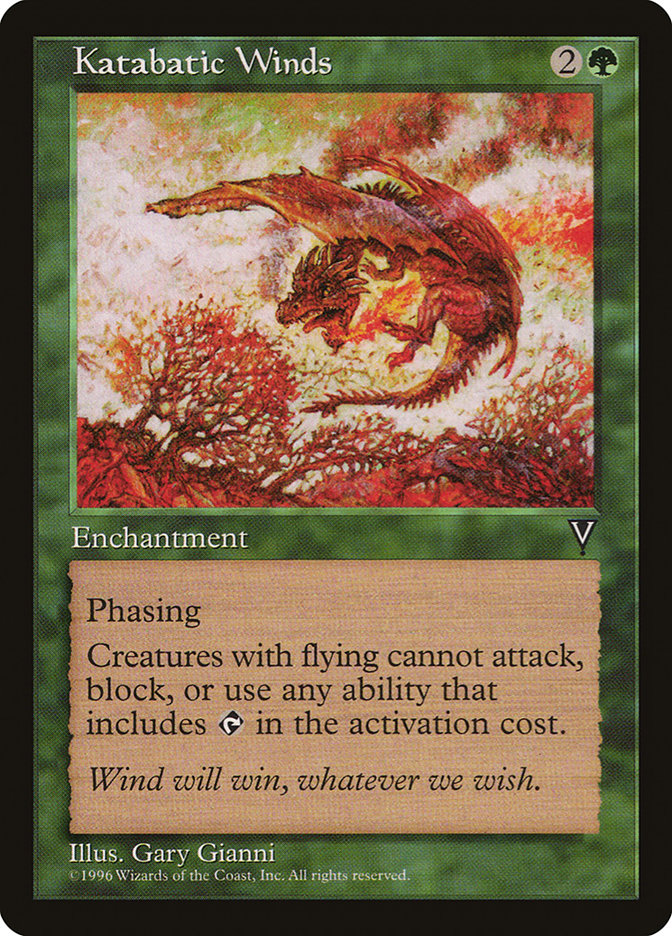

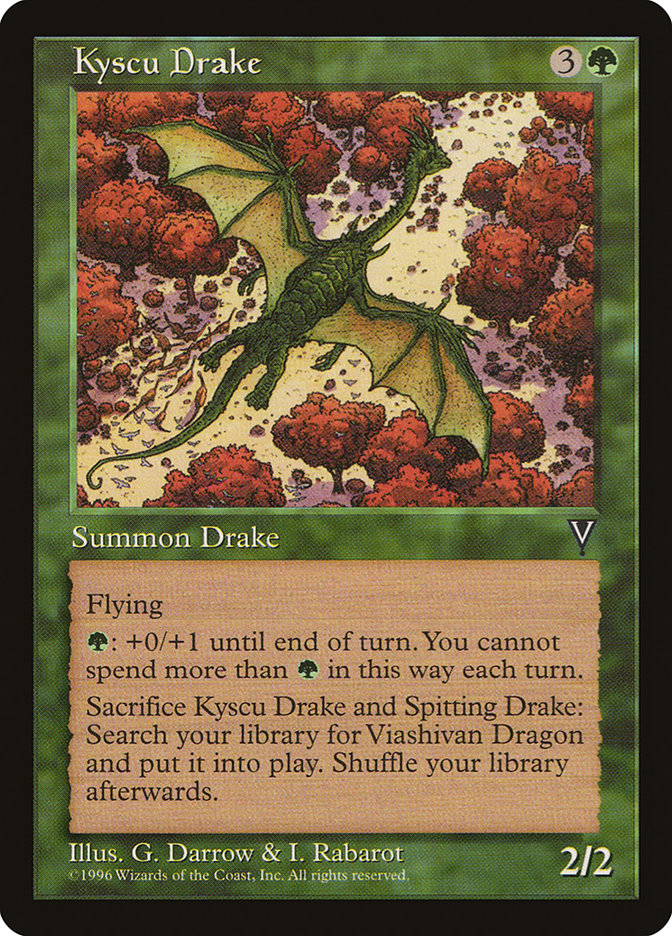
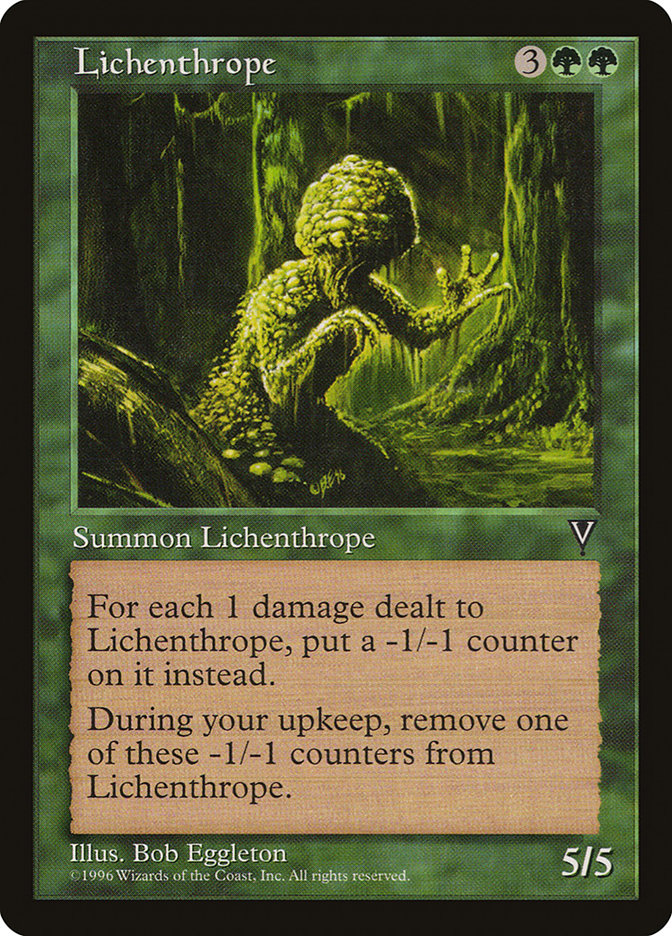
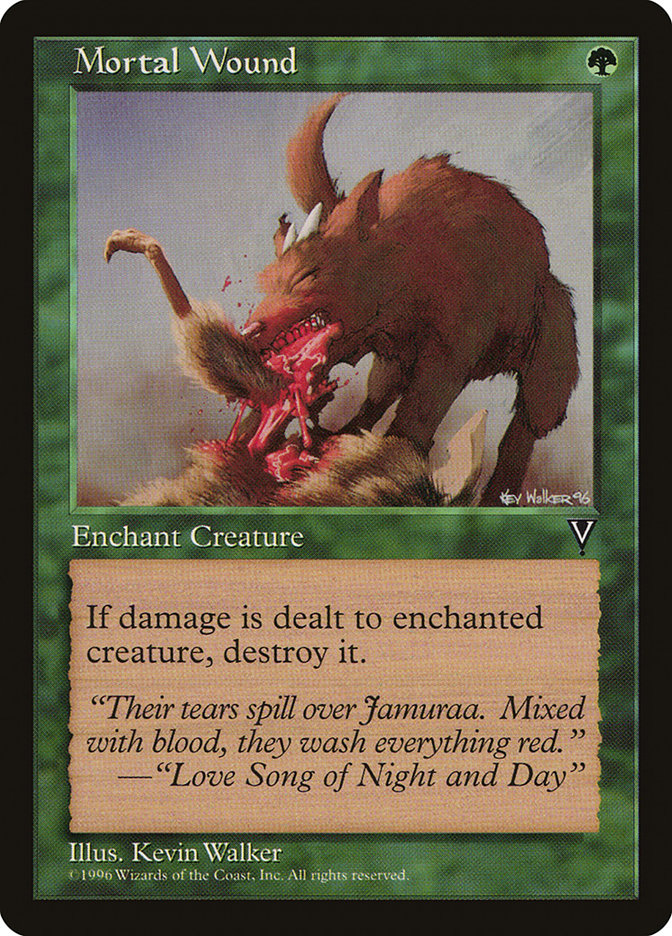
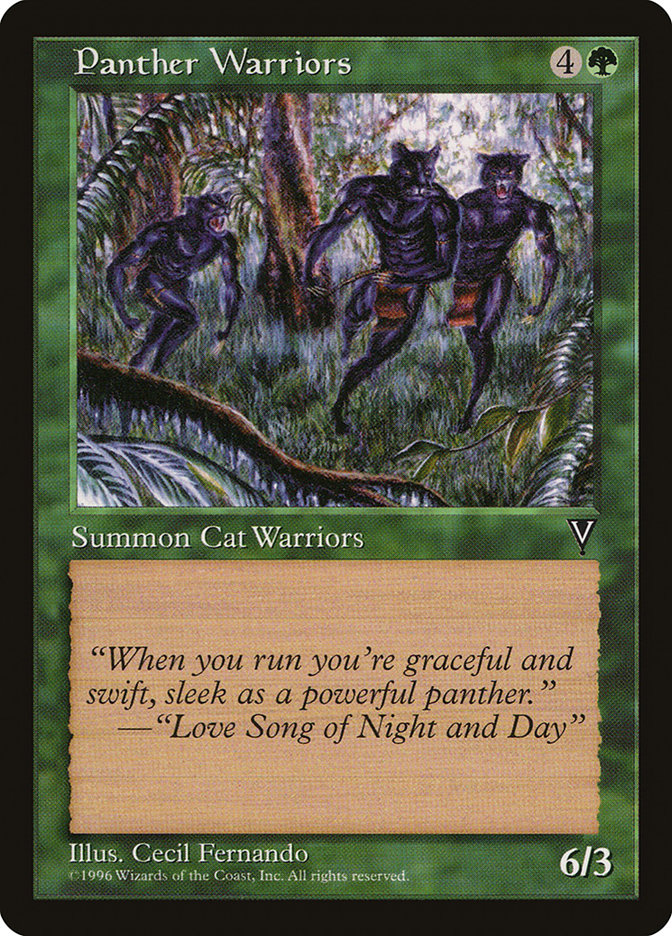
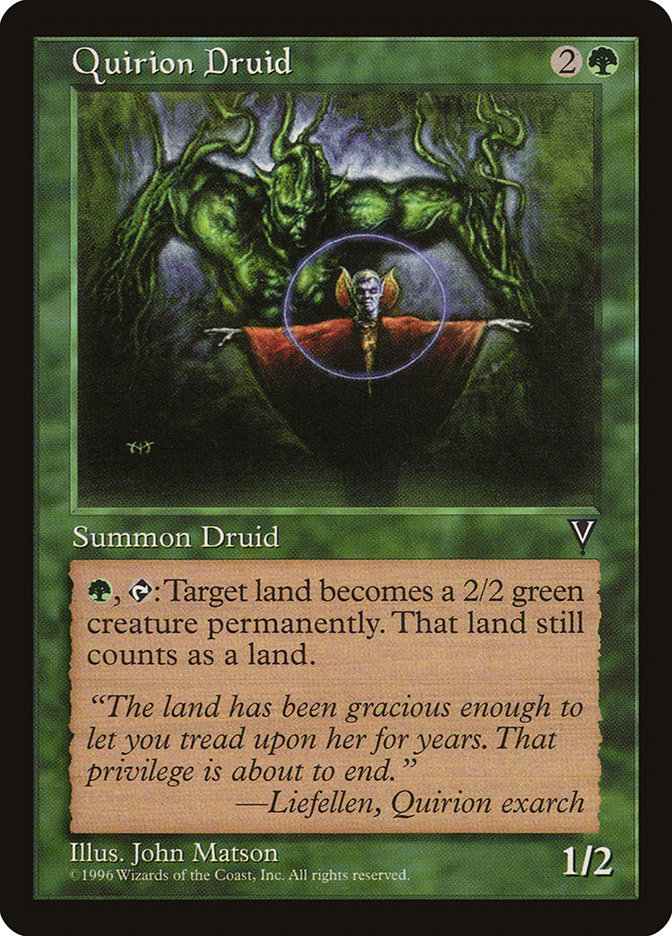

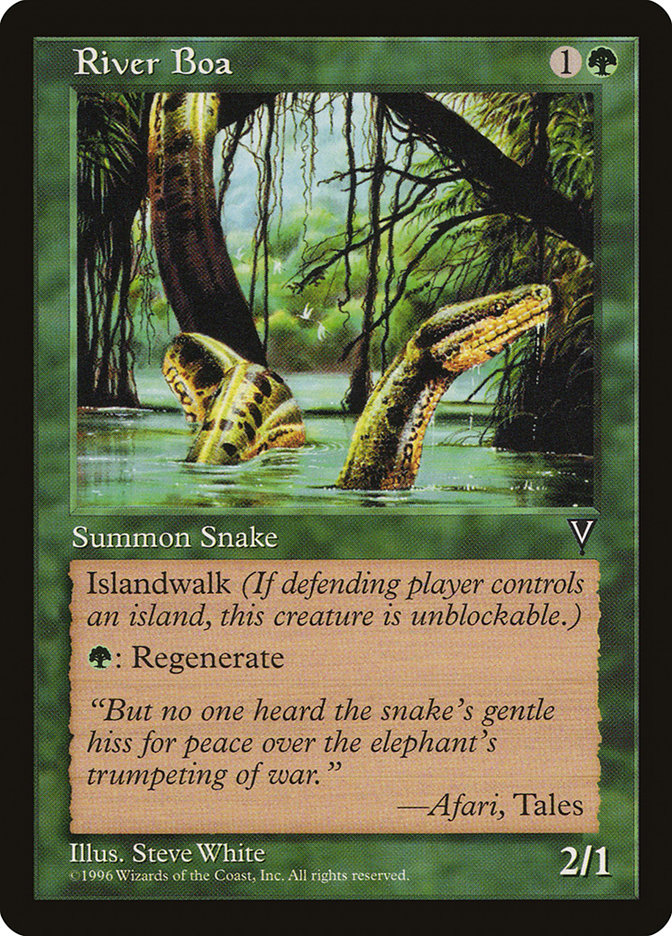


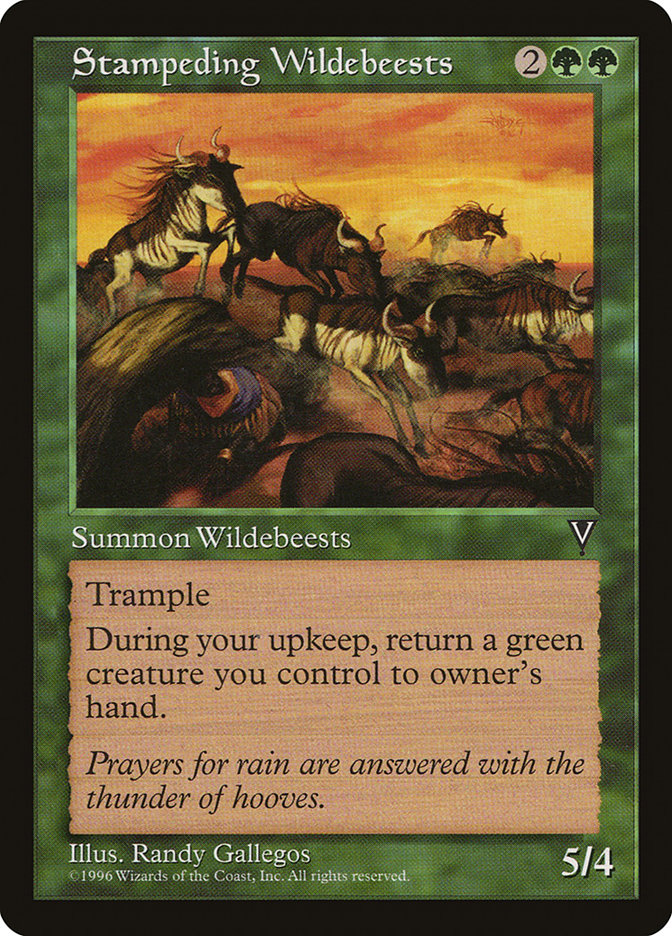


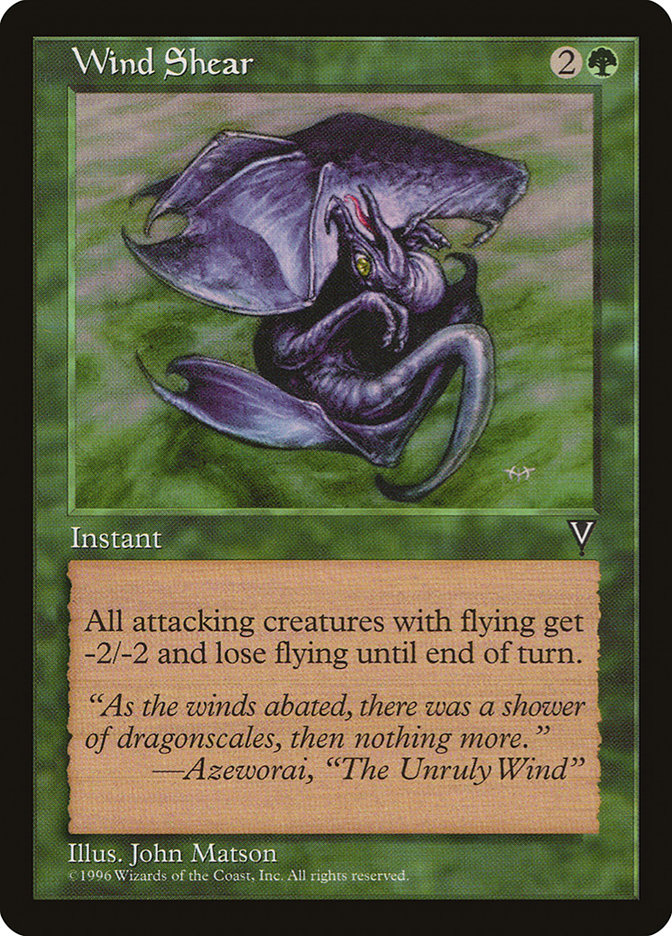


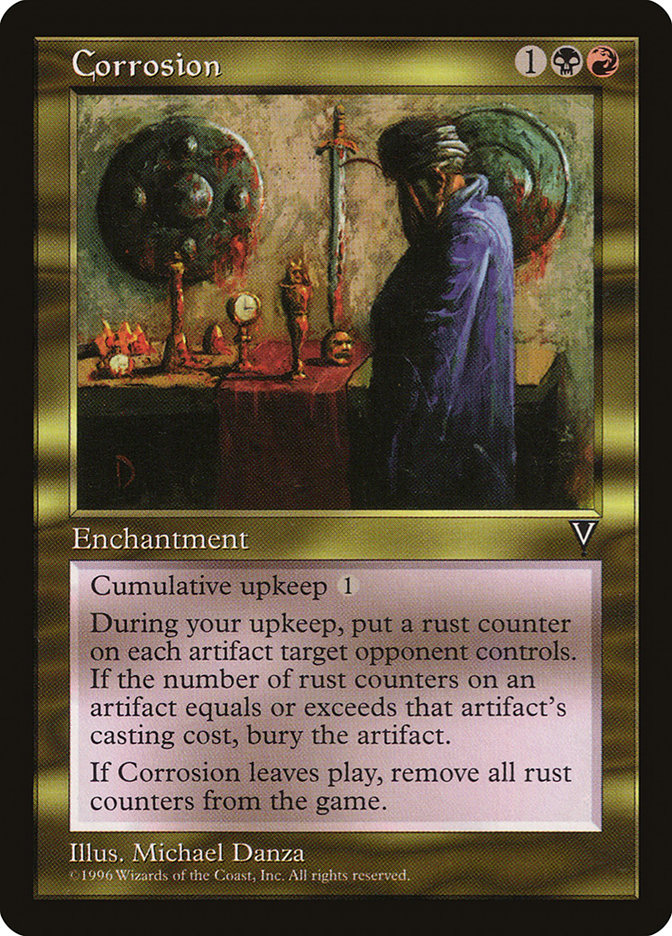
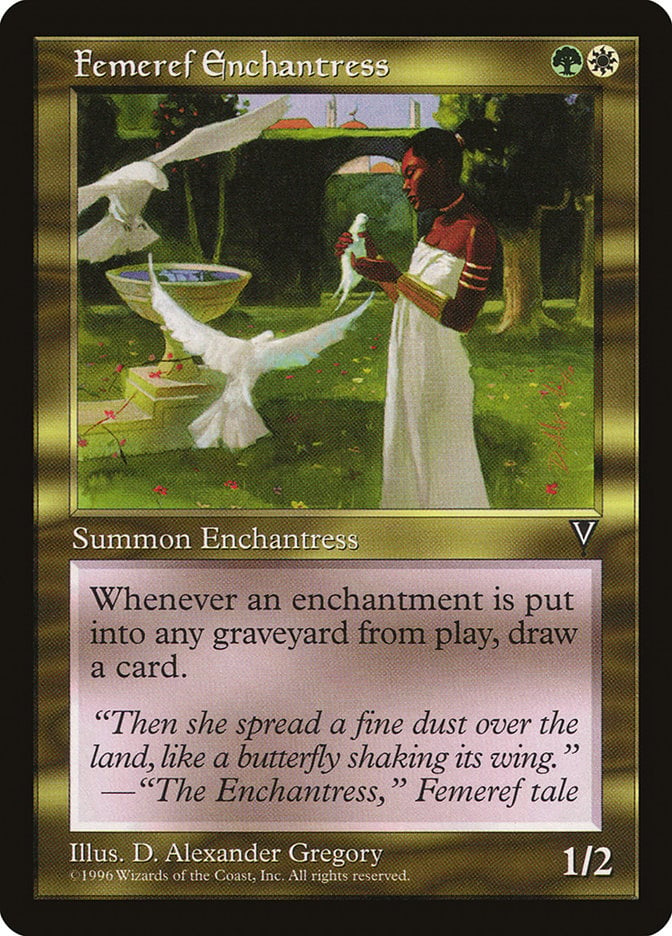

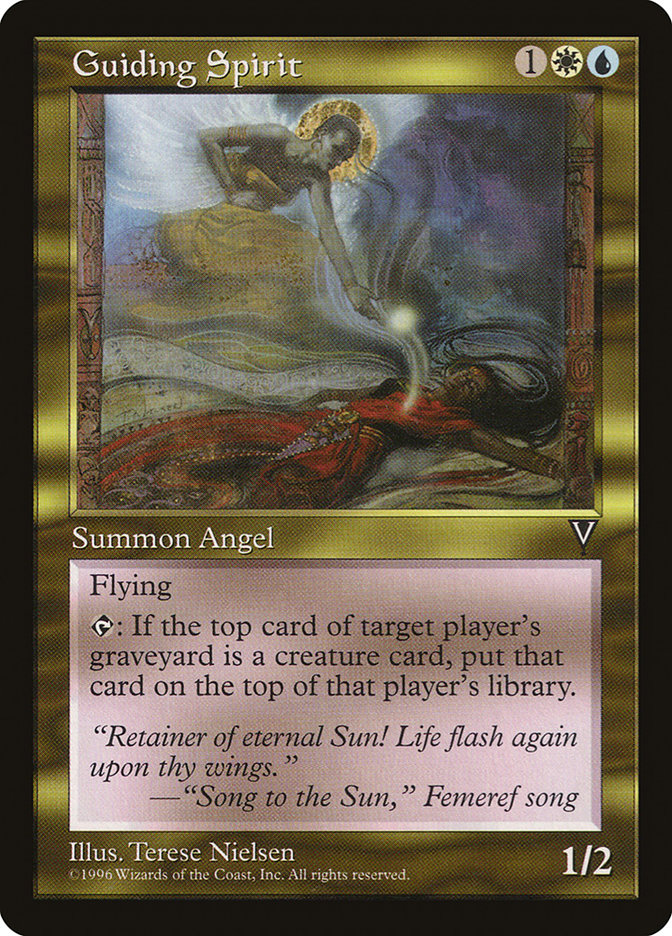
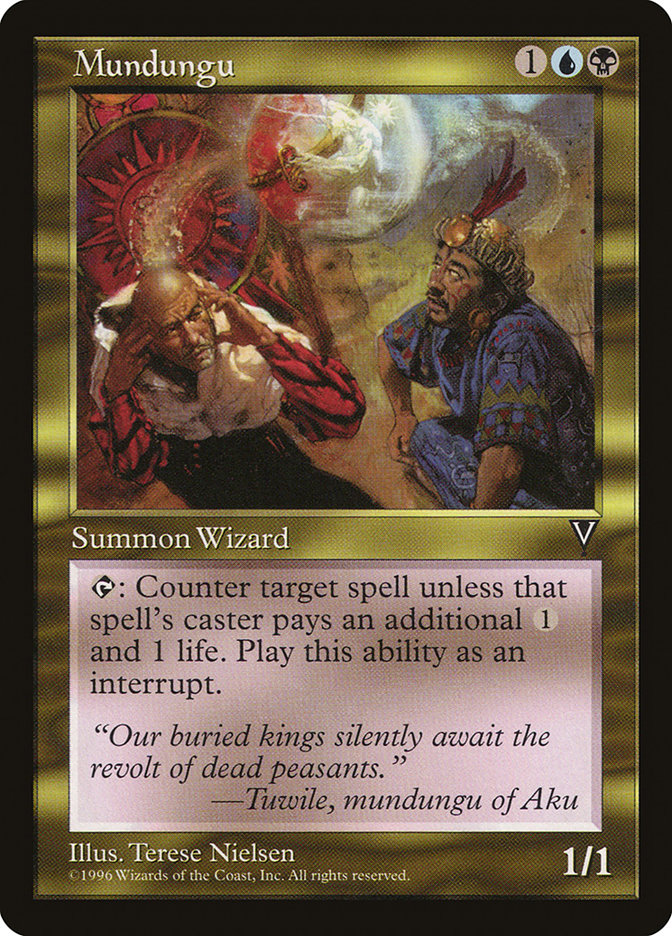
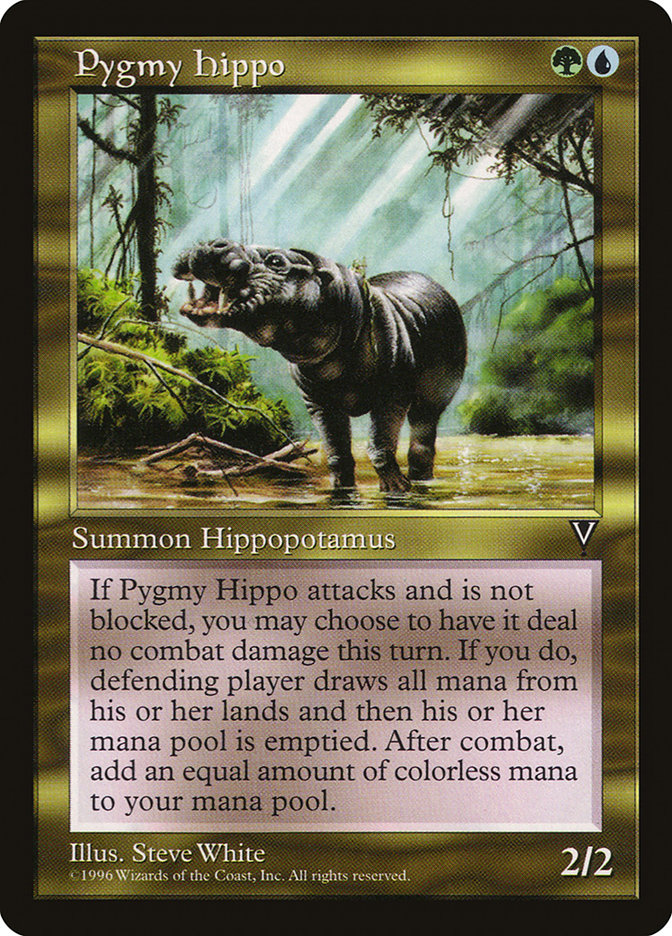

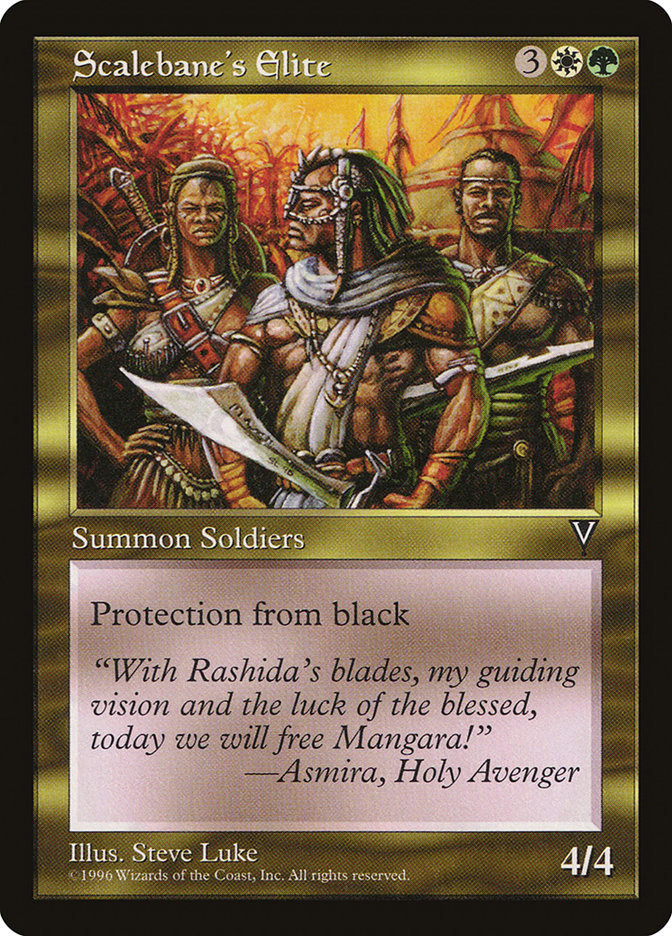
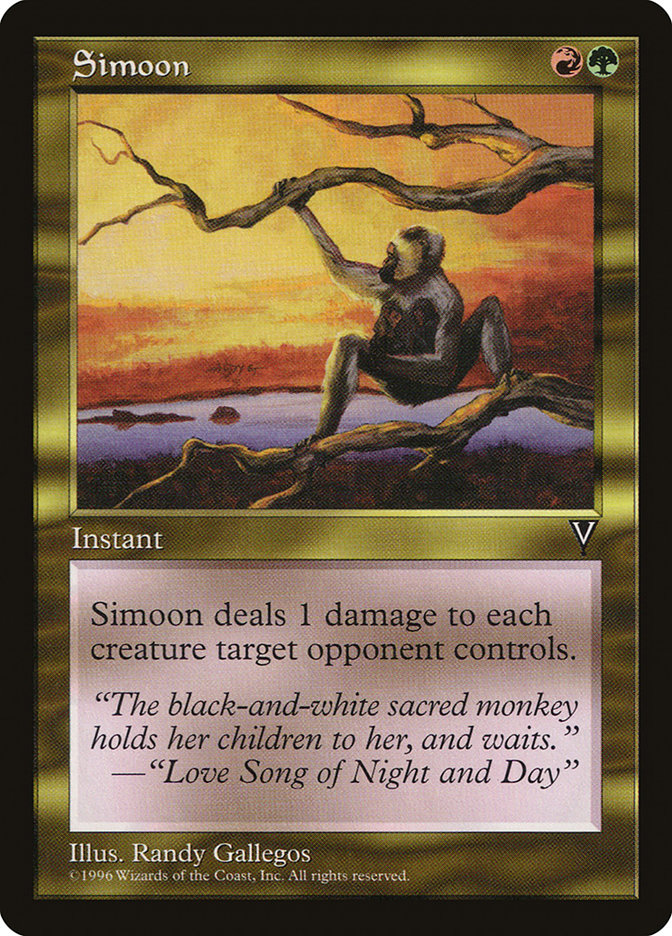
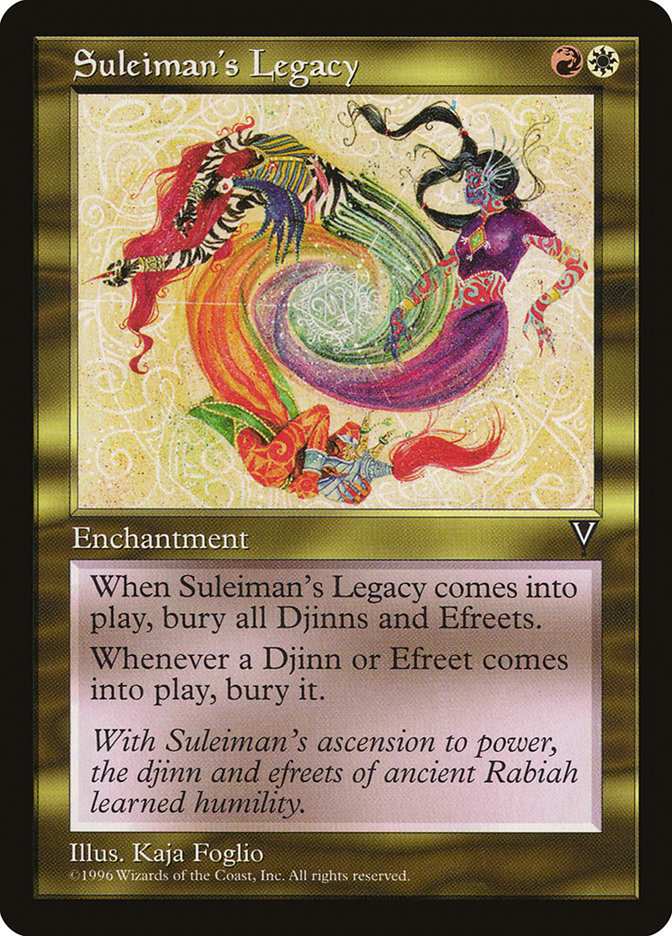
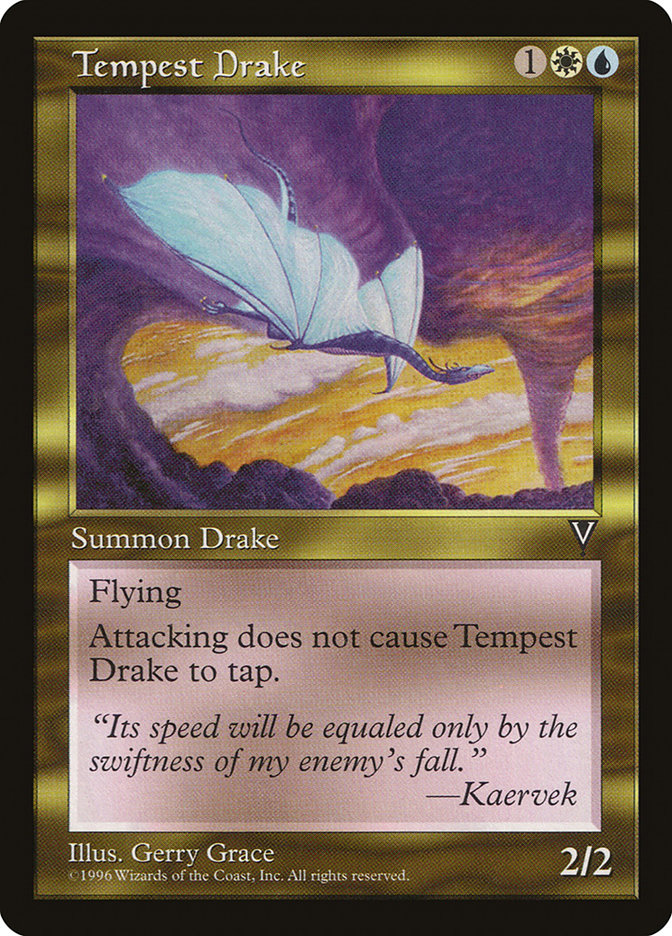
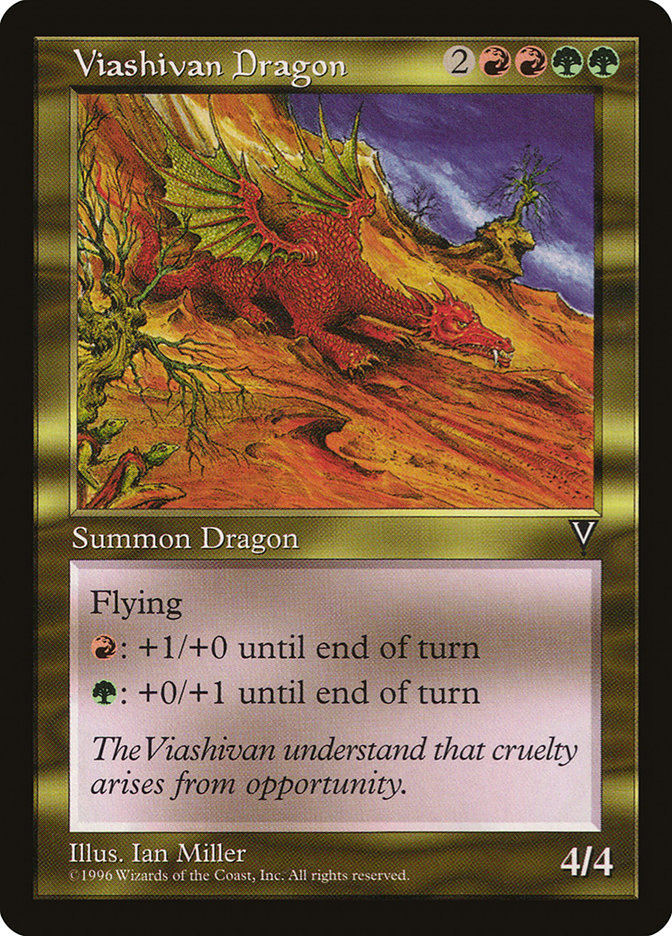

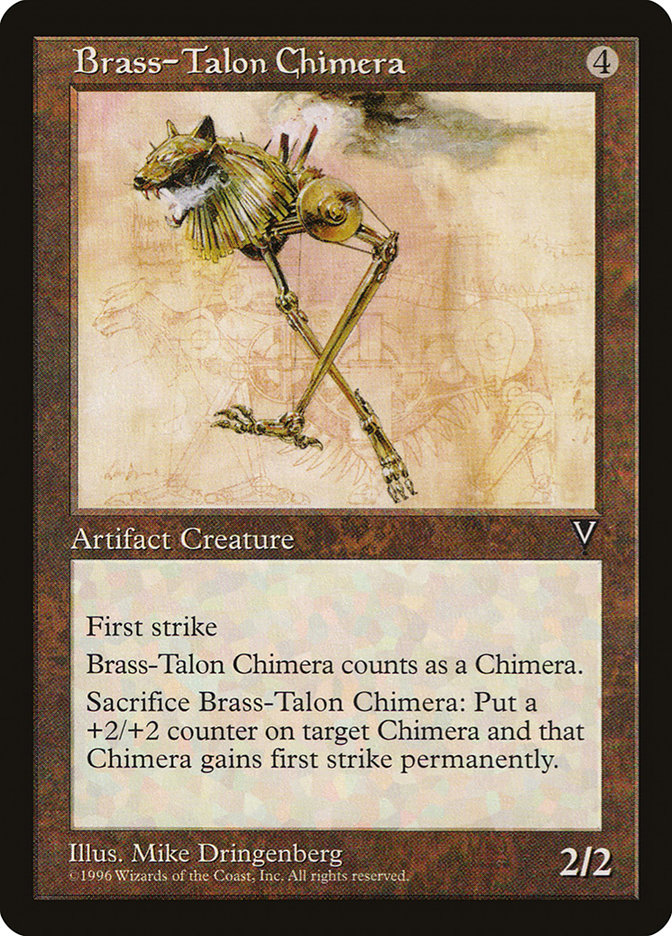
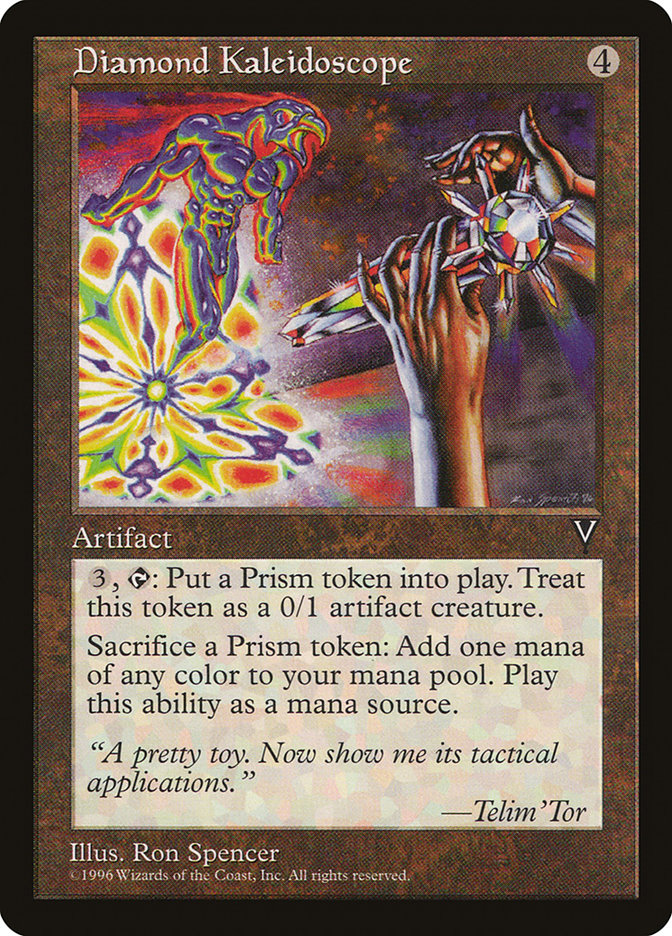

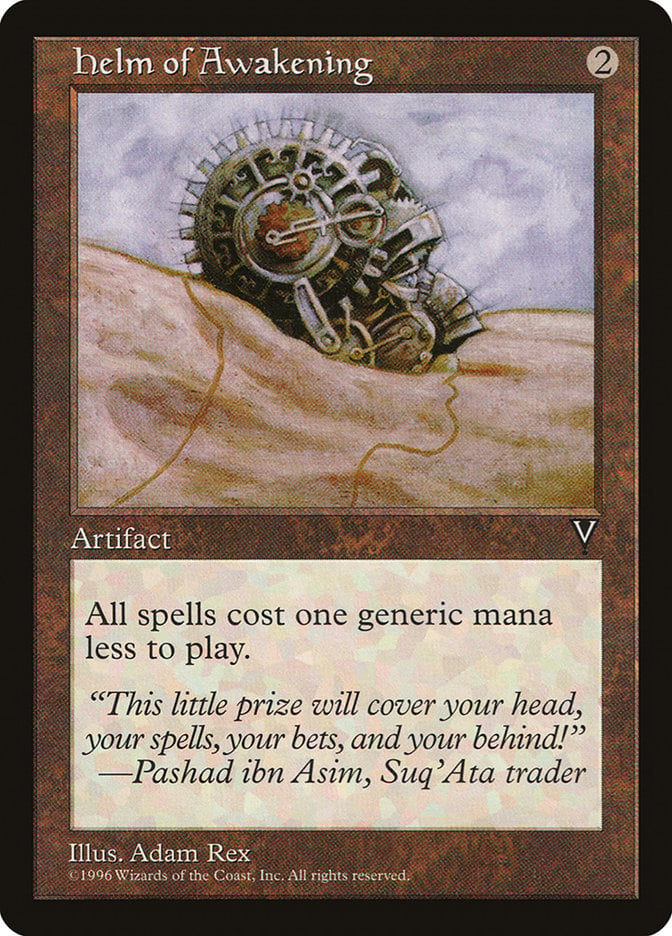

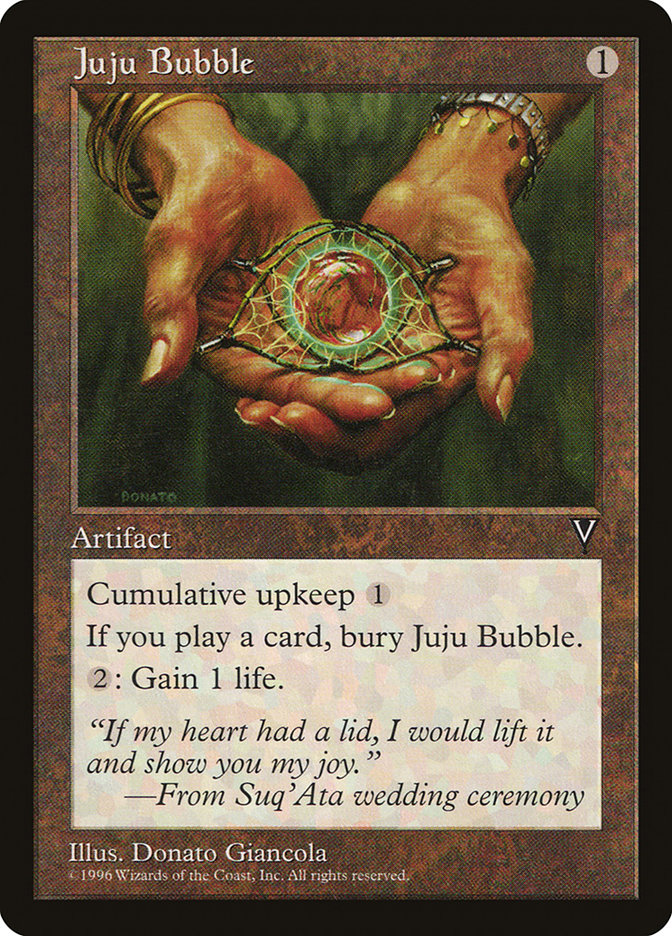
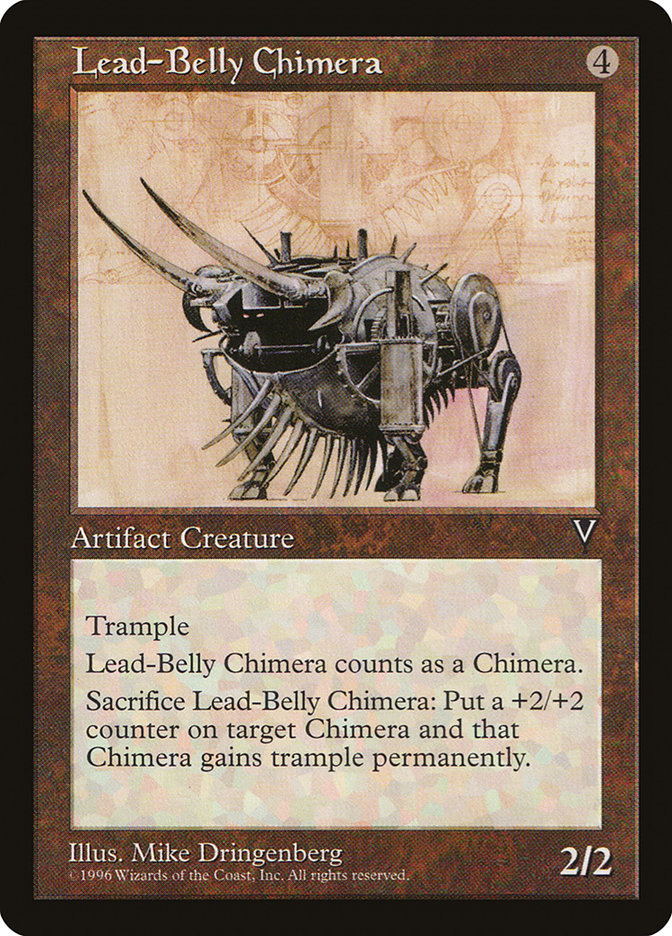
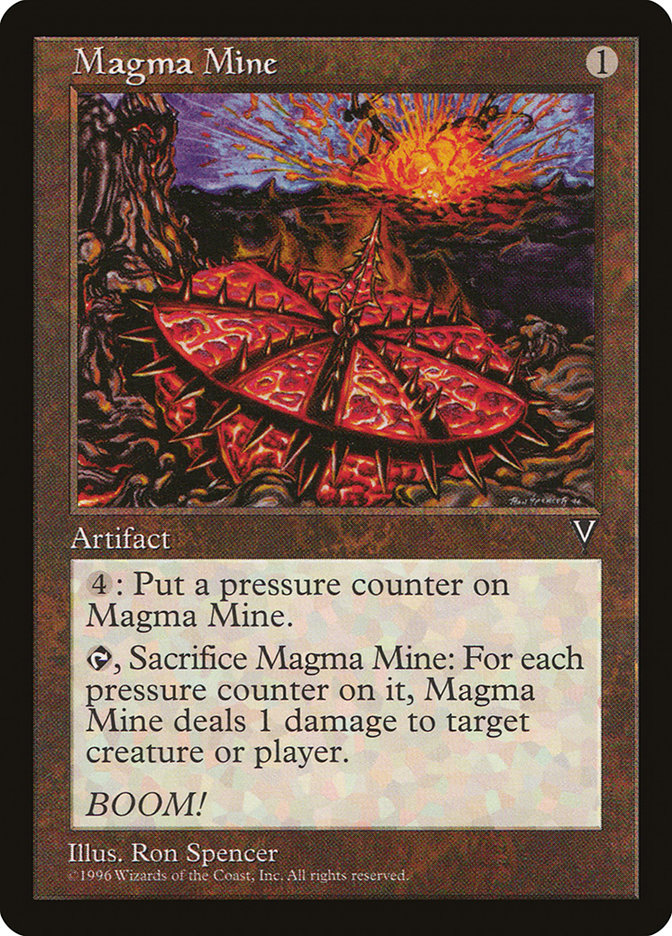
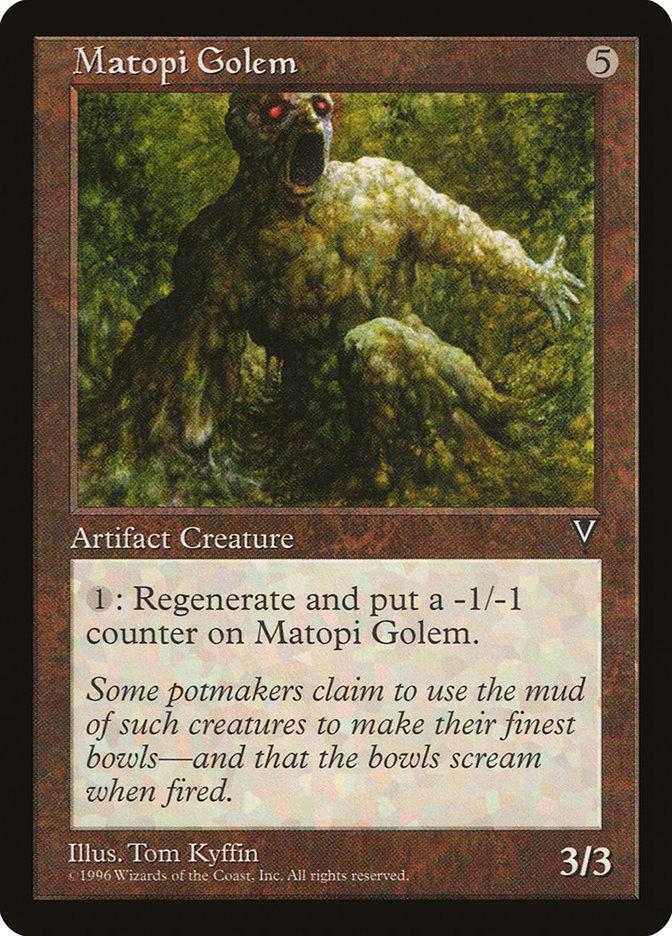
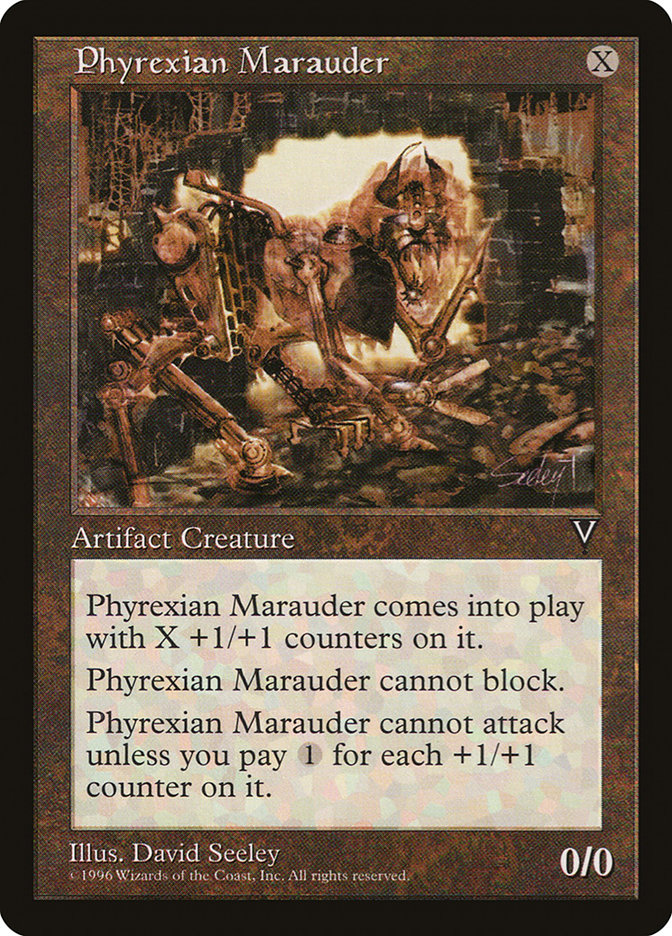

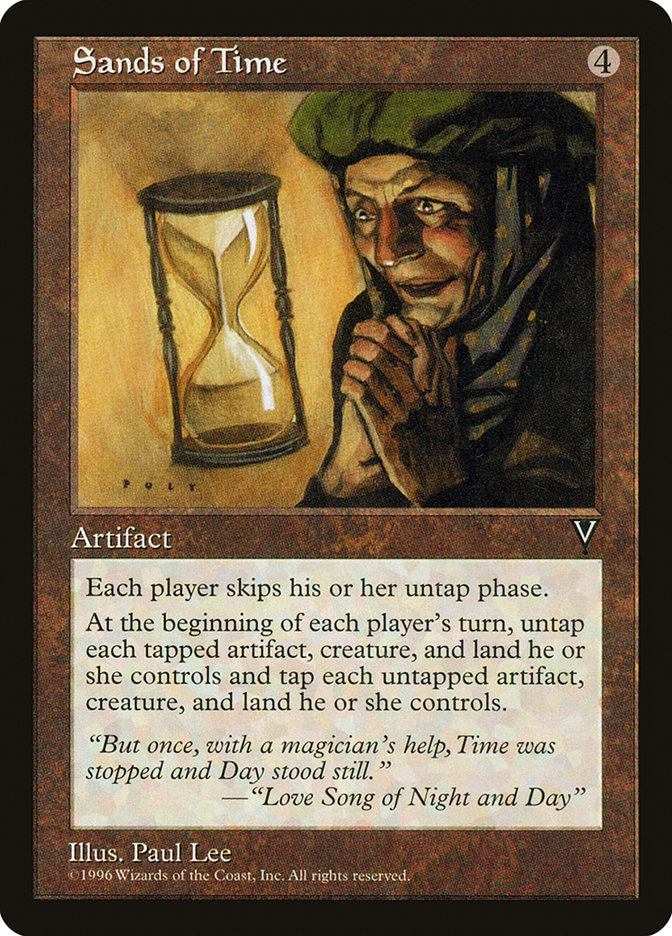
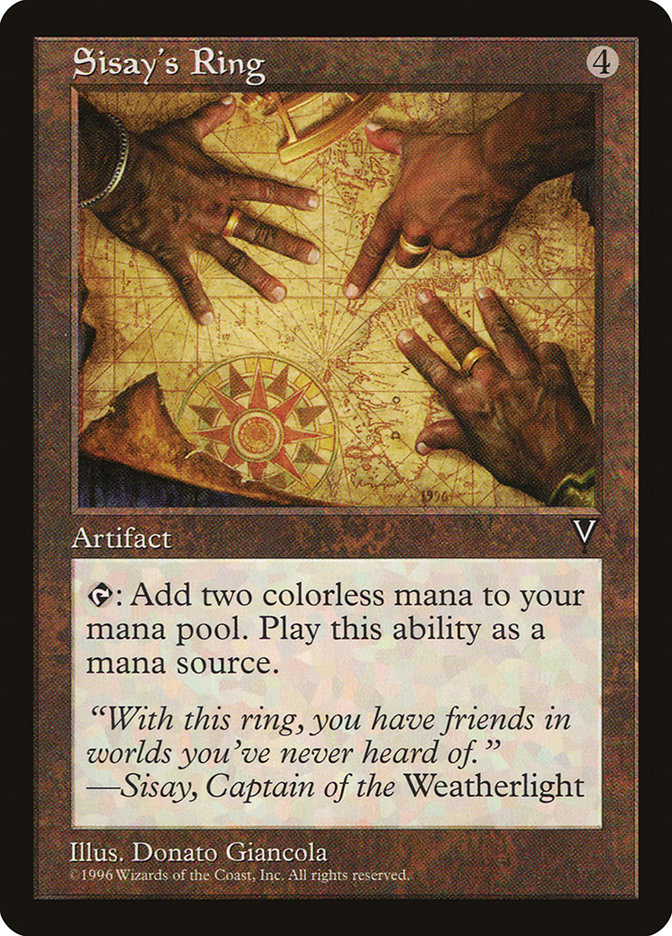
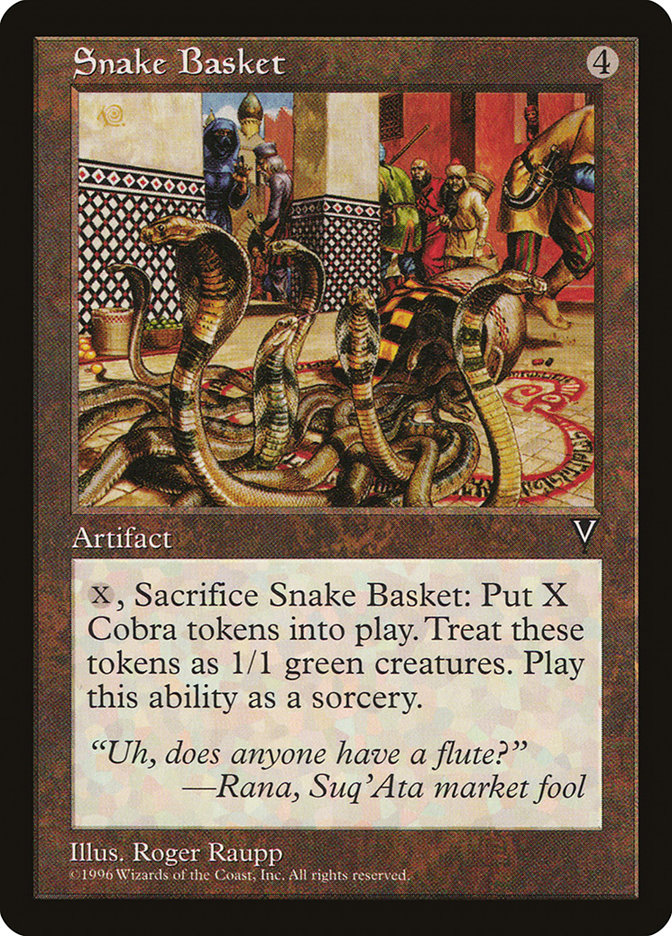

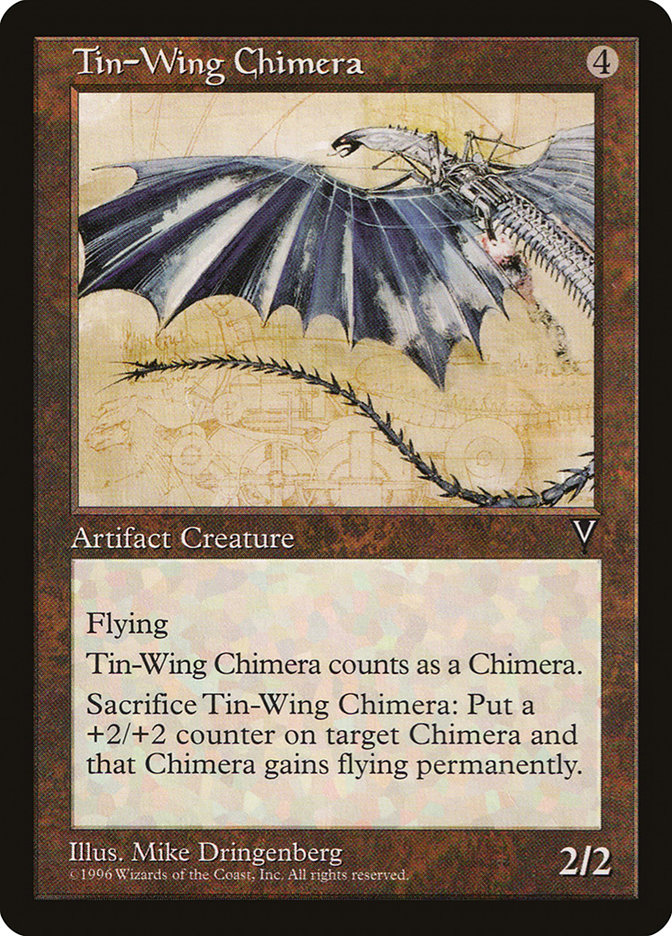
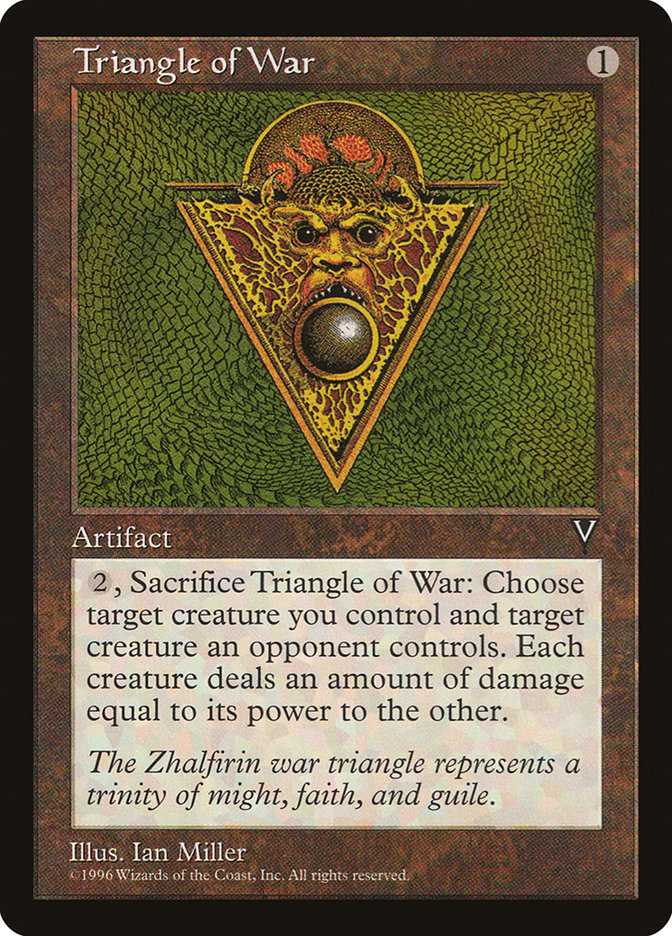
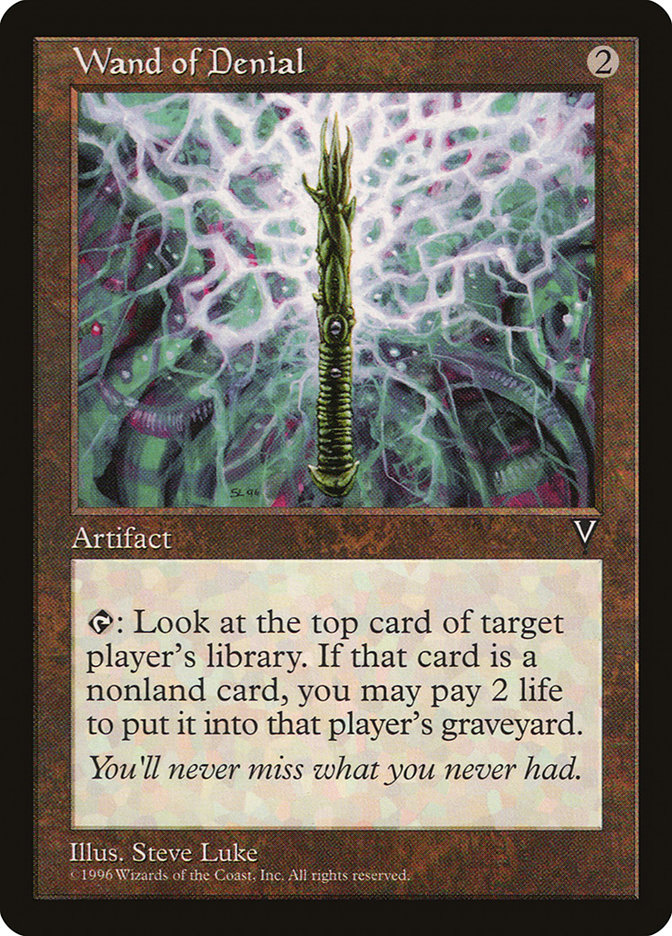
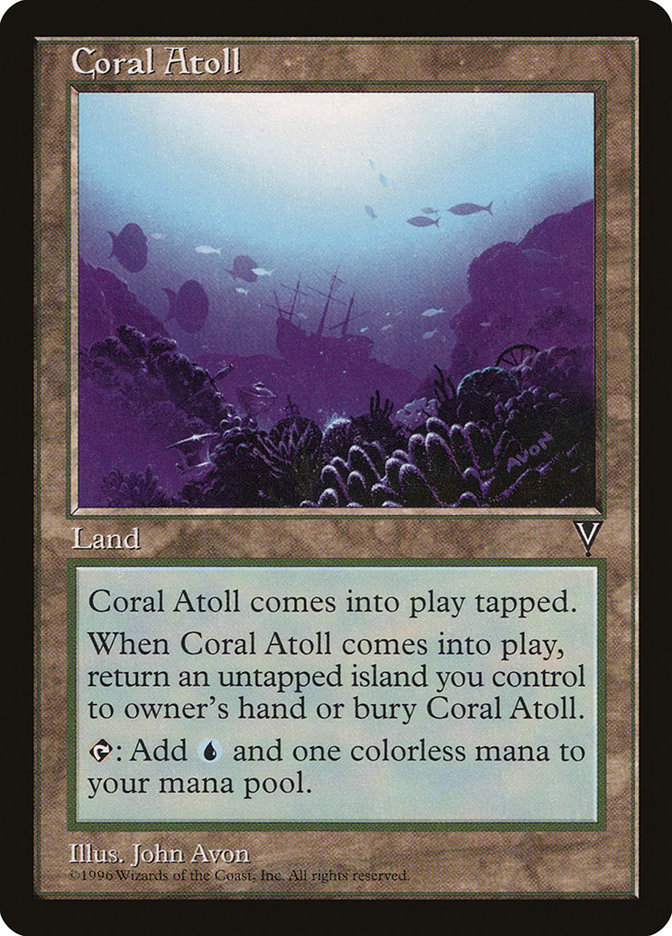
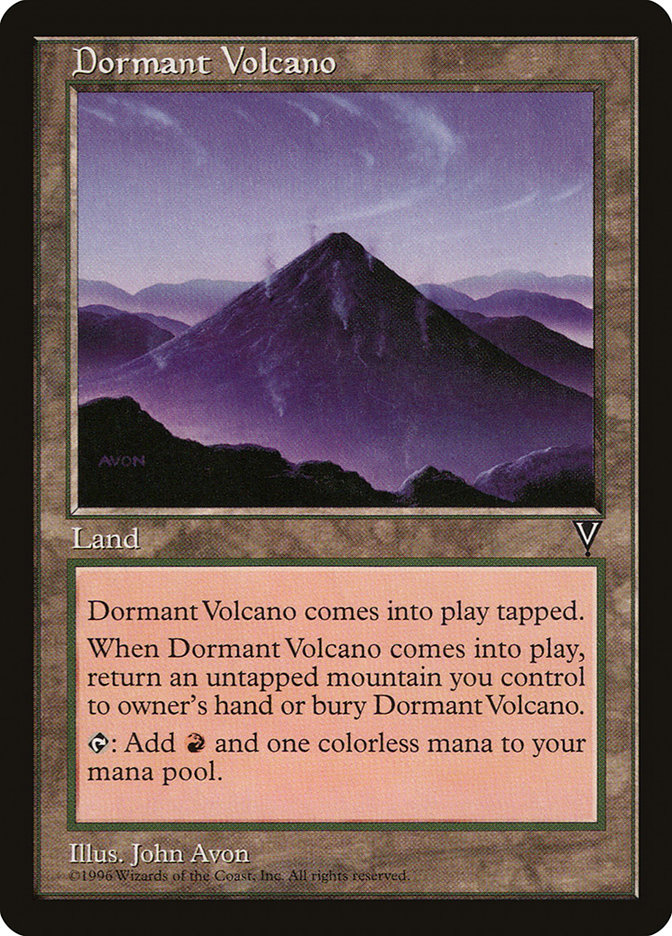
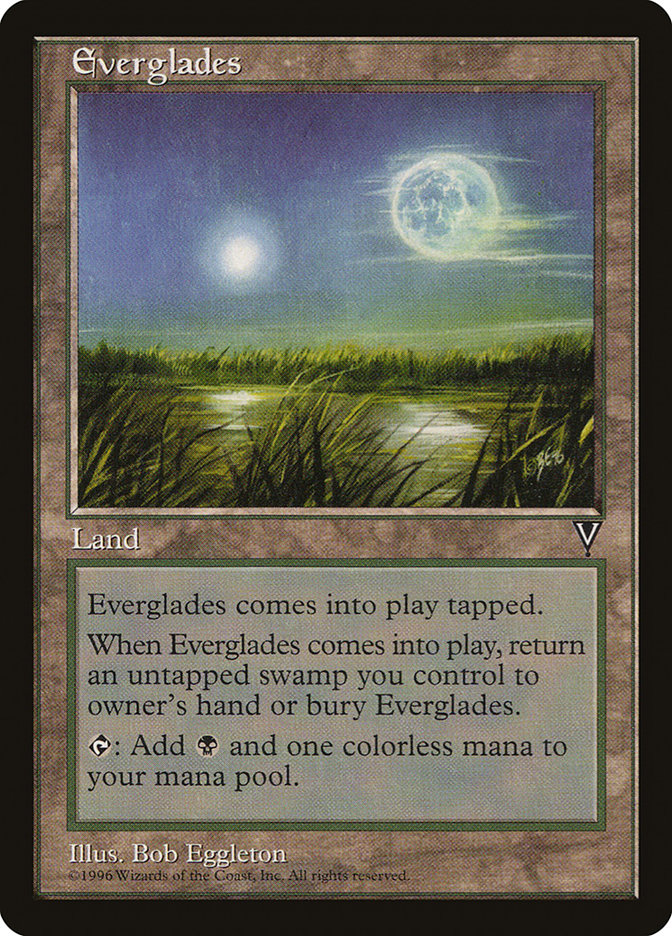
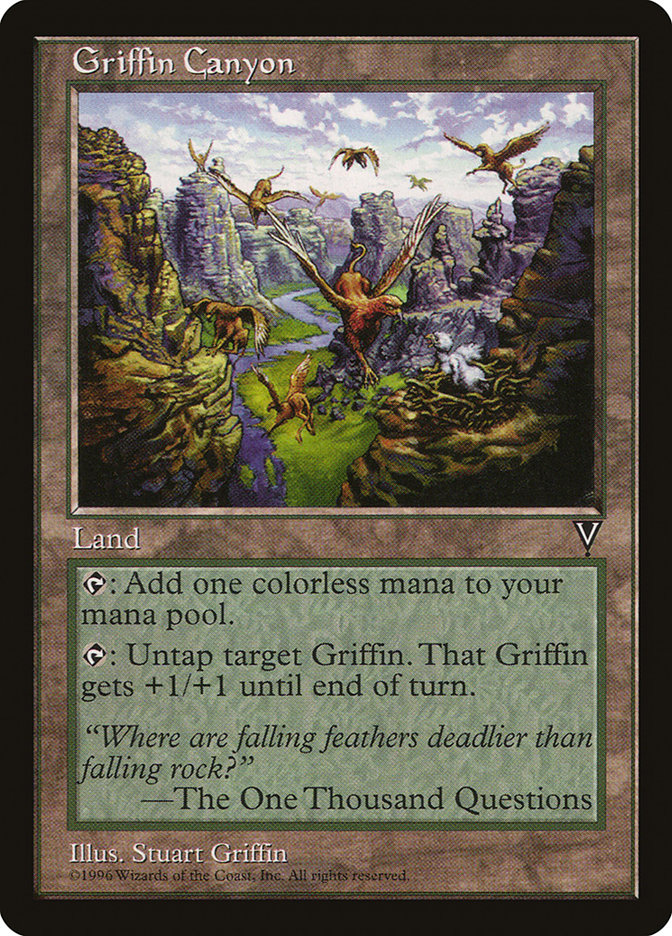
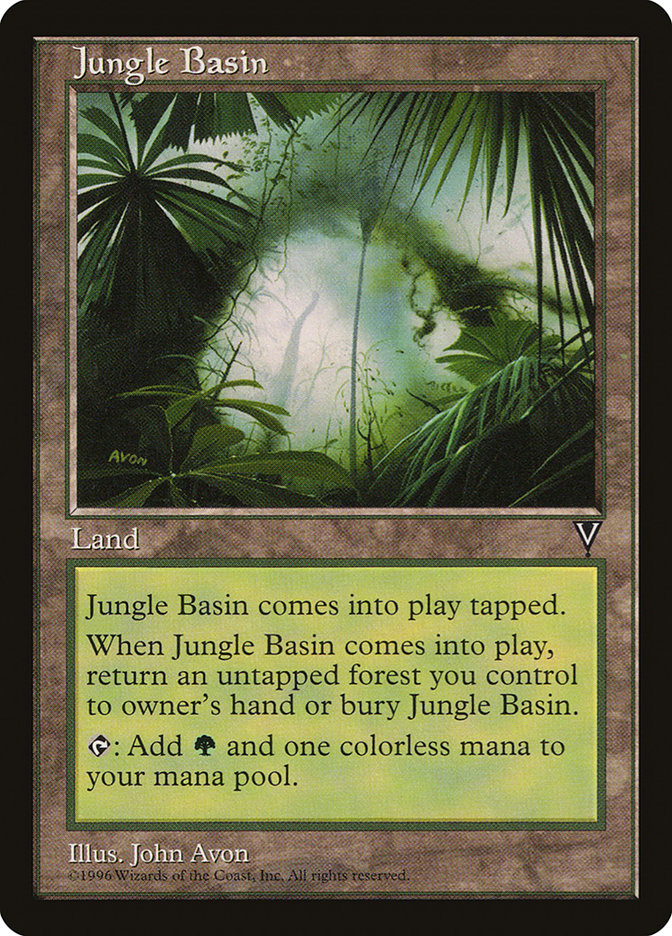
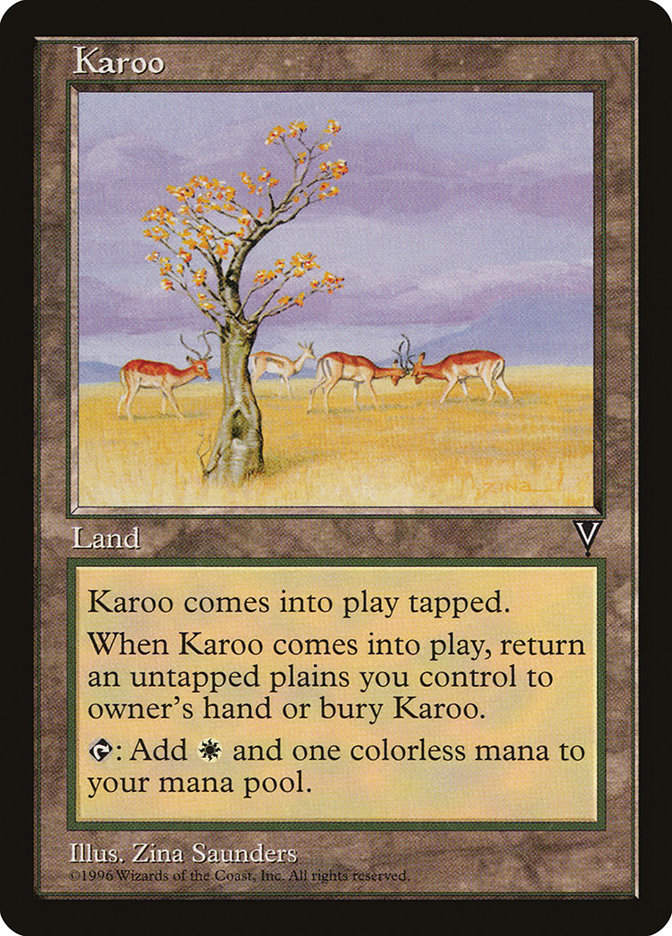
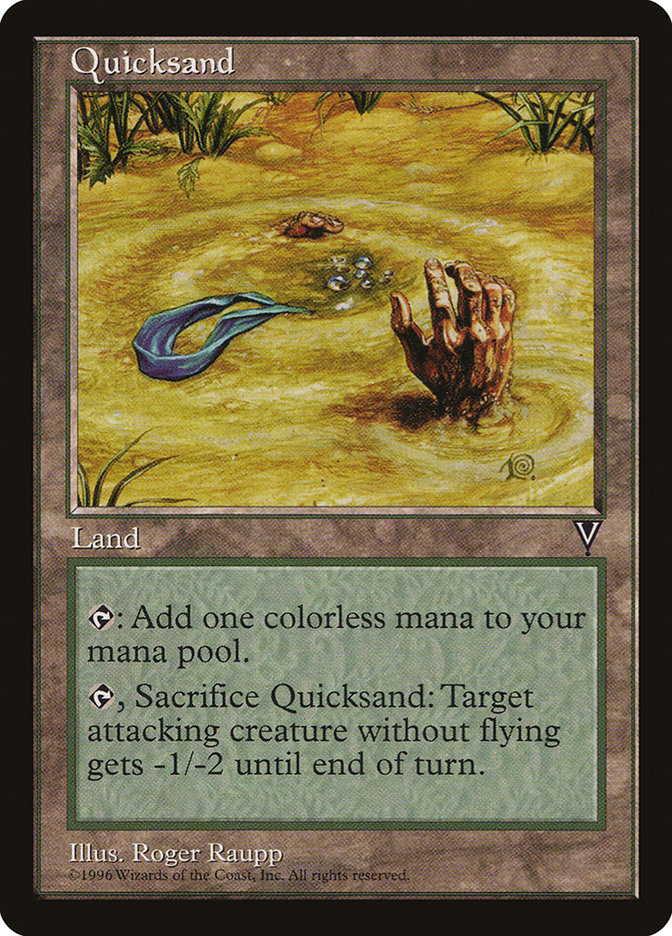
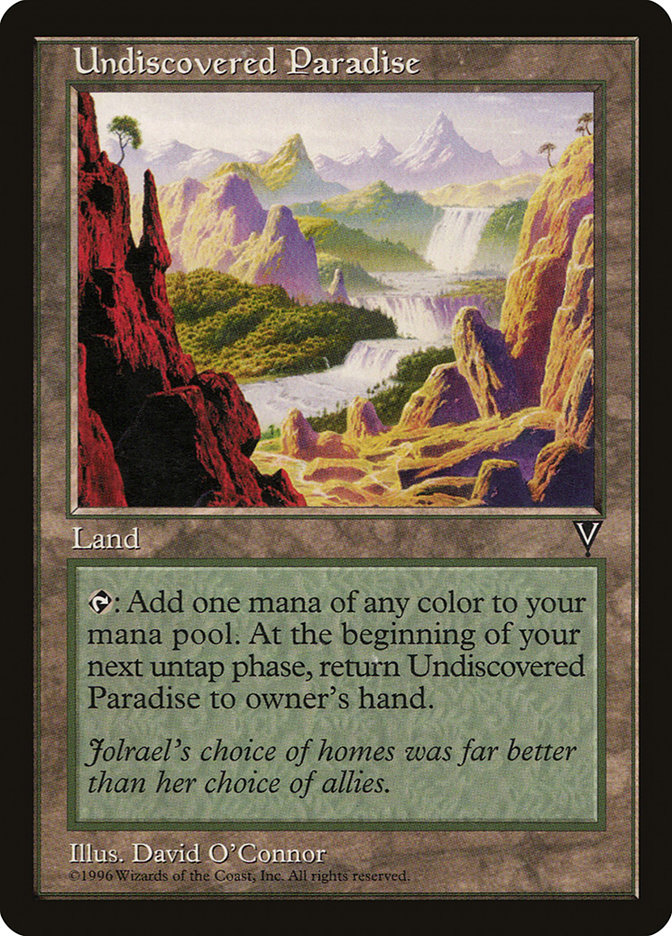
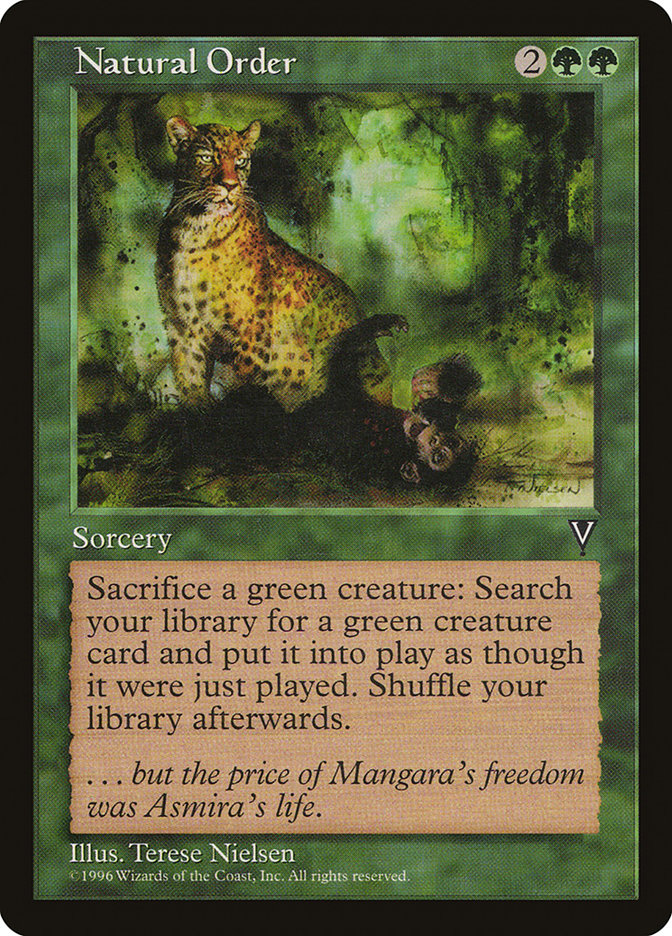
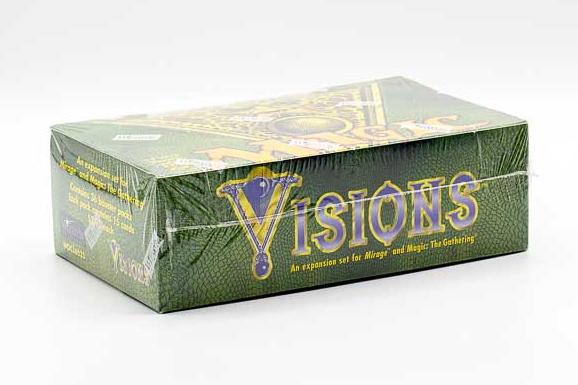


Add Comment